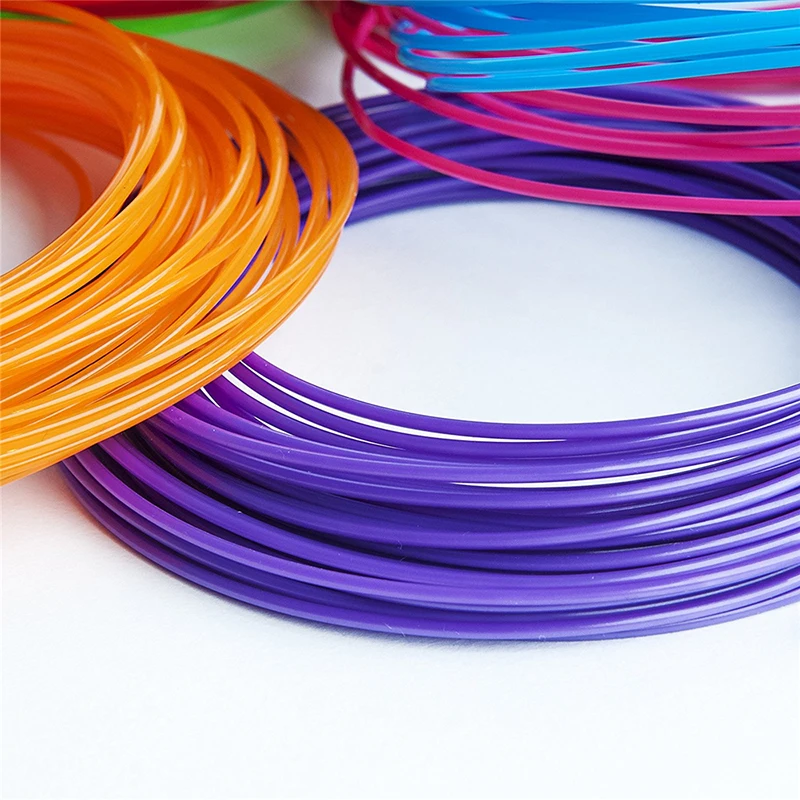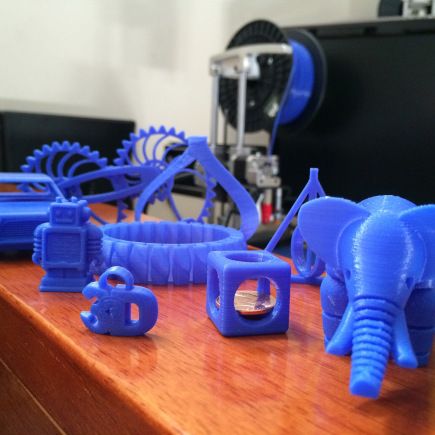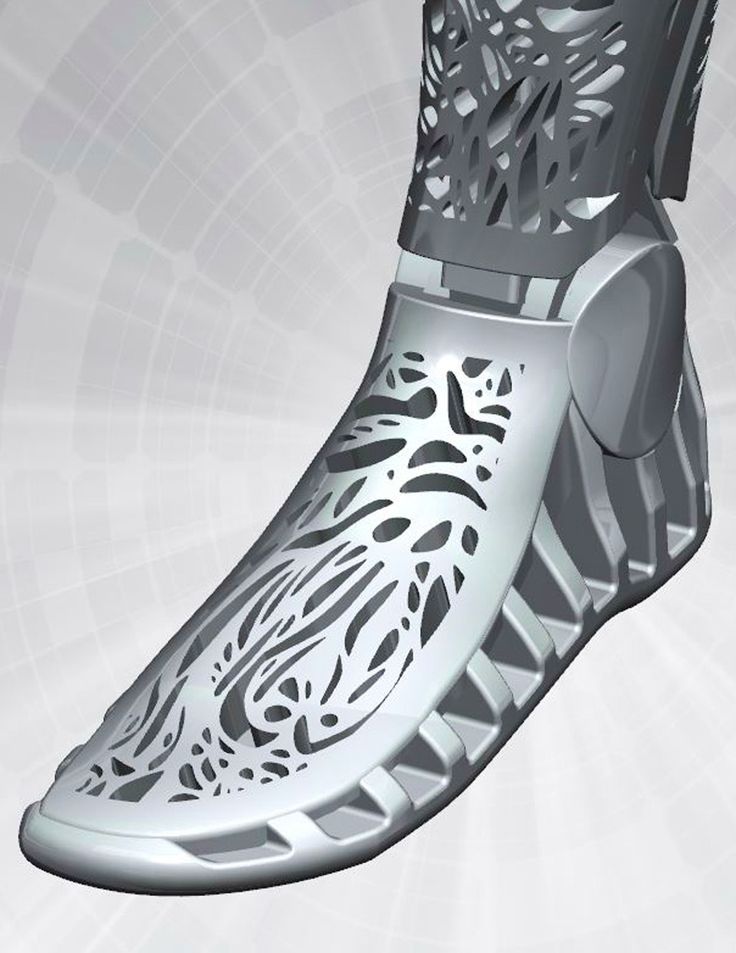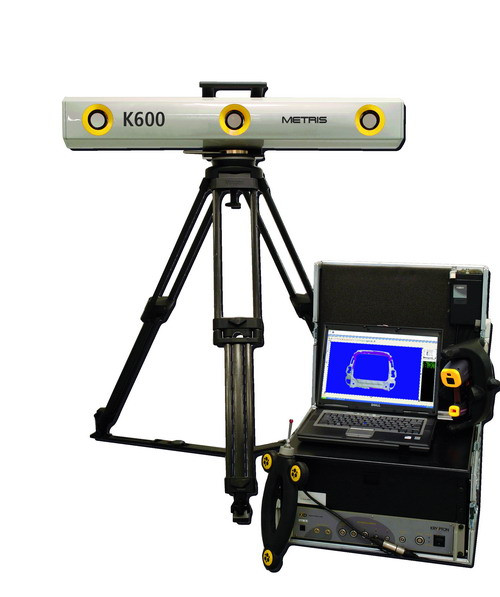3D printer filament materials
3D Printer Filament Types and Uses
WHITEPAPER
Filament Types
B.Diallo
Signup or download the pdf version to get notified when we publish the latest guides.
Share on facebook
Share on twitter
Share on linkedin
INTRODUCTION
The purpose of this guide is to introduce the different 3D printer filament types that are available and their uses. This can range from producing visual prototypes in industries such as design to helping you pick the right filament when you need to make functional prototypes.The guide is designed to be easy and clear with minimum complexity so it can be quickly referenced when needed.
Currently we offer 8 standard filaments which are Engineering PLA, ABS filament , PETG filament , NYLON , a carbon fibre filament composite, PVA, HIPS , Flexible filament (TPU) and Polypropylene. However, due to the implementation of the market leading E3D hot-ends, the Bolt Pro can feasibly print with all current filaments in the market.
The guide will outline the unique characteristics of each filament, including specifications, the mechanical properties of each and how they are used depending on their use case.
The best 3D printer filament in the market is highly dependent on what the application is and each 3D printing material has its own advantages and disadvantages which we will explore in this guide. The main purposes is to have a simple guide to inform users what each filament is capable of and how best to maximise those attributes to achieve better 3D prints.
The guide is intended to be kept up to date to with any developments that occur and we recommend signing up to the white-paper newsletter so we can update you as developments occur.
3D PRINTING GLOSSARY OF KEY TERMS
MATERIAL COMBINATION MATRIX
The great advantage of the Bolt Pro 3D printer is it comes with dual independent extruders (IDEX).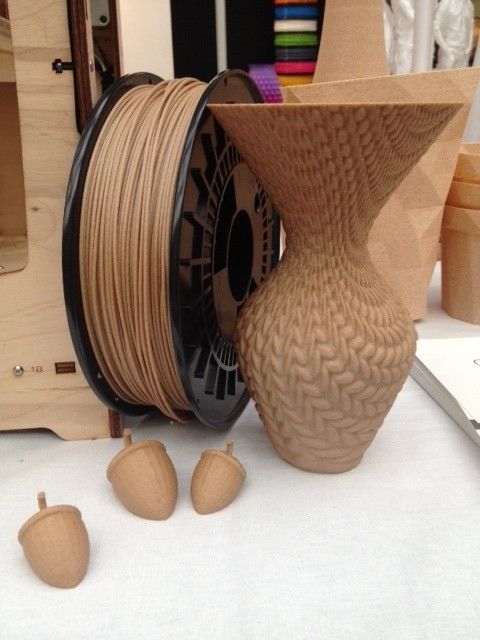 This means that users have the option of combining two materials to use one as a support or to use different colours of the same material to create unique models.
This means that users have the option of combining two materials to use one as a support or to use different colours of the same material to create unique models.
However, each 3D printing material has unique material properties and these become increasingly important when attempting to combine two different types of filaments.
The matrix below highlights which combinations work well with each other and which 3D printer filament types do not work together and which materials that can be used as breakaway support.
DISTINGUISHING FEATURES EACH 3D PRINTER FILAMENT TYPESEPLA FILAMENT
Aesthetics : Engineering PLA filament can create great visual prototypes with the added option of post processing such as painting or being able to be sanded to create great models.
Ease of use: Engineering PLA is the easiest material to work with that does not have unique work-flow requirements.
ABS FILAMENT
Heat resistant : ABS has got high heat resistant properties which is useful for functional prototypes
Wear resistant: ABS models do not scratch easily and can last long if stored properly.
High Elasticity: Very flexible and can stretch.
PETG FILAMENT
UV Resistant : Many models degrade if left out in direct sunlight, PETG is the main exception in 3D printing.
Water Resistant : PETG models can be used to store liquids or be submerged without degrading.
PP FILAMENT
Chemical Resistant : PP is highly resistant to chemicals and cannot be combined to anything apart from itself.
Fatigue Resistant : PP models do not break easy from repeated flexural forces.
CARBON FIBRE FILAMENT
High Strength : Carbon is added to a base filament to increase strength and rigidity in the final model.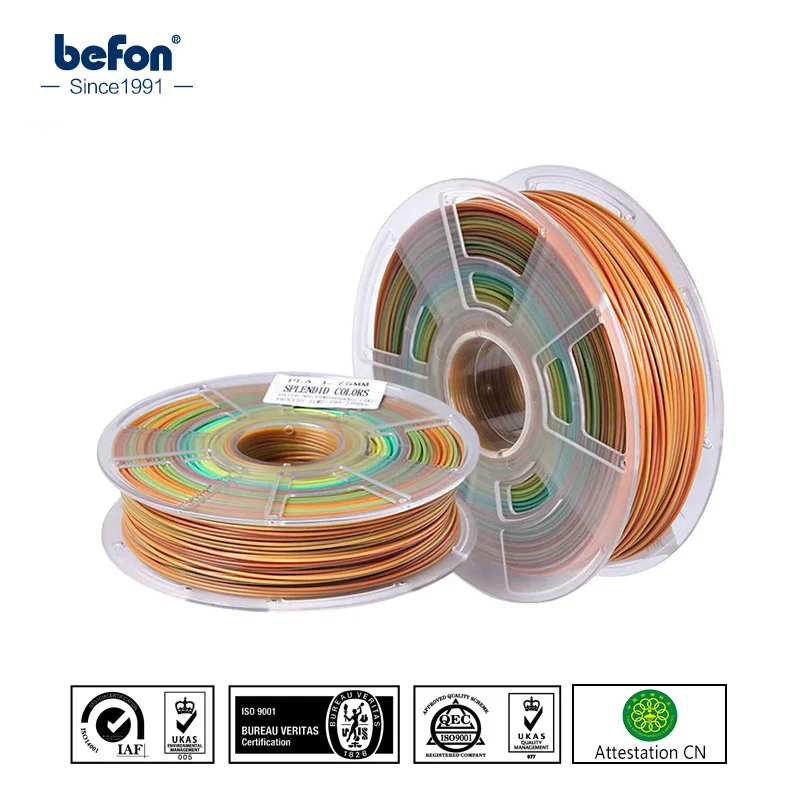
NYLON FILAMENT
Low Friction : Great for models that require movement without degrading.
FLEX FILAMENT
Elasticity: Elastic parts like phone cases and grips can be made with flex
HIPS FILAMENT
Soluble material : HIPS dissolves in citric based acids.
Impact Resistant : HIPS is highlight impact resistant and can withstand forces for various functional applications.
PVA
Soluble Support Material : PVA dissolves in water and is used for complex geometric models.
ENGINEERING PLA FILAMENT
ENGINEERING POLY-LACTIC ACID
Engineering PLA is a version of PLA filament formulated to have higher mechanical properties like strength than standard PLA. It is catered to the high demands of current 3D printing industries that need a filament that is both easy to use, sticks well to the print bed and still has the ability to print high-quality prints without much hassle.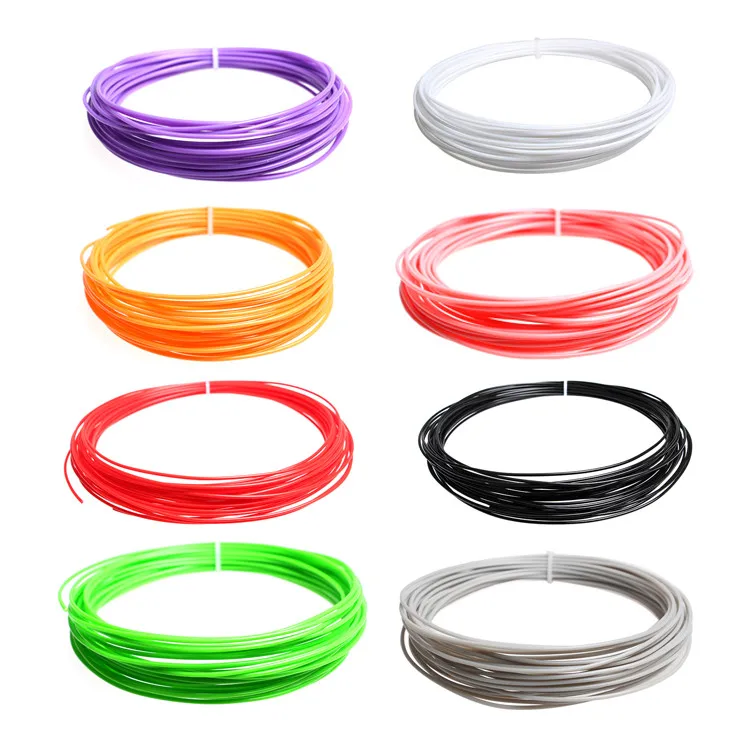 We highly recommend Engineering PLA for new 3D printing users due to its high predictability when in use.
We highly recommend Engineering PLA for new 3D printing users due to its high predictability when in use.
Material Properties
Strength
Engineering PLA strength is greater than the standard PLA and has great impact resistance for many use cases. Users can create great models and use EPLA to create tooling easily for their enterprise.
Ease
Engineering PLA has a low melting temperature and can benefit aesthetically from active cooling. This makes it a great filament to start with since it isn’t prone to warping like ABS.
Accuracy
EPLA is not prone to warping or cracking like other filaments, therefore tolerances are easier to achieve in comparison to other filaments.
Biodegradable
EPLA is derived from natural sources such as sugar-cane or corn. This makes it biodegradable and will degrade within 6-12 months if it is discarded.
Disadvantage
EPLA has some degradation issues where the colour fades as time passes, especially if it is exposed to direct sunlight.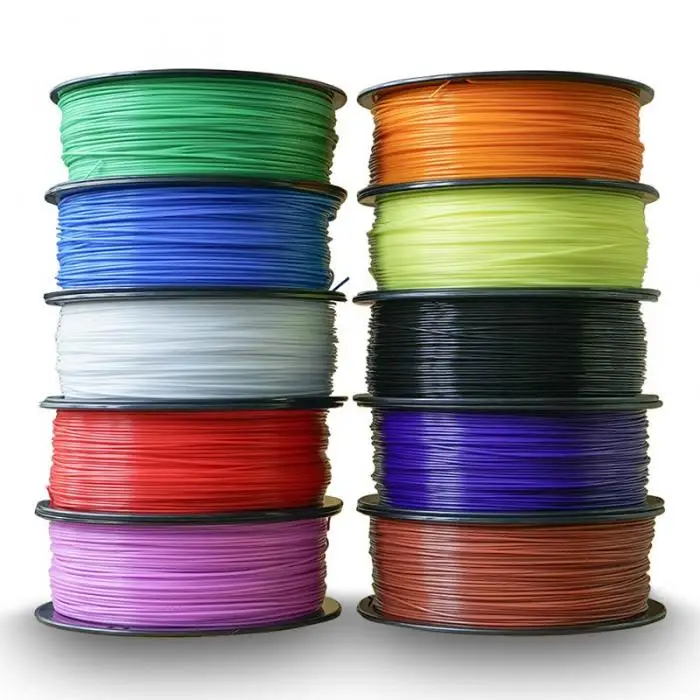
Disadvantage
EPLA does not have much heat resistant properties and it begins to soften at 60ºC.
Material SpecificationsSpool Information
Outer Diameter200 mm
Centre Hole DiameterWidthThumbscrew TensionFilament Information
Filament Diameter1.75 mm( ± 2%)
Filament WeightFilament LengthSpecific Gravity1.27 g/cm³
PRINTING CHECKLISTExtrusion
Temperature
±210 ºC
Temperature management is key with any print object. If the temperature is too high then the printing process will include a lot of oozing and mess. If instead, prints are not adhering to the bed and you are getting blobs, then the temperature may be too low.
Bed Adhesion
Temperature
±40 ºC
Engineering PLA adheres to the print surface easily. It is one of the few filaments that does so . It doesn’t require a heated bed but it is recommended due to it helping to stabilise the temperature evenly. This is very key in the early stages of the printing process. EPLA doesn’t require a heated bed but it is recommended to
It doesn’t require a heated bed but it is recommended due to it helping to stabilise the temperature evenly. This is very key in the early stages of the printing process. EPLA doesn’t require a heated bed but it is recommended to
use one at temperatures between 40-60 ºC.
Bed
Adhesion
Options
Moisture & Storage
EPLA is not highly hygroscopic and does not require specialised storage set-ups and can be stored in is original filament box, ideally in a sealed bag with a moisture desiccant.
Drying before Printing
EPLA can be dried in an oven if it is not stored properly at a maximum temperature of 50 ºC for 6-12 hours.
Cooling
Cooling works well for EPLA prints because it is less likely to warp significantly in comparison to other filaments.
Your First Layers
EPLA has good inter layer bonding meaning that layer height adjustments mainly affect the aesthetics of the model.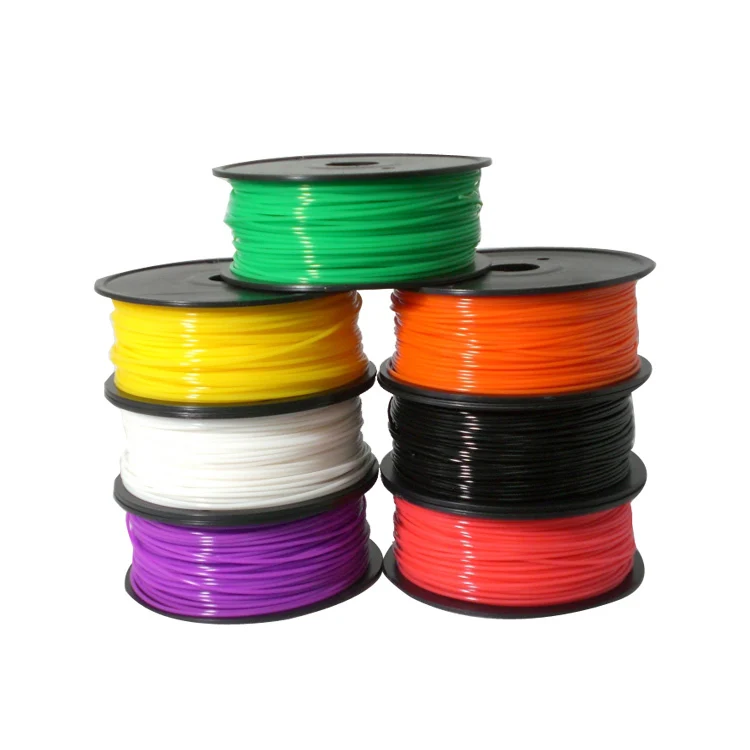
Speeds
There are a number of printing speeds that can be adjusted for the printing process with EPLA which will reduce lead times but can reduce print quality. After gaining experience, this can help you determine how to achieve the desired results at a shorter time frame.
Skirt / Brim
Not required, but helps to reduce issues for larger
parts.
Support
Material
PVA or Breakaway
Priming Pillar
Used when printing with scaffold or dual colour models.
INDUSTRY EXAMPLE PRINT
Aircraft Bracket 3D Model
Engineering PLA parts are a great way to test out the aesthetics of a part. Once printed, parts can be easily painted to create parts with good tolerances to check fit and form for any project.
The part seen here is a topology optimised bracket for a aircraft which was printed using a breakaway support that was easily removed with a pair of pliers.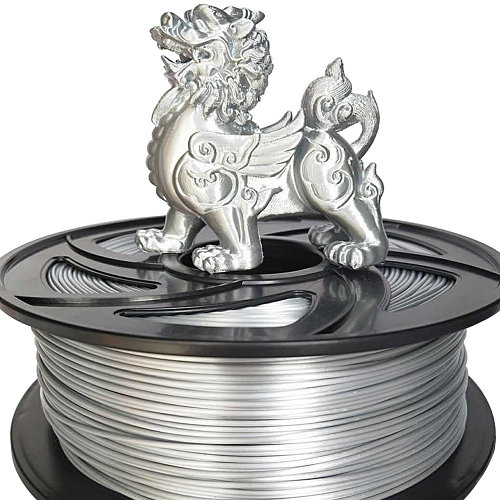
Engineering PLA has also great dimensional accuracy to test out various designs and how they can fit together to create a final product. It is easy to print and users can create many parts quickly using mirror mode on the Bolt Pro which can print two parts at once.
3D MODEL
FINAL PRINT
Previous
Next
ABS FILAMENT
ACRYLONITRILE BUTADIENE STYRENE
ABS filament is widely used already in standard manufacturing and this is due to it being highly durable and with the benefit of great strength. It is used to create visual prototypes, functional prototypes, tooling and also moulds that can be burnt away.
Although popular, ABS does have some caveats that need to be taken into consideration. It produces fumes when melted and needs to be enclosed during the printing process. Additionally, it is highly prone to warping due to high shrinkage during cooling and requires a heated print bed.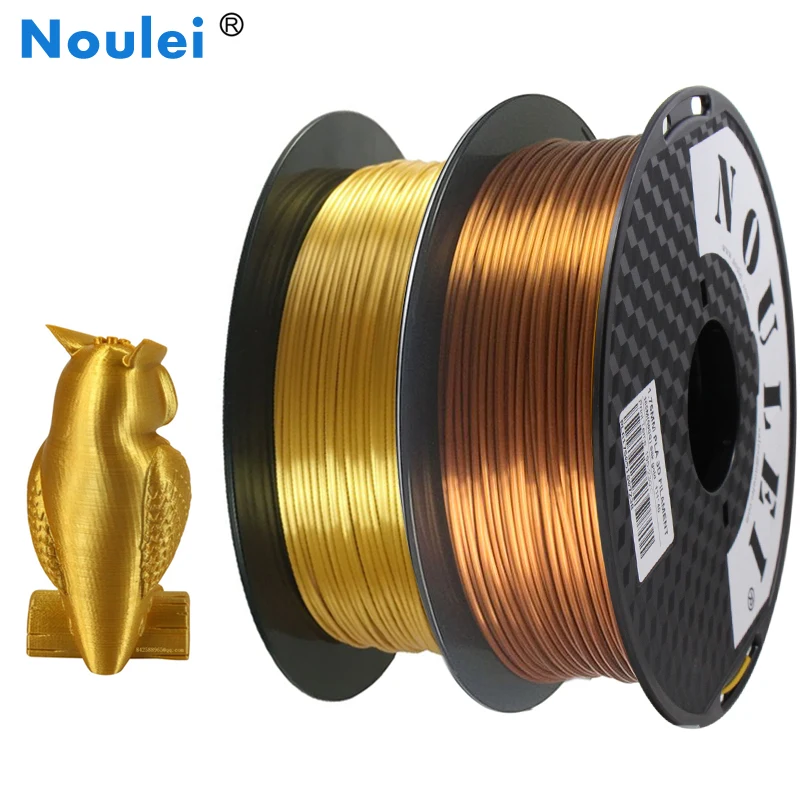
Material Properties
Strength
ABS offers great strength for parts and is often used to create tooling. It is more durable than EPLA and is often chosen because of this despite it having more stringent print settings.
Heat Resistant
Another desired property that ABS offers is it is highly heat resistant, which makes it ideal for a wide range of engineering needs.
Impact Resistant
ABS offers parts that are less brittle than EPLA parts. It is slightly more ductile, which creates parts that can withstand high impact situations.
Rigid
ABS printed parts are also highly rigid and do not bend easily. This property compounded with its strength properties means that parts can withstand stresses far more than EPLA.
Disadvantage
ABS can warp significantly during the printing process. This is especially pronounced at the edges of your model as some areas cool faster than others which can pull the model of the print bed. This can be mitigated with proper adhesion techniques.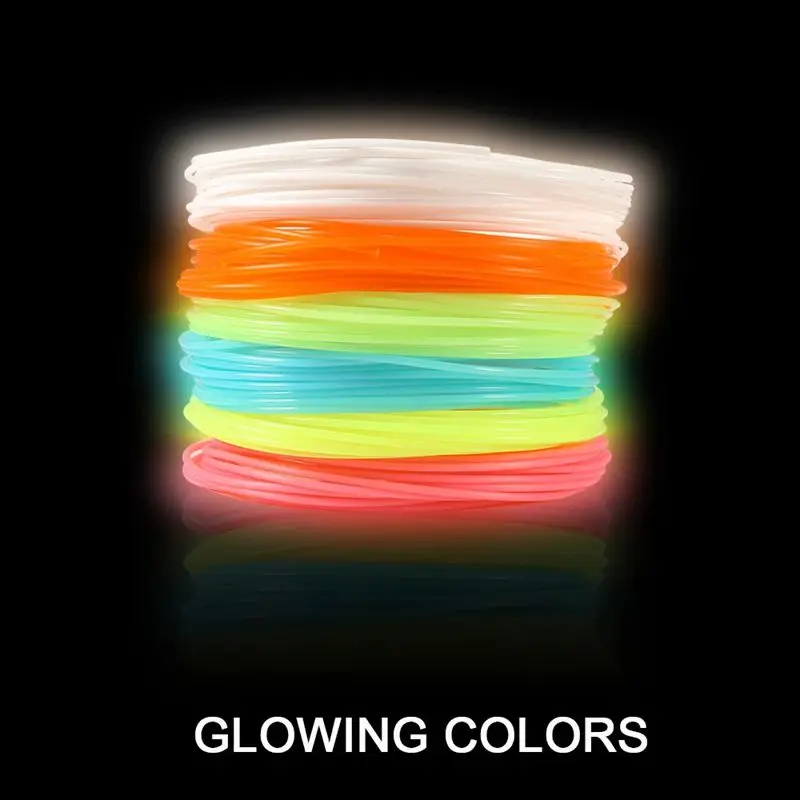
Disadvantage
Due to shrinkage, ABS has lower dimensional accuracy in comparison to EPLA or HIPS for example.
Material SpecificationsSpool Information
Outer Diameter200 mm
Centre Hole DiameterWidthThumbscrew TensionFilament Information
Filament Diameter1.75 mm( ± 2%)
Filament WeightFilament LengthSpecific Gravity1.04 g/cm³
PRINTING CHECKLISTExtrusion
Temperature
±230 ºC
ABS requires higher temperatures to be extruded. It is more sensitive to temperature during the printing process. One thing to note is ABS produces fumes when heated and requires printing with the enclosure closed.
Bed Adhesion
Temperature
±90 ºC
ABS has significant shrinkage when it is cooled. Because of this , it can causes warping where certain areas cool faster, shrink and pull on the layer structure when it is still molten.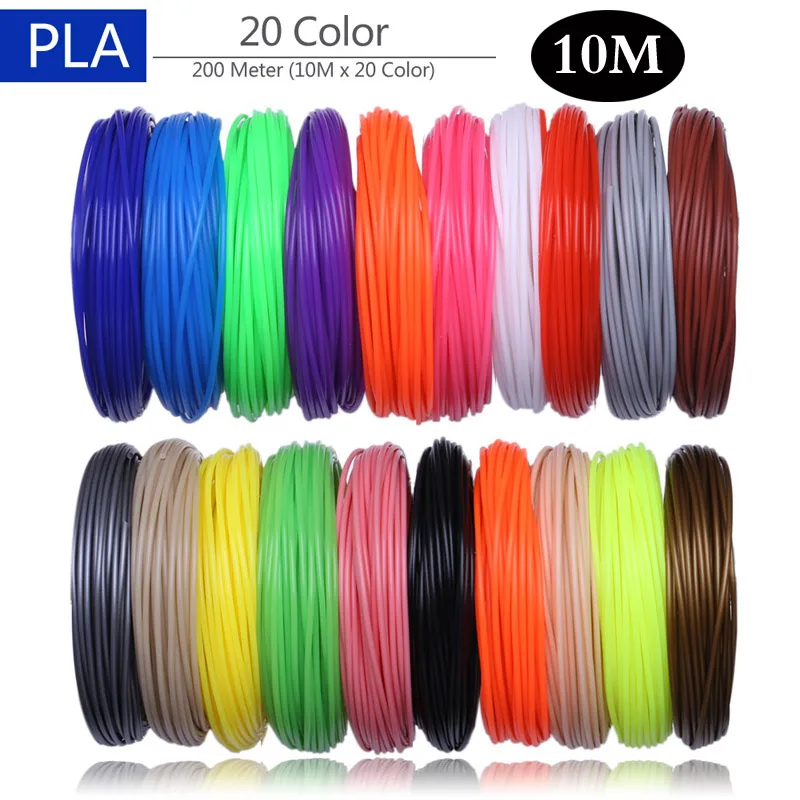 A heated print bed allows for these areas to remain temperature stable and reduces shrinkage. The addition of the flex-plate gives you the feature of easily being able to remove parts without damage. Printing larger parts can also face significant warping, therefore the best approach is to print parts using the enclosure after you ensure that the first layer is optimised. This will involve accurate bed levelling and using skirts and brims to help check that the extrusion process is proceeding accordingly.
A heated print bed allows for these areas to remain temperature stable and reduces shrinkage. The addition of the flex-plate gives you the feature of easily being able to remove parts without damage. Printing larger parts can also face significant warping, therefore the best approach is to print parts using the enclosure after you ensure that the first layer is optimised. This will involve accurate bed levelling and using skirts and brims to help check that the extrusion process is proceeding accordingly.
Bed
Adhesion
Options
Moisture & Storage
ABS is hygroscopic and requires to be stored away from open air. A good indication of too much moisture in the filament is excess fumes and oozing occurring while printing. Storing it with Silica bags will aid in the removal of excess moisture.
Drying before Printing
Although the filament softening temperature for ABS is at 80 ºC, the spool holder can be a different material and using an oven for 6-16 hours at 50 ºC should sufficiently dry the ABS filament and keep the spool intact.
Cooling
Considering that ABS has significant shrinkage during cooling, you should not use any cooling settings when printing otherwise your print will warp excessively.
Your First Layers
Increasing layer height may produce more visible plateauing because the effect of increasing layer heights which in the same vain increases the extrusion volume. This therefore needs to be taken into consideration when printing smaller parts.
Speeds
There are a number of printing speeds that can be adjusted for the printing process. For ABS it is good to keep speeds consistent during the printing process which will improve print quality.
Skirt / Brim
Recommended for ABS parts, both large and small.
Recommended for large surface area parts.
Support
Material
When printing with a support material, ABS goes best with HIPS due to the similar extrusion temperature. When printing is complete, HIPS is soluble in d-limonene and the model can be submerged in it where the HIPS dissolves away.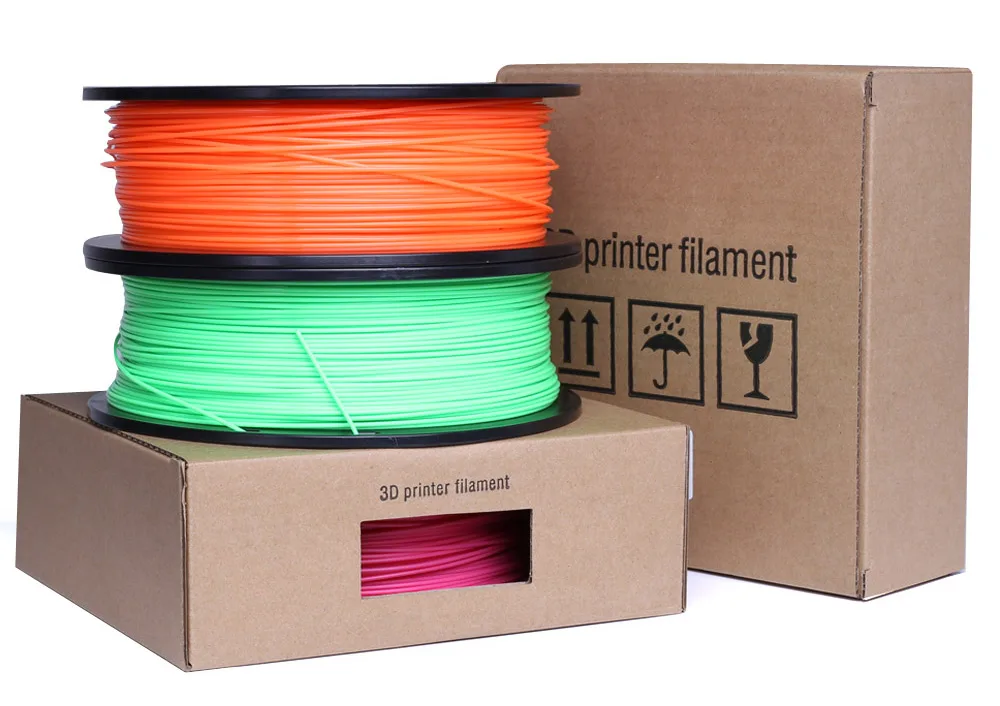
Priming Pillar
Required when using two materials such as HIPS as a support for ABS or a dual colour print.
INDUSTRY EXAMPLE PRINT
EDUCATIONAL MOLECULE PRINT
The model here was printed with ABS and HIPs as a support material. Although it is great for functional prototypes, it is also effective for visual parts because it can be post processed to achieve better visual fidelity.
Parts can be dropped and withstand various stresses which is great for long lasting prototypes or in this case a part that can be used for education demonstrations where it would likely face some wear and tear.
3D MODEL
FINAL PRINT
Previous
Next
PETG FILAMENT
POLYETHYLENE TEREPHTHALATE + GLYCOL
PETG is a very durable and a great material for a wide range of engineering requirements. Outside 3D printing, it is the most widely used plastic that is often used to create plastic liquid bottles.
Outside 3D printing, it is the most widely used plastic that is often used to create plastic liquid bottles.
This is due to its great ability to last and withstand abrasion. It offers parts that are strong and when printed with less infill, the parts are slightly flexible just like standard water bottles.
Material Properties
Strength
PETG is very strong and this allows it to withstand high pressures in comparison to other filaments. This is especially pronounce in load bearing applications.
Chemical Resistant
Considering its use in the creation of various containers, PETG is not affected by a wide selection of chemicals and this property is useful in certain engineering projects.
Impact Resistant
PETG has very high impact resistant properties with the added benefit of being ductile. This means its less brittle than ABS/EPLA and won’t break easily if a force is applied.
UV Resistant
In contrast to ABS, PETG parts aren’t affected as much by UV radiation and can withstand it better.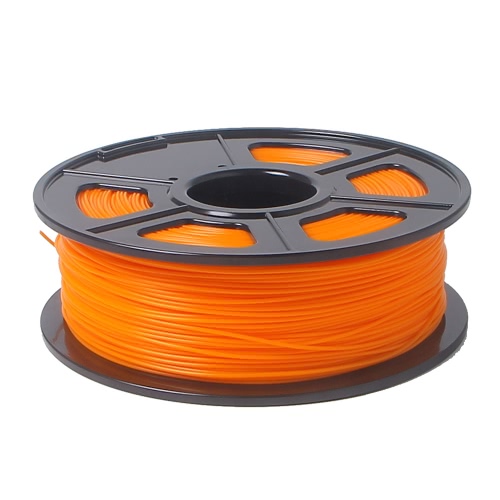
Disadvantage
Although strong, PETG parts scratch easy in comparison to other materials like PP.
Disadvantage
PETG can string a lot during the printing process.
Material SpecificationsSpool Dimensions
Outer Diameter200 mm
Centre Hole DiameterWidthThumbscrew TensionFilament Information
Filament Diameter1.75 mm( ± 2%)
Filament WeightFilament LengthSpecific Gravity1.27 g/cm³
PRINTING CHECKLISTExtrusion
Temperature
±230 ºC
PETG has a relatively high melting temperature. When it is molten, it has more elasticity properties than other non flexible filaments.
Bed Adhesion
Temperature
±70 ºC
PETG may have adhesion issues with standard beds, therefore it is recommended to use a heated bed. This will ensure proper adhesion and reduce warping during the printing process. To aid with adhesion, using a brim can help reduce possible warping especially with large surface area parts.
To aid with adhesion, using a brim can help reduce possible warping especially with large surface area parts.
Bed
Adhesion
Options
Moisture & Storage
PETG is highly resistant to liquids, this is not the same as being hygroscopic which PETG is and not storing it in a sealed air tight bag can affect print quality. A print with blobs and oozing is an indicator of this.
Drying before Printing
Similar to ABS, PETG has a high melting temperature but should be dried for 6-16 hours at 50 ºC if it is not stored properly to reduce moisture content.
Cooling
Cooling PETG is not required and is only beneficial for smaller parts with complex geometries.
Your First Layers
Layer height for PETG is a dependent on the requirement of the model. Smaller layer heights improve the overall aesthetics of the object.
Speeds
Optimising print speeds also can improve surface finish and how glossy the model becomes. PETG is prone to oozing and stringing therefore slower speeds can help. Furthermore, it is difficult to get good bridging with PETG because of this and needs to be taken into consideration when choosing what model to print.
PETG is prone to oozing and stringing therefore slower speeds can help. Furthermore, it is difficult to get good bridging with PETG because of this and needs to be taken into consideration when choosing what model to print.
Skirt / Brim
Not require, but if your model has issues adhering to the print bed, this may aid in reducing warping issues.
Support
Material
PVA or PETG breakaway.
Priming Pillar
Used when printing dual colour or with breakaway support.
INDUSTRY EXAMPLE PRINT
FUNCTIONAL PROTOTYPES
PETG is most associated with the production of bottles or containers because of its great chemical resistant properties. Apart form that however it has many other uses cases, especially in additive manufacturing.
One use case is to print outdoor brackets for various applications where a part is needed to withstand the effects of wear and tear where other thermoplastics would degrade rapidly if exposed to similar conditions.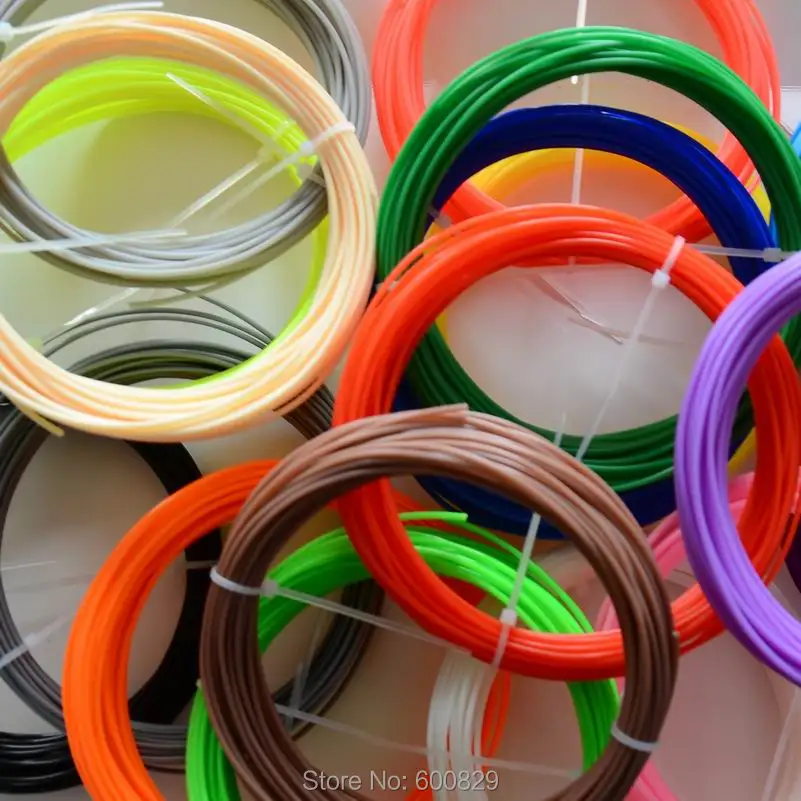
Furthermore, it can also be used to create snap to fit components because PETG is ductile, especially when parts are thinner, while increasing infill makes it more stiff and rigid.
3D MODEL
FINAL PRINT
Previous
Next
NYLON FILAMENT
POLYMIDE
Nylon filament is a material that offers high durable and strong printed parts. Additionally, when printed at lower infill amounts, it can create slightly flexible parts.
Although similar to PETG, it offers far greater durability for engineering functional parts with the slight advantage of offering very low coefficient of friction parts.
Material Properties
Strength & Durability
Nylon is one of the strongest and most durable filaments on the market. It offers parts that can resist wear and tear and also offer great tensile strength.
Low Friction
Having a low coefficient of friction means that Nylon is a great material for producing parts like gears or parts that require motion.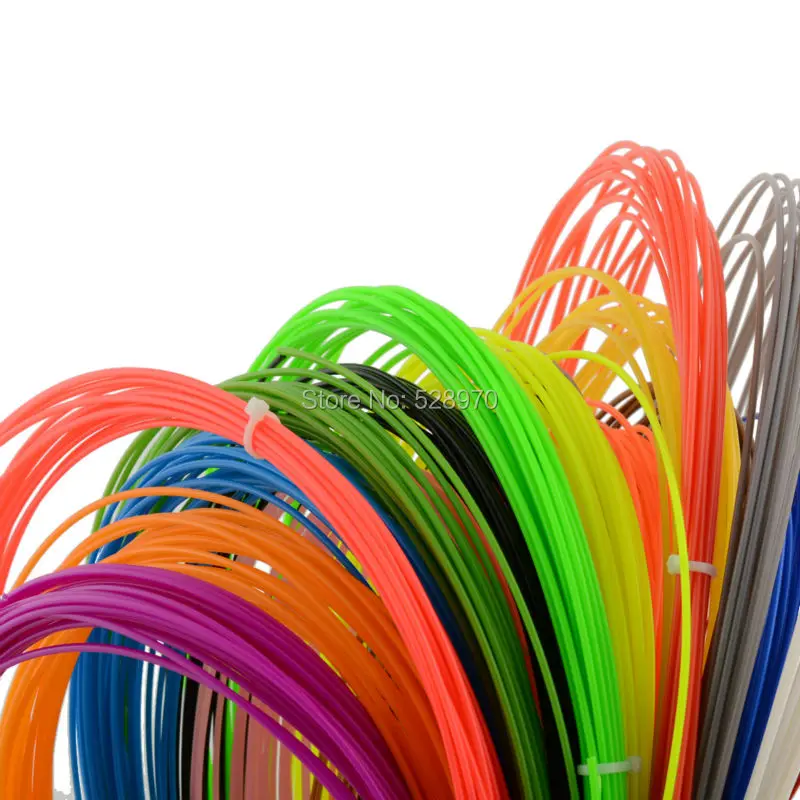
Impact Resistant
Nylon parts have great impact resistance and can absorb impact forces with minimum deforming. They give users versatile options for prototyping applications.
Heat Resistant
Nylon allows for the creation of various engineering parts that can withstand high temperatures. Combining this attribute with the low friction feature can create strong functional prototypes.
Disadvantage
Achieving optimum bed adhesion can be challenging when printing with Nylon.
Disadvantage
Nylon is highly hygroscopic which will affect print quality if the filament is not dried properly.
Material SpecificationsSpool Information
Outer Diameter200 mm
Centre Hole DiameterWidthThumbscrew TensionFilament Information
Filament Diameter1.75 mm( ± 2%)
Filament WeightFilament LengthSpecific Gravity1.08 g/cm³
PRINTING CHECKLISTExtrusion
Temperature
±250 ºC
Nylon has a high extrusion temperature but be mindful of this since it can string and ooze more if the temperature is too high.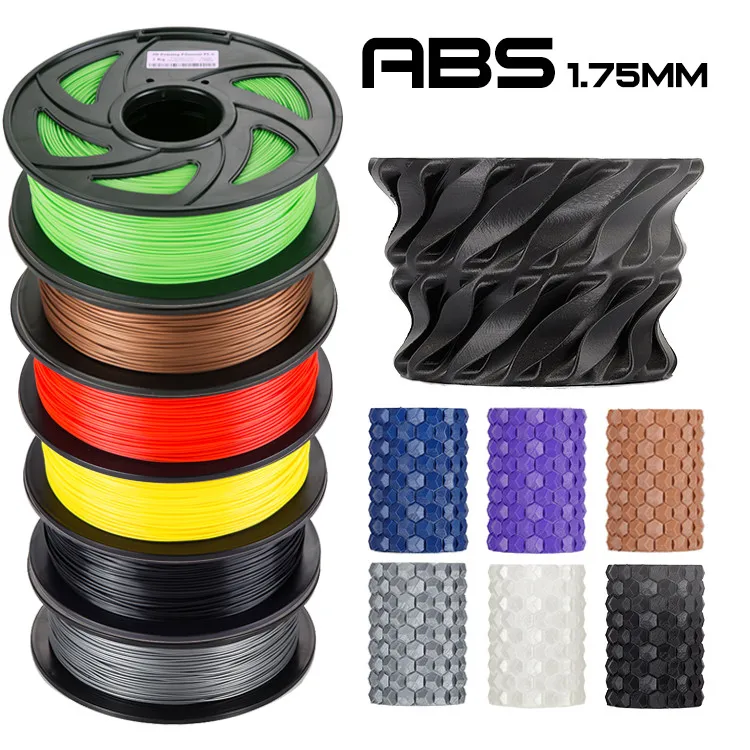 If the temperature is too low, then it will have trouble adhering to the print bed.
If the temperature is too low, then it will have trouble adhering to the print bed.
Bed Adhesion
Temperature
±90 ºC
Due to its material properties, Nylon does not adhere well with most surfaces including BuildTak and needs higher heated bed temperatures. Nylon can warp significantly during the printing process and requires J8567 stickers to keep the first layer stuck to the build-plate.
This issue also transfers to the later stages of the printing process and can lead to cracking as some layers peel away from others. To reduce this issue, we recommend printing with the enclosure closed to reduce temperature changes and prevent cracking.
Bed
Adhesion
Options
Moisture & Storage
If Nylon filament is not stored correctly, printed models will have a rougher texture and you may face lots of oozing. You may hear popping or cracking sounds that indicate that it has absorbed too much moisture.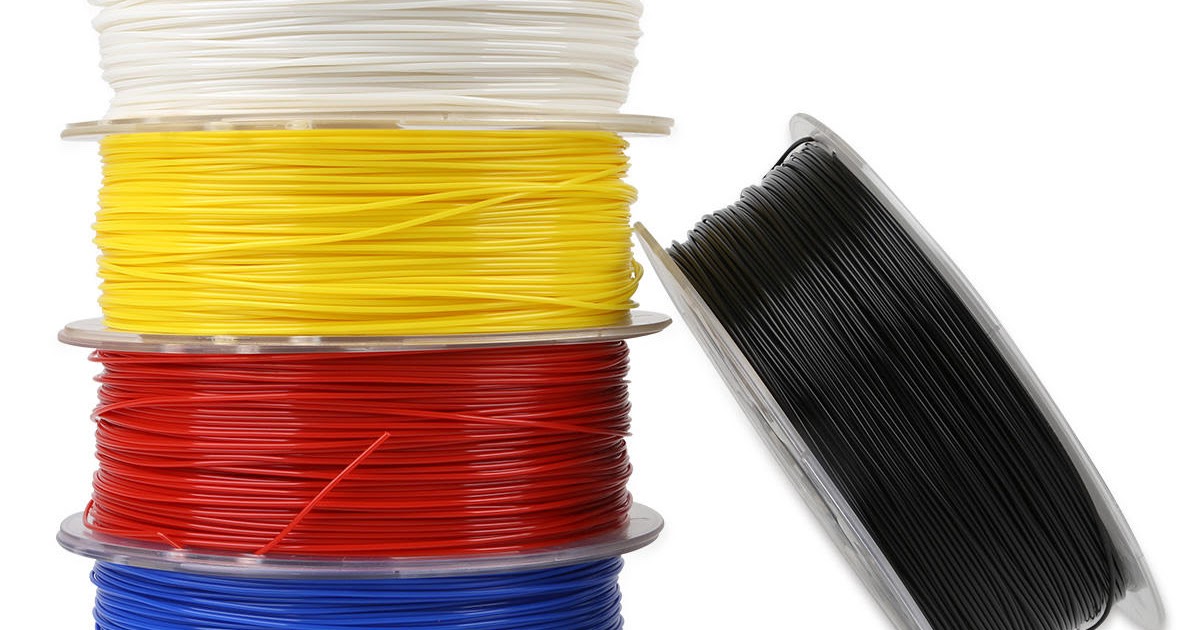
Drying before Printing
If the quality of your models are low, then drying Nylon filament in an oven for a period of 6-16 hours at 50 ºC and this should remove most of the exess moisture that has been absorbed.
Cooling
Nylon does not require cooling which can cause cracking due to shrinkage .
Your First Layers
Nylon does not have any layer height requirements apart from aesthetics. However, Nylon parts can crack, therefore increasing the shell layers can help reduce this.
Speeds
Nylon can warp and crack during the printing process and this can be reduced if inter layer bonding is increased. This is done with slower printing speeds that gives the filament time to bond correctly. Printing at higher speeds can create print failures more often.
Skirt / Brim
Not required, but helps to reduce issues, for larger parts.
Support
Material
It is recommended to use breakaway support with Nylon.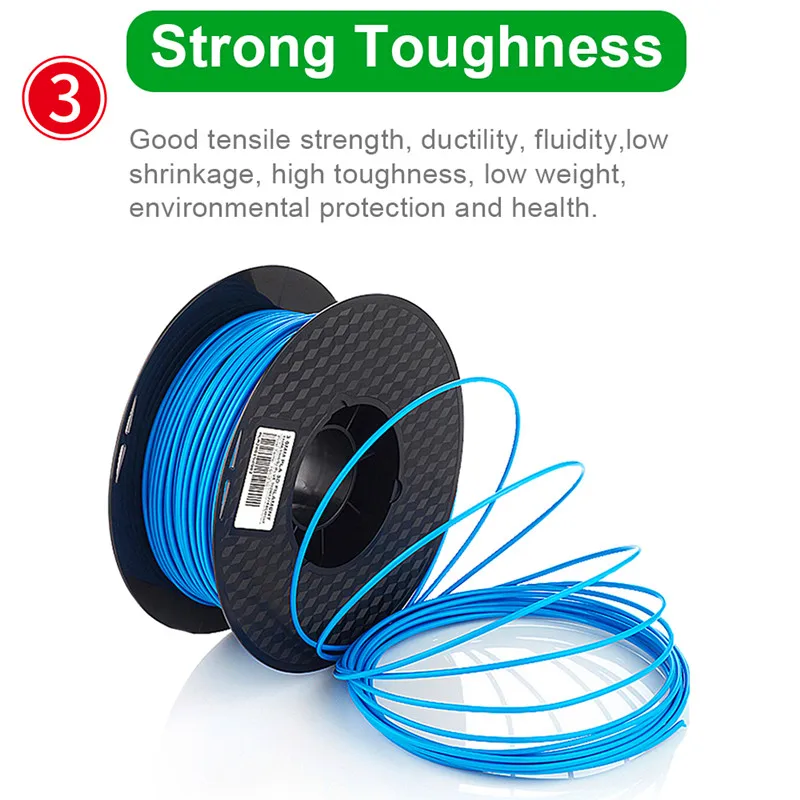
SPORT NYLON PRINT
As mention, Nylon parts have very low friction properties making it a great choice for a surfboard fin prototype. A part printed with Nylon also has the added benefit of being able to withstand high stresses which makes it ideal for tooling and functional parts that can be tested to gauge how well a design can perform in controlled situations.
3D MODEL
FINAL PRINT
Previous
Next
FLEX FILAMENT
Thermoplastic polyurethane (TPU)
Flexible filament (TPU) is created by combining a standard polymer with rubber. This creates a filament that is very similar to what is used in standard manufacturing for parts in automobiles and many household items.
The printed objects that can be created are not only flexible, but have higher elasticity than most of the other slightly flexible filaments available.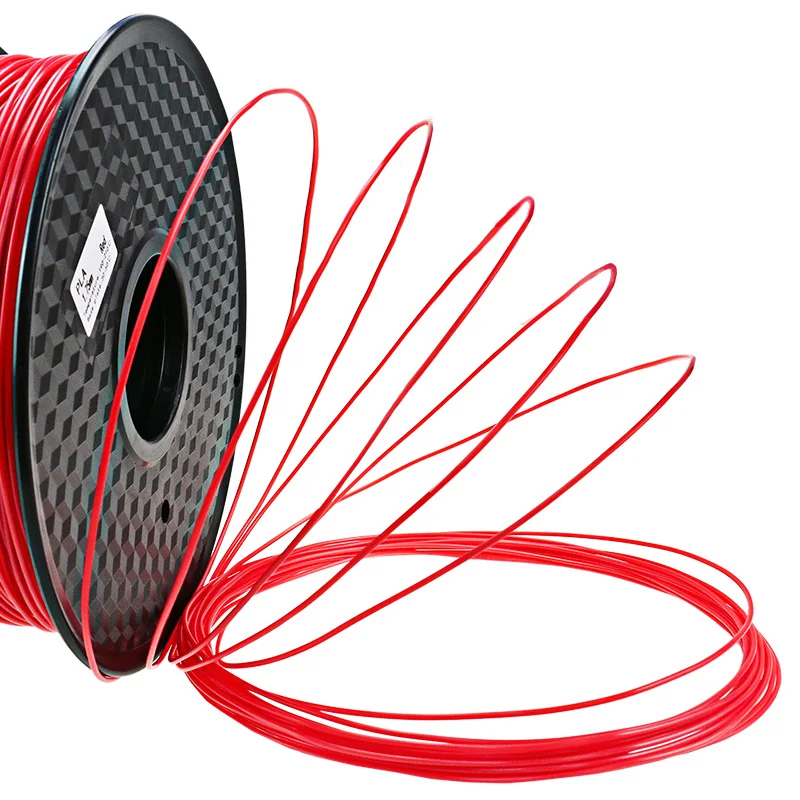
Material Properties
Elasticity
TPU parts are both highly elastic and flexible which offers a unique combination of 3D printing applications for both visual and functional prototypes.
Chemical Resistant
Parts produced with TPU are resistant to most standard chemical solutions which opens it up for a range of uses to create long lasting parts.
Impact Resistant
Flex parts are highly impact resistant due to its elastic rubber like properties.
Heat Resistant
Due to its abrasion resistant properties, coupled with the elasticity, flex parts will last and endure various stress depending on the build direction.
Disadvantage
TPU is challenging to print with because it strings significantly and can ooze. This is due to its elasticity properties making it harder to work with.
Disadvantage
TPU prints cannot be post processed after printing which can be a minus for visual prototypes.
Material SpecificationsSpool Information
Outer Diameter200 mm
Centre Hole DiameterWidthThumbscrew TensionFilament Information
Filament Diameter1.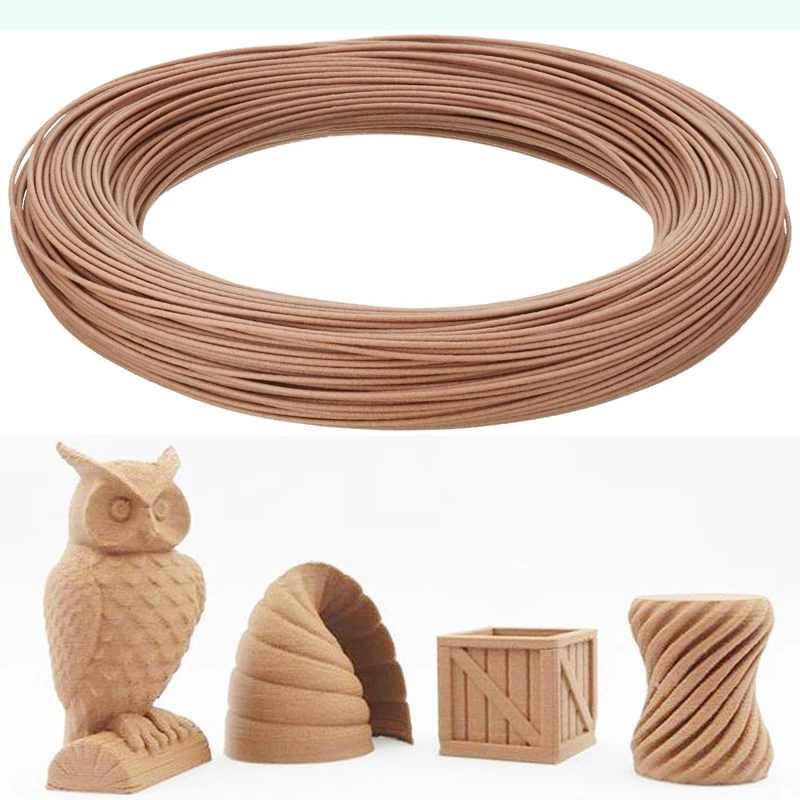 75 mm( ± 2%)
75 mm( ± 2%)
1.20 g/cm³
PRINTING CHECKLISTExtrusion
Temperature
±230 ºC
Printing with Flex may involve some testing with the optimum temperature. Due to its properties, it may string if the temperature is to high and create messy prints.
Bed Adhesion
Temperature
±70 ºC
Flex filament may face some adhesion issues when printing and requires a relatively hot heated bed to ensure the filament stays on the print surface.
Bed
Adhesion
Options
Moisture & Storage
TPU absorbs moisture very easily and requires drying before printing. Additionally using a poly-box during the printing process will also aid in keeping the material dry during the printing process which is crucial for parts that require longer lead times.
Drying before Printing
To dry TPU, it should be heated in a oven for 12 hours to reduce moisture content at 50 ºC.
Cooling
It is recommended to use cooling for TPU since it is very viscous when molten and needs to be cooled to set it during the printing process.
Your First Layers
TPU is a challenging material to print with. It has higher risk of being plagued with blobs and oozing which can create rough parts. Additionally, it has poor bridging characteristics and prints better with objects that require consistent extrusion where there are less stops and starts of the extrusion process.
Speeds
TPU prints better with slow speeds. This again is due to its ability to stretch without breakage when molten which causes oozing and stringing. Faster speeds can lead to this and slower speeds allows the material to adhere better and settle per layer .
Skirt / Brim
Not require, but helps reduce issues, for larger parts.
Support
Material
PVA but take into consideration that objects with too many overhangs will be difficult when printing with Flex.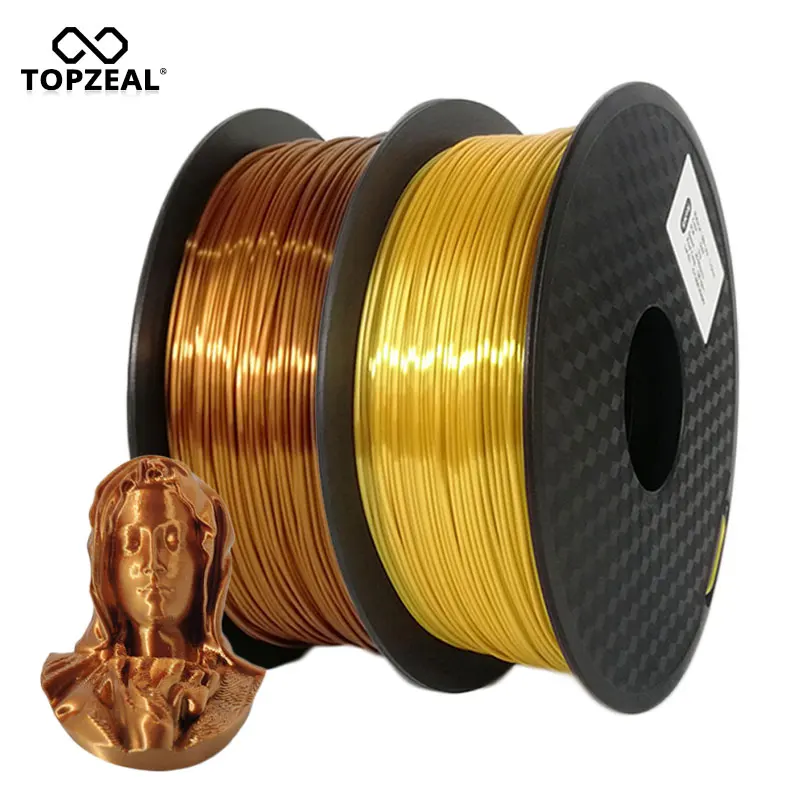
Priming
Pillar
Required when printing with support.
INDUSTRY EXAMPLE PRINTPRODUCT ACCESSORIES FLEX PROTOTYPE
TPU is often used to create parts that need to be elastic. One great use case is printing phone covers but it can also be used on other industries for example in the creation of car panel designs, shoe designs and for medical devices.
3D MODEL
FINAL PRINT
Previous
Next
PP FILAMENT
Polypropylene
PP is a recent addition in the 3D printing world and offers some unique properties that make it an important material for engineering purposes. It is a semi crystalline polymer which means on a molecular level, once the material cools, it retains its molecular structure which has attributes of added strength and durability.If printed with lower infill settings, it can create flexible parts that have almost no bending failure properties, while increasing infill can create more rigid parts , but both types retain their material properties.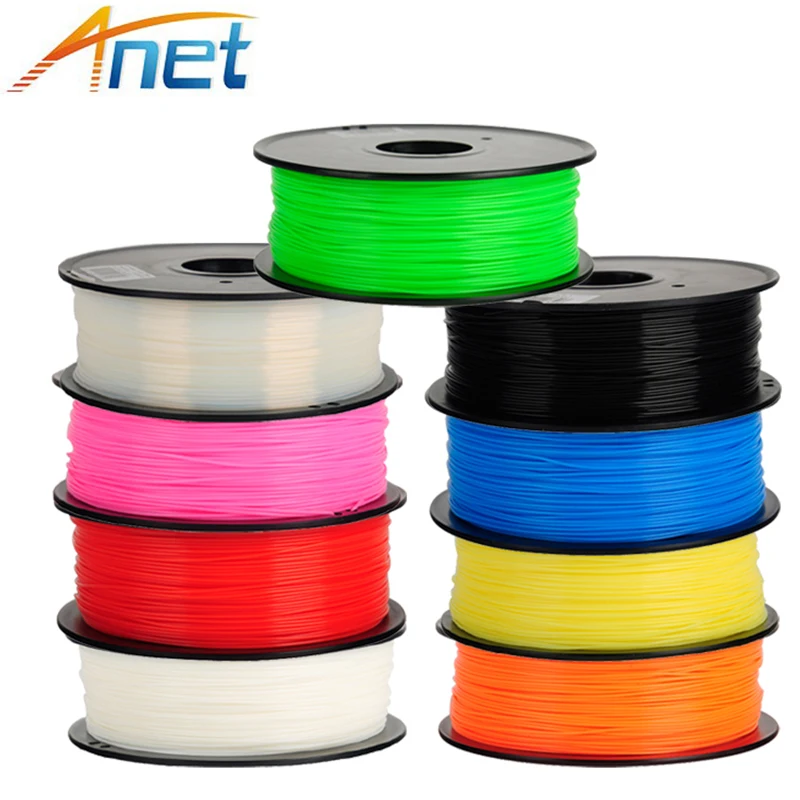
Material Properties
Heat Resistant
PP has great heat resistant properties meaning it is ideal for engineering applications. This mainly due to its melting temperature which is at 164 ºC.
Chemical Resistant
PP is not affected by most solvents and is often used to create containers for various chemicals.
Impact Resistant
Because off the semi-crystalline structure, PP is highly resistant to impacts. The flexibility features also make it useful since it is often used to create hinges in standard manufacturing.
Heat Resistant
PP is highly resistant to wear and can create parts that do not erode easily with heavy use. Furthermore, parts created are strong while being lightweight.
Disadvantage
PP does not bond well with any other material and this means it is not possible to print with standard adhesion methods apart from PP based adhesive products
Disadvantage
PP models cannot be post processed due to its adhesion issues.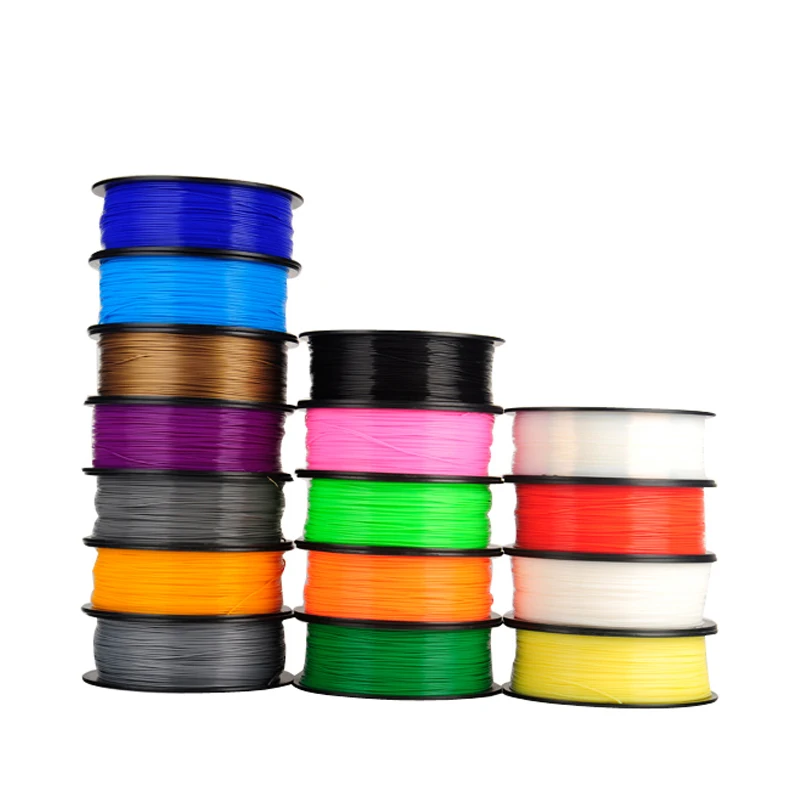
Spool Information
Outer Diameter200 mm
Centre Hole DiameterWidthThumbscrew TensionFilament Information
Filament Diameter1.75 mm( ± 2%)
Filament WeightFilament LengthSpecific Gravity0.89 g/cm³
PRINTING CHECKLISTExtrusion
Temperature
±220 ºC
PP quickly settles back to its original molecular structure once it cools and therefore printing with it requires high temperatures. This ensures it flows smoothly during the printing process.
Bed Adhesion
Temperature
±80 ºC
Polypropylene is semi-crystalline which means it doesn’t adhere to any other material well. This brings about a problem because it won’t adhere to any print surface, other than its own. Therefore printing with PP requires the use of Tesa PP 57167 tape but not directly on the BuildTak Surface.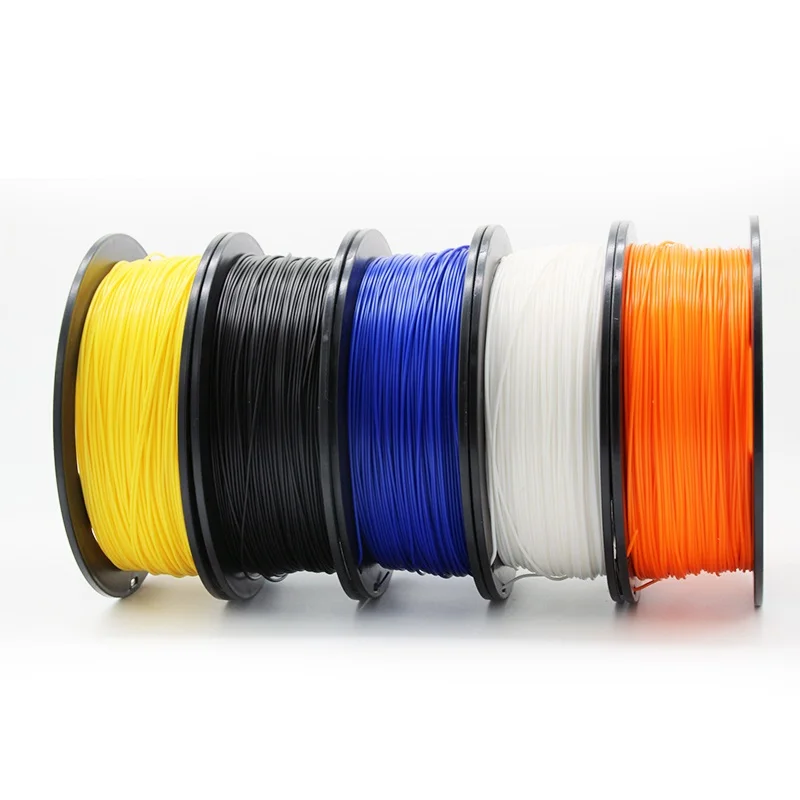 Instead if you remove the Flex Plate and flip it around and use the tape on the sheet metal side to print on.
Instead if you remove the Flex Plate and flip it around and use the tape on the sheet metal side to print on.
Bed
Adhesion
Options
Moisture & Storage
PP is highly resistant to a lot of things . Although it is not hygroscopic its still recommended to store PP away from moisture. Keep your filament dry and away from direct sunlight.
Cooling
Cooling is not required for PP parts unless they are small and have complex geometries.
Your First Layers
PP can warp significantly during the printing process. Using larger layer heights increase the likely-hood of this since at the edges, the stresses that are created as the material cools can cause more warping with larger heights. Smaller layers create less stress and improve interlayer bonding.
Speeds
Printing with Polypropylene at higher speeds creates rough edges and parts that have poor adhesion between layers .Although this is true for all filaments, the effects are more pronounced with PP due to its material properties.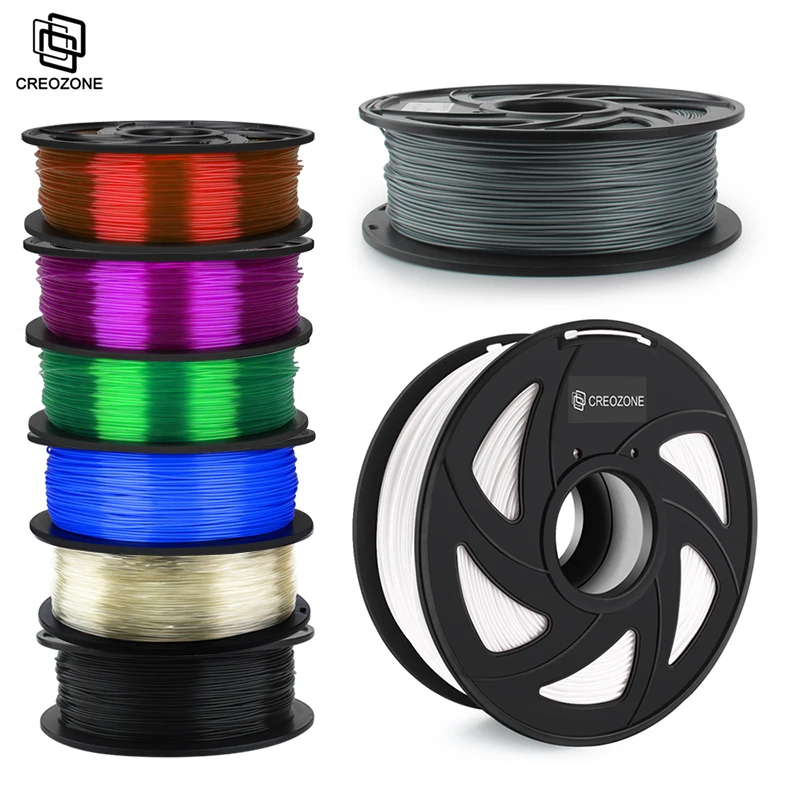
Skirt / Brim
Not required, but helps to reduce issues, for larger parts.
Support
Material
INDUSTRY EXAMPLE PRINTAUTOMOTIVE INDUSTRY PRINT
Carbon filament parts in 3D printing are often used as functional prototypes or as housings for models that need to withstand high impact forces. It is also often used to create levers because of its increased rigidity which is due to small carbon bits added to the base material in the spool.
3D MODEL
Research at Brigham Young University (CMR@BYU),
FINAL PRINT
Previous
Next
PVA FILAMENT
Scaffold
PVA is used as a soluble support material during printing complex parts. It works as a bridge material between open areas of the print which would otherwise deform.
Although it is possible in slicer software to use the same material as support, this often requires extra post processing to remove the break-away support and with some objects, this can create rough 3D prints.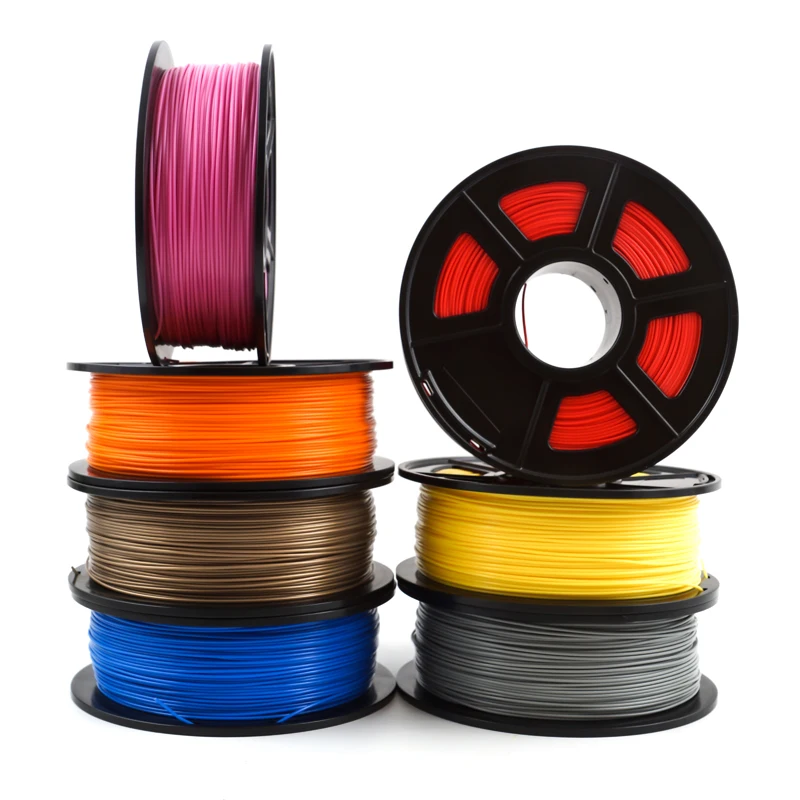
PVA gives more flexibility and options for complex parts and can aid in producing complex parts in one pass unlike other manufacturing processes.
Material Properties
Water Soluble
PVA is soluble in water which means post processing is relatively easy. Depending on the amount used, all that is needed is to submerge the model in water for a few hours and the PVA melts away.
Great for Overhangs
Parts that require large overhangs for example arches, will need the use of PVA to support the print.
Disadvantage
PVA needs to be stored in a airtight container because it is highly hygroscopic which will make the printing process difficult.
Disadvantage
PVA can cause clogging of the nozzles during the printing process. This is especially pronounced when the printing process requires the heated extruder to remain stationary for long periods of time.
Material SpecificationsSpool Information
Outer Diameter200 mm
Centre Hole DiameterWidthThumbscrew TensionFilament Information
Filament Diameter1.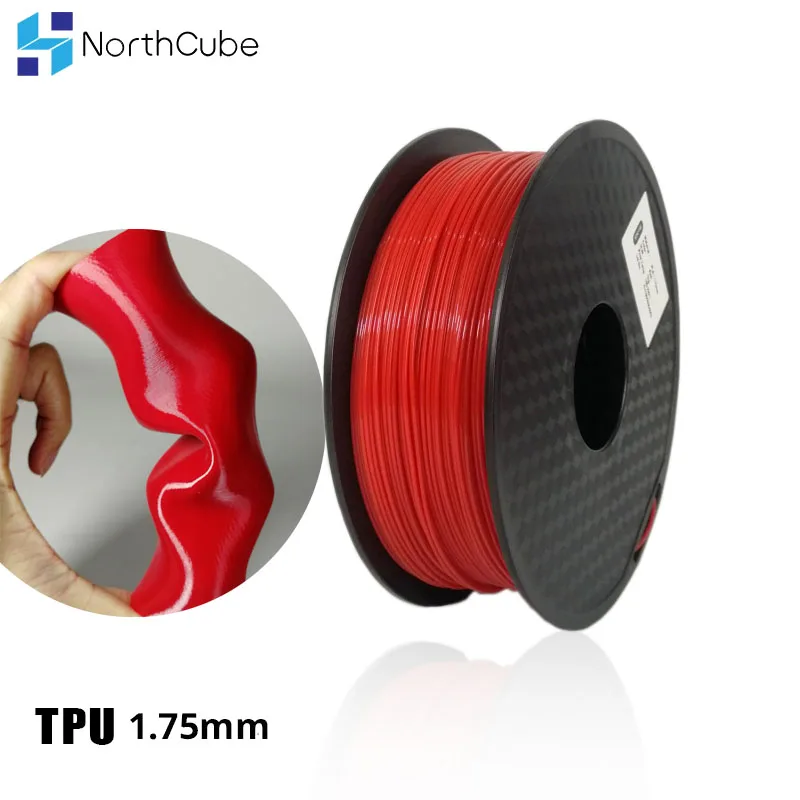 75 mm( ± 2%)
75 mm( ± 2%)
1.19 g/cm³
PRINTING CHECKLISTExtrusion
Temperature
±215 ºC
PVA extrudes at a temperature slightly higher than EPLA which makes it the ideal material to use as for support. This is due to both materials being able to adhere to each other without issues. Larger temperature differences may cause issues when printing with support materials.
Bed Adhesion
Temperature
±40 ºC
As mentioned before, PVA and EPLA go well together and PVA adheres well with the print bed at around 40 ºC.
Bed
Adhesion
Options
Moisture & Storage
PVA is highly hygroscopic and this makes it prone to oozing during the printing process. This can affect your model significantly by blocking paths that the extruder has to work on and resulting in deformed parts.
Drying before
Printing
PVA has a relatively low melting point and needs to be dried if necessary at 45 ºC for 4-6 hours to dry.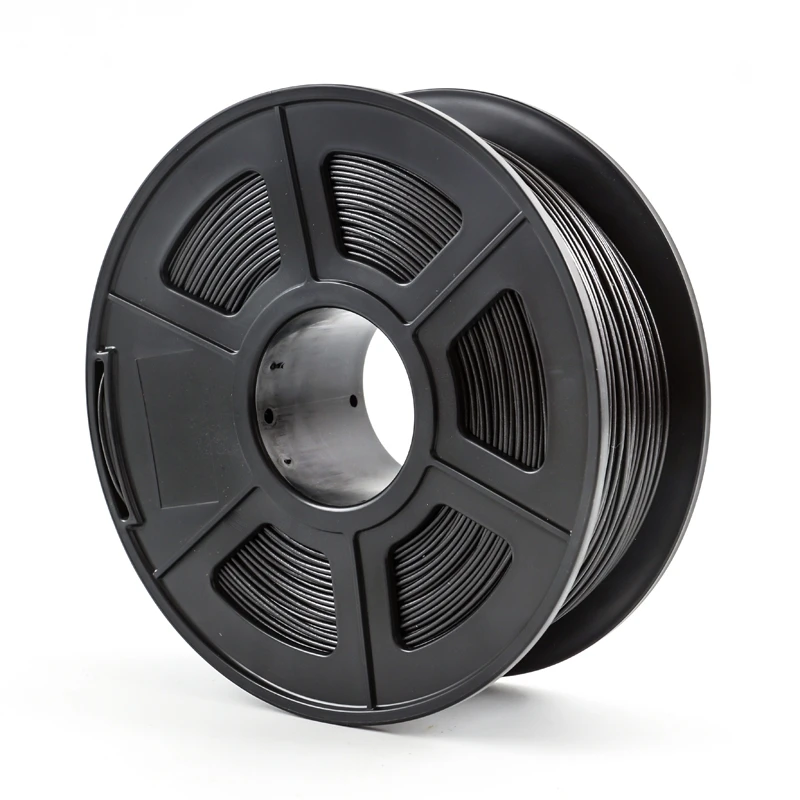
Cooling
It is recommended to use cooling for PVA which helps to solidify it quicker so as to aid as a support structure during printing.
Prime Pillar
The purpose of a Prime pillar is twofold. It is a rectangular 3D part that is printed at the front of a model. It is only used when printing with two materials using the two extruder and is printed each time the extruder change. Its purpose is to prime the extruder to ensure they are properly heated and extruding properly. Additionally, it cleans the nozzles to remove excess dried filament, especially for material that oozes easily.
Skirt / Brim
Recommended
Support
Material
1. E-PLA works well, especially for large parts
2. TPU
3. PET/Co-polyesters
PVA SUPPORT PRINTEPLA MOLECULE MODEL WITH PVA SUPPORT
There are various separate settings that can be adjusted in your slicer software for support structures.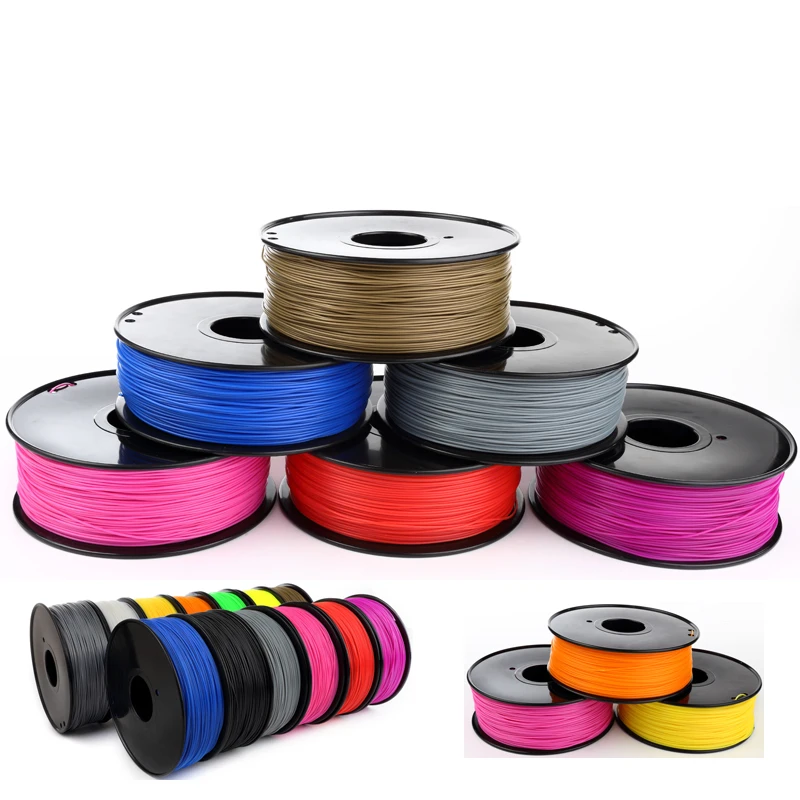 You add your own or the software can automatically plot them for you. As you gain experience, you will start to understand different aspects so you can use less support depending on your model.
You add your own or the software can automatically plot them for you. As you gain experience, you will start to understand different aspects so you can use less support depending on your model.
SUPPORT MODEL
FINAL PRINT
HIPS FILAMENT
High Impact Polystyrene
HIPS is a filament that can both be used as a support material and also to create 3D prototypes. In terms of mechanical properties, it is very similar to ABS where it is often used as a support material due to the similar temperature properties allow both materials to stick to each other.
With HIPS you can create parts with great dimensional accuracy and like ABS , it can be machined further or painted in the post processing stage.
Material Properties
Dissolves in D-Limonene
HIPS dissolves in citrus based acids like D-Limonene where it can be used as a support material for complex parts that are made from namely ABS.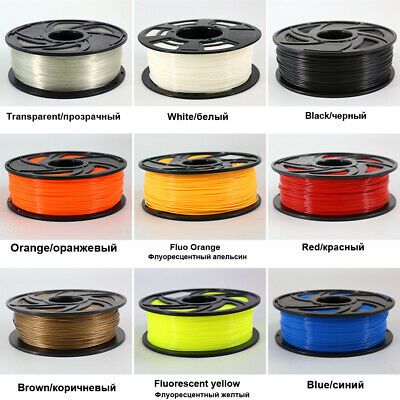
Great for ABS Overhangs
HIPS is a great support materials for complex ABS geometric 3D prints in the same way how PVA works well with PLA. This is due to it being able to adhere well to ABS during printing allowing for smooth parts once removed.
Impact Resistant and Easy to Print
HIPS is highly impact resistant and can be used to create proof of concept functional parts. HIPS creates great looking 3D prints and it is also inexpensive, which means it is ideal for rapid prototyping models.
Durable, Strong & Lightweight
HIPS is highly strong and also lightweight meaning it can be used to create a variety of functional prototypes.
Disadvantage
HIPS can face warping issues that can make it challenging to print.
Disadvantage
HIPS is hygroscopic and needs to be stored in a airtight bag.
Material SpecificationsSpool Information
Outer Diameter200 mm
Centre Hole DiameterWidthThumbscrew TensionFilament Information
Filament Diameter1.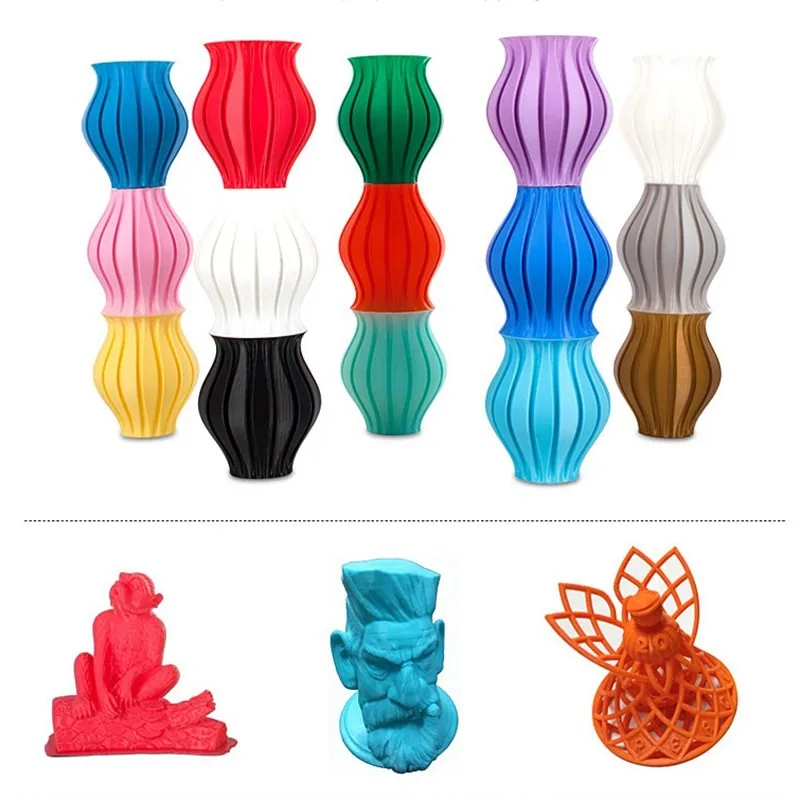 75 mm( ± 2%)
75 mm( ± 2%)
1.03 g/cm³
PRINTING CHECKLISTExtrusion
Temperature
±230 ºC
HIPS has a high melting temperature and this makes it a great support material for ABS parts which would normally melt PVA support.
Bed Adhesion
Temperature
±90 ºC
HIPS can warp and in order to help it adhere to the print bed, a high temperature setting will allow it to remain fixed during the printing process.
Bed
Adhesion
Options
Moisture & Storage
With any filament, it is highly recommended to store HIPS in a sealed bag since it will allow for the material to last and create better prints.
Drying before Printing
HIPS has a low sensitivity to moisture but if not stored properly then it should be dried in a oven for a period of 6-12 hours at 50 ºC.
Cooling
HIPS does not require cooling, however when printing smaller parts it can be beneficial.
Your First Layers
HIPS is relatively easy to print with and works similar to EPLA in terms of easy of use apart from the higher temperature requirements.
Speeds
TPU prints better with slow speeds. This again is due to its ability to stretch without breakage when molten which causes oozing and stringing. Faster speeds can lead to this and slower speeds allows the material to adhere better and settle per layer .
Skirt / Brim
Recommended for large parts and parts with a narrow base.
Support
Material
HIPS can be used as a support material for ABS prints.
Priming
Pillar
When using HIPS as a support material, the best process is to use a prime pillar which helps with ensuring extrusion settings and temperature settings are correct during each new layer pass. This is due to the switching of the extruder hot-ends for each new layer.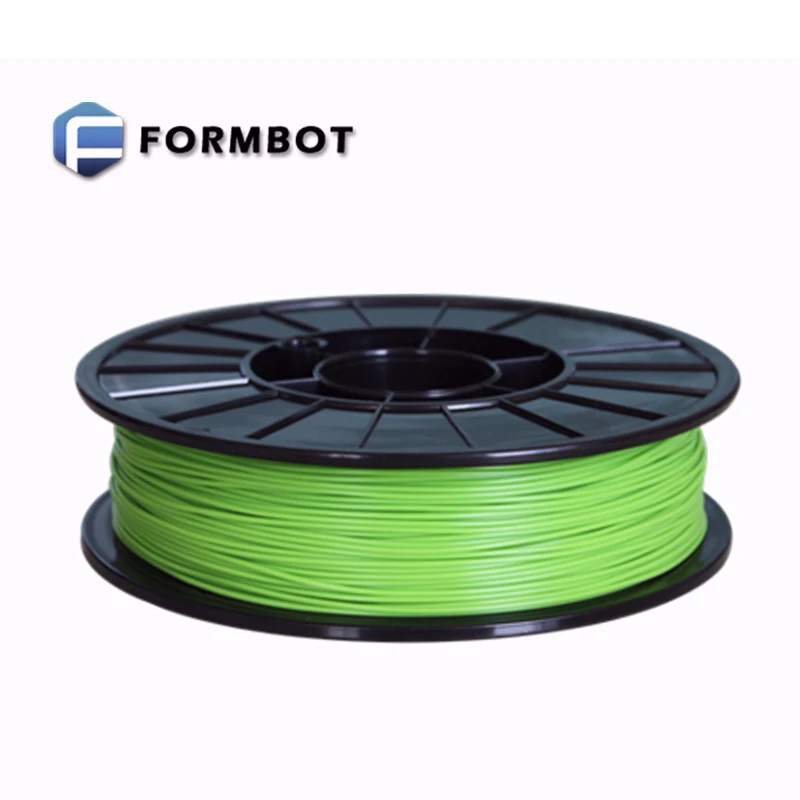
ENGINEERING ABS PRINT WITH HIPS
HIPS as a support material has various settings similar to PVA apart from the extrusion temperature. One key though that is different is that HIPS is also great as a prototyping material which can create great models. It has a smooth finish and great mechanical properties which means you can achieve functional prototypes with it as well.
3D MODEL
FINAL PRINT
Previous
Next
CARBON FILAMENT
PETG+Carbon
One key distinction that needs to made is that Carbon filament is not the same as standard carbon fibre. Carbon filament is created by combining shorter carbon fibre with another common material like PetG which is then used to create the carbon filament spool. Despite this, the printed object still benefits from the strength properties while still remaining lightweight. It has improved tensile strength and can create really rigid parts.
It has improved tensile strength and can create really rigid parts.
One key note before printing is carbon filament requires the Bolt Pro NozzleX hot-ends which are abrasion resistant. Using standard nozzles will damage them and lead to clogging.
Material Properties
Strength
Carbon printed parts offer really high strength parts that are stiff and very rigid. These parts can be used with great effect for functional prototypes.
Lightweight
The added benefit of using carbon filament is in conjunction with the strength properties, parts are also extremely lightweight which opens up a wide range of use cases for engineering.
Impact Resistant
Parts produced with carbon filament have impact resistance which is comparable or even exceeds other printing materials in the market.
Durable and Heat Resistant
Unlike ABS and PLA, carbon printed parts have the additional benefit of being very abrasion resistant which offers longer lasting parts that look good and function well with great heat resistant.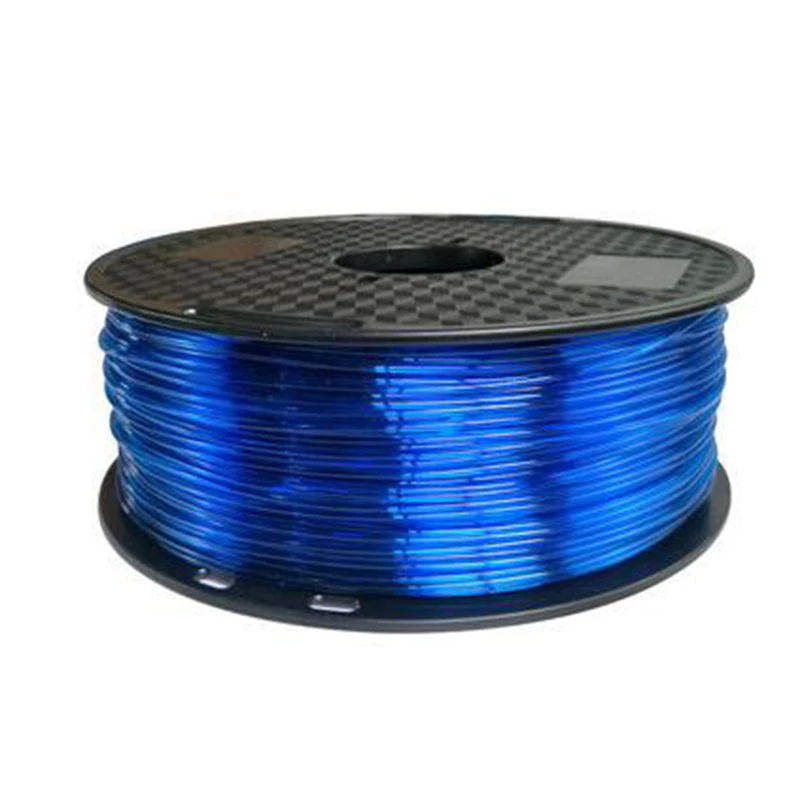
Disadvantage
Carbon filament is abrasives and can clog and ruin non specialised nozzles.
Disadvantage
Carbon prints are an abrasive finish and cannot be post processed.
Material SpecificationsSpool Information
Outer Diameter200 mm
Centre Hole DiameterWidthThumbscrew TensionFilament Information
Filament Diameter1.75 mm( ± 2%)
Filament WeightFilament LengthSpecific Gravity1.19 g/cm³
PRINTING CHECKLISTExtrusion
Temperature
±230 ºC
Since the carbon filament is mixed with PETG, the print settings mostly reflect the same setup. One thing to be mindful is carbon can clog a lot and requires specialised metallic nozzles.
Bed Adhesion
Temperature
±70 ºC
Carbon has an average chance of warping during the printing process and requires the printing environment to be enclosed to maintain a constant temperature.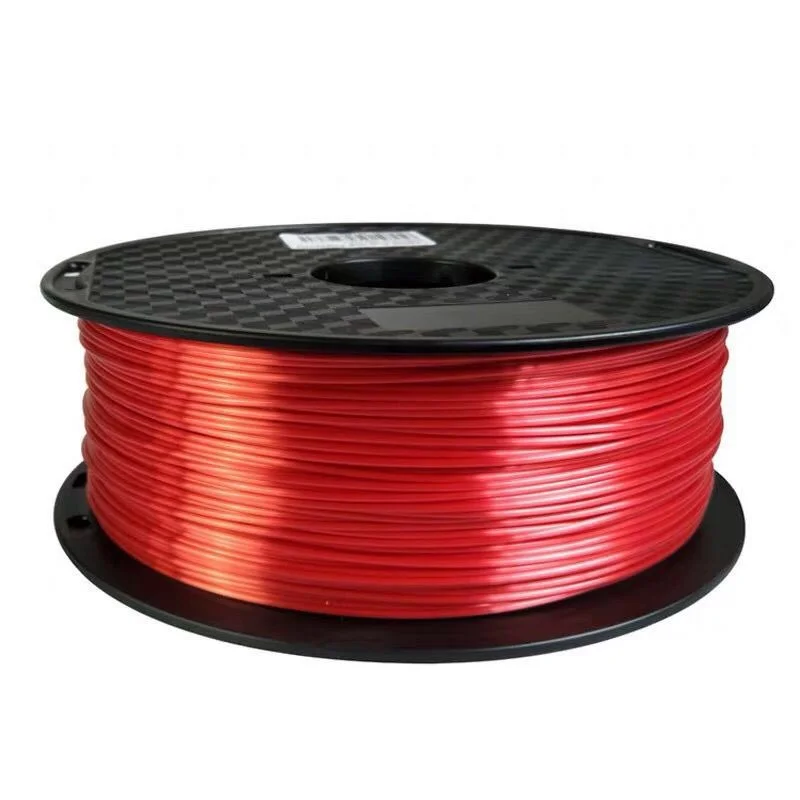 The bed temperature settings are similar to PETG again as that is the base material in the filament spool and needs to be high enough to adhere properly to the build surface.
The bed temperature settings are similar to PETG again as that is the base material in the filament spool and needs to be high enough to adhere properly to the build surface.
Bed
Adhesion
Options
Moisture & Storage
Storage of carbon requires it to be sealed and stored away from sunlight to uphold its quality.
Cooling
Carbon does not require cooling when printing.
Your First Layers
As with PETG, layer heights are highly dependent on the type of model that is being printed. This is mainly due to the combination of both materials that can create varying results during the printing process. Another matter to note is the size of the hot-end needs to be at least 0.4mm which is due to the carbon fibres that can build up with smaller nozzle sizes and create clogs during the printing process.
Speeds
Carbon prints work well with lower speeds and may not have the same fast speed settings that are available with filaments like ABS and PLA.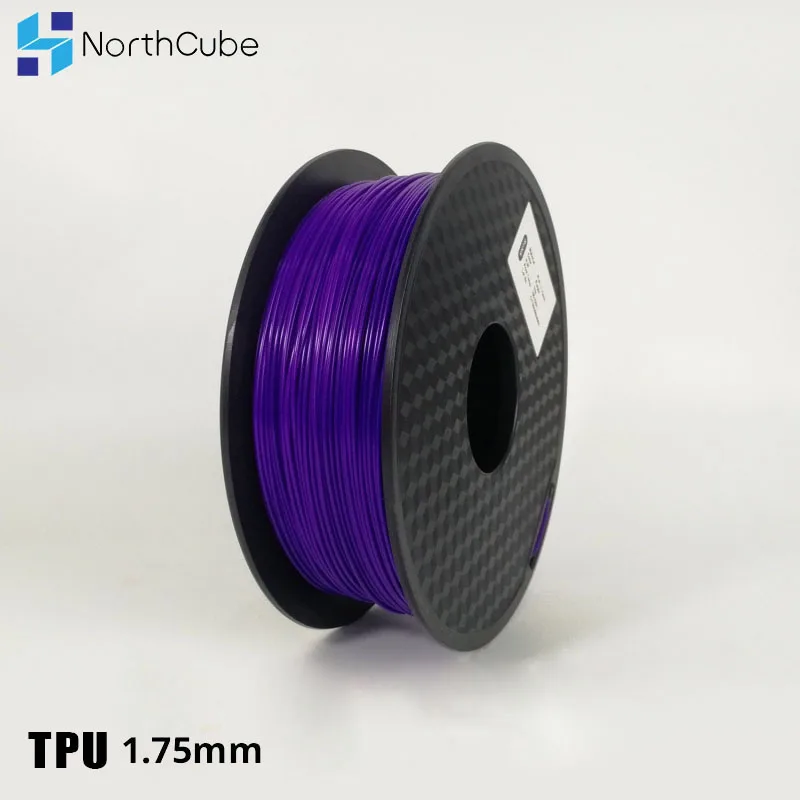 This is mainly due to the fibres that can clog the extruder, especially if they build up.
This is mainly due to the fibres that can clog the extruder, especially if they build up.
Skirt / Brim
A skirt or brim is recommended when printing carbon
Support
Material
Breakaway support is recommended for carbon filament.
INDUSTRY EXAMPLE PRINTTOOLING PRINT EXAMPLE
PP is very strong and durable plastic that has great fatigue resistant properties. For this model, we chose to print a compliant pliers designed by BYU CMU which operates without the use of multiple parts to create a functional tool or part. This is a great use case for PP because it has great wear and tear resistance and can be both ductile and more stiff when printed with higher infill to create a wide range of different parts.
3D MODEL
FINAL PRINT
Previous
Next
Share on facebook
Facebook
Share on twitter
Twitter
Comparison & List of 3D Materials
Image from FlickrBelow you will find information on 16 different types of 3D printing materials.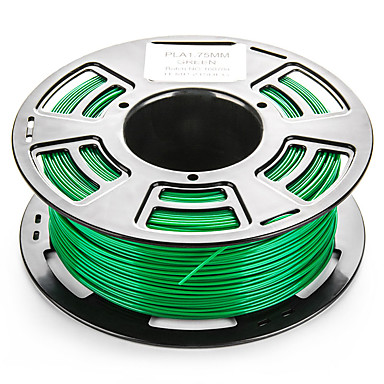 Chances are that even if you are a 3D printing expert you will learn something new in this guide. You can try magnetic, glow-in-the-dark, or even conductive filaments.
Chances are that even if you are a 3D printing expert you will learn something new in this guide. You can try magnetic, glow-in-the-dark, or even conductive filaments.
Before we get into 3D materials, it helps to look at the 2D printing process we’ve all come to know. All printers need some kind of substance to print with. For 2D printing, we’re most familiar with inkjet printers that use liquid inks. These machines extrude ink through microscopic nozzles onto papers. 2D laser printers also print to papers. Instead of ink, they use a toner cartridge filled with a special type of fine powder and a heated fuser. 2D printing produces two-dimensional, flat, results that have width and height but no depth (thickness). Pigment-based and solid inks are other materials used for printing in 2D. Today, we can also print in 3D with special machines and printing materials.
2D Printing Compared to 3D Printing
There’s a distinct difference between the two technologies. 3D printers build real-world objects, whereas 2D printers publish text and graphics on papers.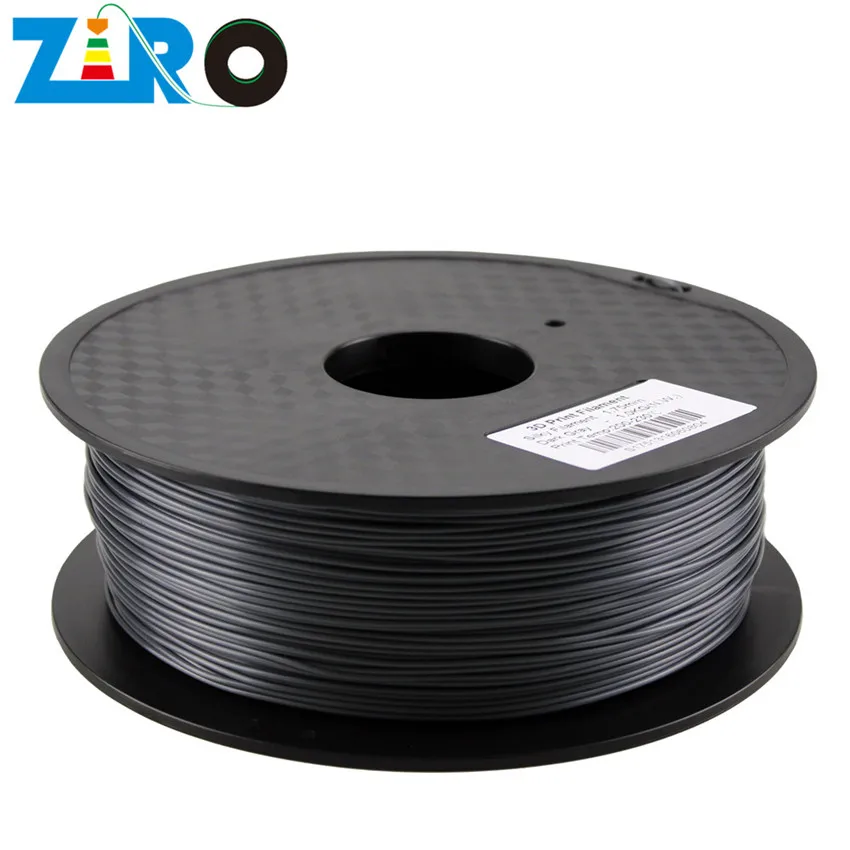 Before either machine can print, they need computer-generated, digital files. These files tell the machines what to produce and how to print it based on user preferences. Both types of printers use inks, or materials, to carry out the job. That’s pretty much where the familiarities end. 2D printers can’t build layers to produce real-world objects.
Before either machine can print, they need computer-generated, digital files. These files tell the machines what to produce and how to print it based on user preferences. Both types of printers use inks, or materials, to carry out the job. That’s pretty much where the familiarities end. 2D printers can’t build layers to produce real-world objects.
One of the most important parts of 3D printing is to use the right kind of material for the job in hand. In this guide we look at the range of 3D materials, also called filaments, a 3D printer uses, starting with the most popular. We’ll also cover their uses along with pros and cons for each type. This will help you to make better informed decisions when buying your 3D printer filaments. Before you print anything in 3D, there are a few basic questions you should ask yourself, the main ones include:
- Strength: How strong does your printed part have to be?
- Flexibility: How flexible does your part need to be?
- Accuracy: How important is precision to your 3D part?
- Special conditions: Any other conditions that apply to your 3D model
These are the 3D printing materials that are covered in this guide:
- ABS Filament
- PLA Filament
- PET Filament
- PETT Filament
- Nylon Filament
- PVA Filament
- Sandstone Filament
- Wood Filament
- Metal Filament
- HIPS Filament
- Magnetic Iron Filament
- Conductive Filament
- Carbon Fiber Filament
- TPE Filament
- Glow in the Dark Filament
- Amphora Filament
3D Filament Defined
3D filaments are special types of plastics called thermoplastics. Once heated to the right temperature, thermoplastics become flexible. It’s this pliability that allows the printer to sculpt the filament to create your shapes before it cools down. In 2017, the two common types of 3D filaments are:
Once heated to the right temperature, thermoplastics become flexible. It’s this pliability that allows the printer to sculpt the filament to create your shapes before it cools down. In 2017, the two common types of 3D filaments are:
- ABS (Acrylonitrile Butadiene Styrene)
- PLA (Polylactic Acid)
Don’t Miss: Best 3D Printing Filament Brands.
These are not the only 3D filaments available. We’ll look at other types later in the guide. For now we’ll focus on ABS and PLA, and see what makes them such popular choices. For each material we’ll start with a short introduction followed by the average price, print temperature, and applications. At the end of each 3D material we’ll list its pros and cons. Also worth noting is that not all 3D printers can utilize both ABS and PLA. Some can, but not all, so you need to know your 3D printer capabilities as well as the abilities of the 3D filaments.
1. ABS 3D Filament
PRICE STARTING FROM: $20 for 1.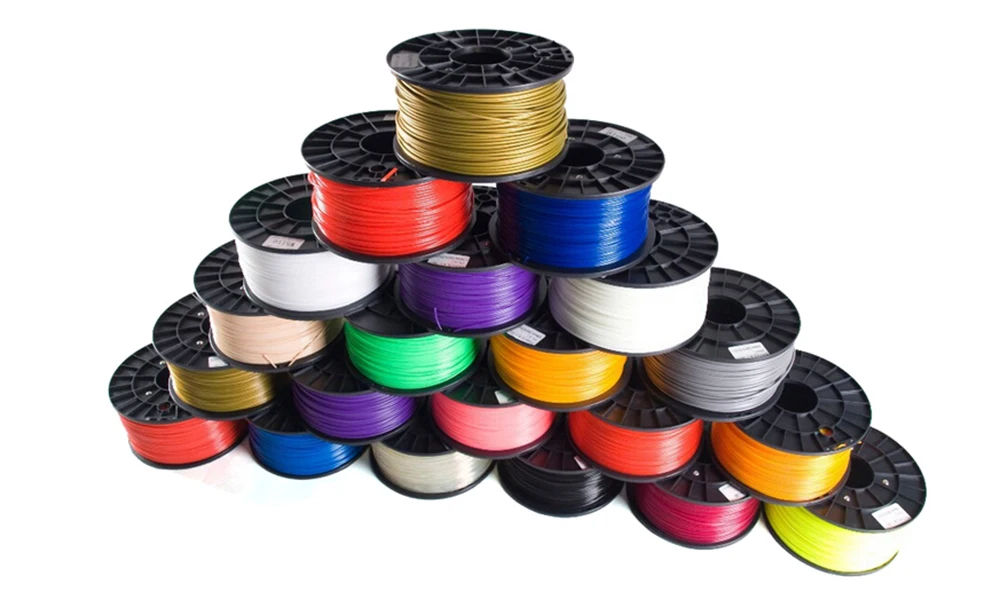 75 mm, 1kg spool
75 mm, 1kg spool
ABS is popular for good reasons. It’s tough, and has impact-resistant properties. It’s this strength and moderate flexibility that makes it such a great choice for printing in 3D. It’s also easy to extrude from the printer’s nozzles, which makes it an easy material to work with.
Don’t Miss: Best ABS Filaments.
ABS print temperature range: 210°C – 250°C (high)
Applications
ABS is a great choice for printing plastic automotive parts, moving parts, musical instruments, kitchen appliances, electronic housings, and various toys, like LEGO. It has other applications too, aside from 3D printing. For example, traditional manufacturers use ABS to make plastic wrap, water bottles, and cups, to name a few uses. Despite its popularity for 3D printing, ABS is not the best filament for most home users. This is because it has a high melting point that needs to print on a heated surface, or bed. A heated printer bed is not something a lot of budget-range 3D printers come equipped with.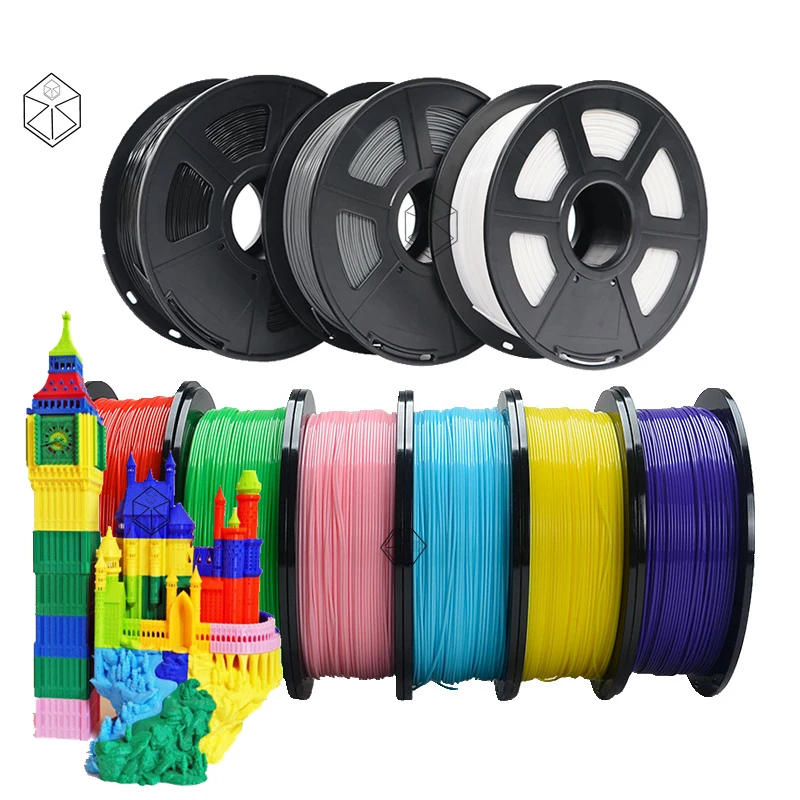 Printing with ABS also produces unpleasant fumes that can irritate some people. Needless to say, good ventilation is essential. These things combined make ABS a material favored more by professionals than amateur users.
Printing with ABS also produces unpleasant fumes that can irritate some people. Needless to say, good ventilation is essential. These things combined make ABS a material favored more by professionals than amateur users.
Check Price of ABS Filament on Amazon
The Pros
- A durable, strong 3D filament
- Quite flexible and lightweight
- Cheapest thermoplastic available at the time of writing
- Most favored material among professional 3D printers and keen armatures
The Cons
- ABS is petroleum-based, making it a non-biodegradable material
- Needs a high temperature to reach its melting point
- Creates unpleasant fumes, most notable in poorly ventilated spaces
2. PLA 3D Filament
PRICE STARTING FROM: $20 for 1.75 mm, 1kg spool
PLA (Poly Lactic Acid) is popular for amateurs and professionals alike. It’s a special type of thermoplastic made from organic materials, namely cornstarch and sugarcane. The main benefits of PLA are that it’s safer and easier to use, and with no toxic fumes to worry about. Some users even find the sweet smell of the sugar-based filament pleasant. Compared to ABS, PLA produces 3D parts which are more aesthetically pleasing. This finish is thanks to its unique sheen and smooth appearance.
The main benefits of PLA are that it’s safer and easier to use, and with no toxic fumes to worry about. Some users even find the sweet smell of the sugar-based filament pleasant. Compared to ABS, PLA produces 3D parts which are more aesthetically pleasing. This finish is thanks to its unique sheen and smooth appearance.
You might think it sounds like the perfect solution, but there are some drawbacks. For one, the melting point of PLA is much lower than ABS, and that makes it weaker. This matters if you’re printing moving parts or exposing the parts to high temperatures. Both of these things can result in the 3D objects, cracking, warping or even melting. If none of the above applies to you and your 3D projects, then PLA should be your filament of choice. It will award you with superior print details and is also less prone to printing errors during the build process.
Don’t Miss: Best PLA Filaments.
PLA print temperature range: 180°C – 230°C (low)
Applications
PLA has wide-ranging uses.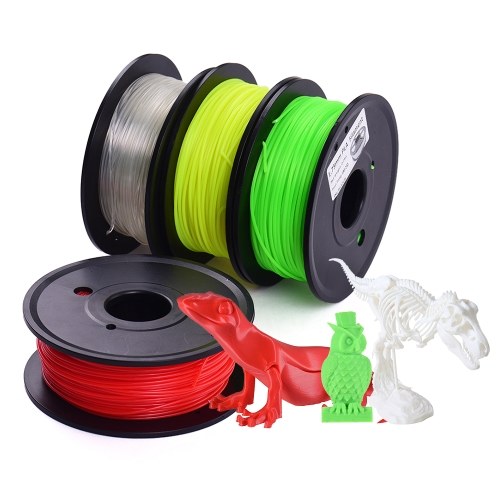 At the professional level, PLA filament uses include medical suturing (stitching). We can also see PLA used for various surgical implants, including surgically implanted pins, rods, screws, and mesh. The applications work thanks to the material’s degradable properties. All the aforementioned 3D printed parts break down in the human body. They can take anywhere between six months to two years, depending on the part and its purpose. At the amateur level, PLA filament is great for producing a whole range of consumer items. Other benefits of PLA are that it prints faster than ABS, and there’s no need for a heated printer bed. The end products are a decent strength, durable, and offer some degree of impact resistance. Aside from 3D printing, other products that use PLA include food packaging, disposable tableware, and diapers, as a few examples.
At the professional level, PLA filament uses include medical suturing (stitching). We can also see PLA used for various surgical implants, including surgically implanted pins, rods, screws, and mesh. The applications work thanks to the material’s degradable properties. All the aforementioned 3D printed parts break down in the human body. They can take anywhere between six months to two years, depending on the part and its purpose. At the amateur level, PLA filament is great for producing a whole range of consumer items. Other benefits of PLA are that it prints faster than ABS, and there’s no need for a heated printer bed. The end products are a decent strength, durable, and offer some degree of impact resistance. Aside from 3D printing, other products that use PLA include food packaging, disposable tableware, and diapers, as a few examples.
Check Price of PLA Filament on Amazon
The Pros
- No harmful fumes, produces a sweet aroma when heated
- Easier to work with compared to ABS (great material for beginners)
- Compared to ABS, PLA is less prone to warping
- Available in special effects like glow-in-the-dark colors and translucency
The Cons
- Susceptible to clogging the printer nozzle
- Can attract moisture that makes it potentially brittle and more difficult to print
- Less sturdy overall than ABS
3.
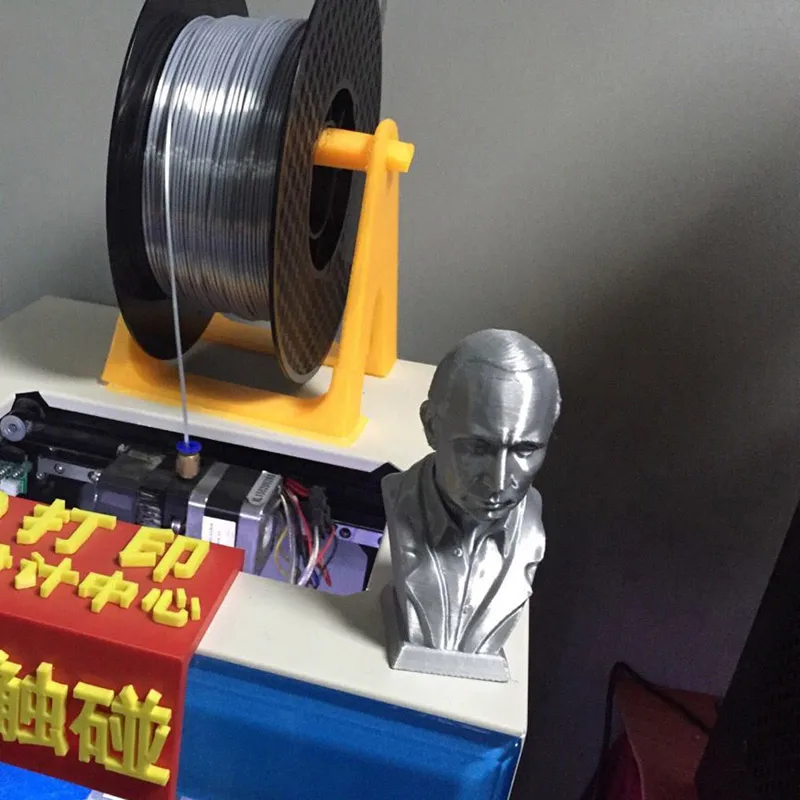 PET FilamentImage from Bpet Filaments
PET FilamentImage from Bpet FilamentsPRICE STARTING FROM: $24.99 for 1.75 mm, 1kg spool
Today, PolyEthylene Terephthalate (PET) is a popular 3D material. Another common use for PET is in everyday plastic bottles. This plastic is both stable and harmless, emits no unpleasant or harmful odors, and is 100% recyclable. In its raw state, the filament has no color and is crystal clear. Once exposed to cold or heat the material quickly changes to a non-transparent state. A more advanced version if PET is a filament called PETG, also marketed as Amphora AM1800.
Don’t Miss: Best PETG Filament.
PETG print temperature range: 210°C – 230°C
Applications
PETT is on a list of FDA approved polymers. This makes it completely ‘food safe’, meaning it’s safe for products like cups, and plates, etc. Needless to say, common applications for PETT filament include food containers and various kitchen utensils.
Check Price of PETG Filament on Amazon
The Pros
- Strong, flexible, and with biocompatibility
- Does not warp
- Does not shrink
- Does not absorb moisture from the air
- Does not degrade in water
- FDA approved, food safe
- Prices for PETT are falling
The Cons
- Not an easy material for beginners to work with
- Nozzle and printer bed temperatures needs fine-tuning for best results
4.
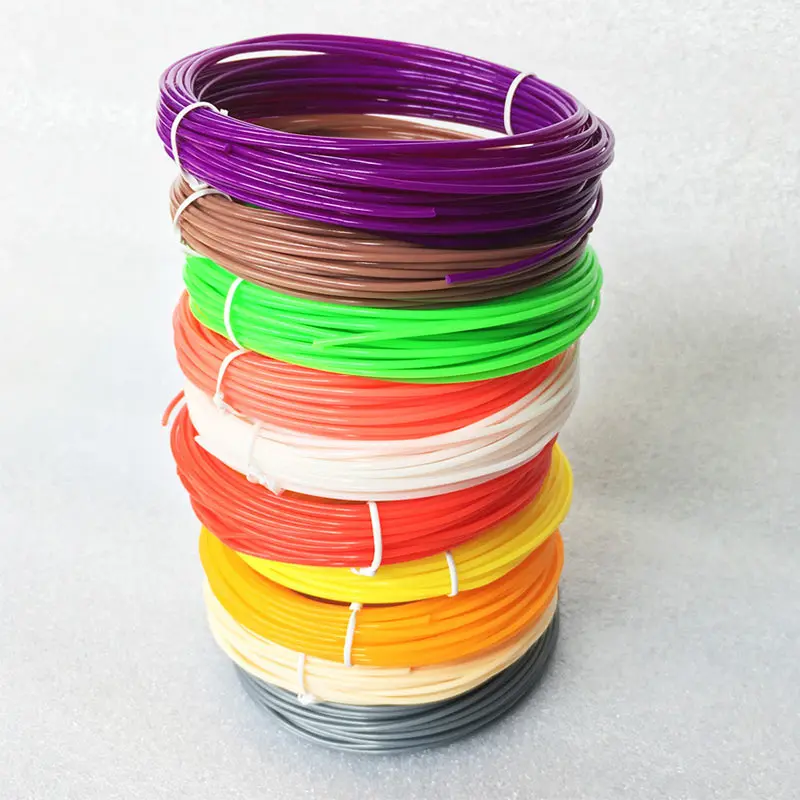 PETT FilamentImage from 3D Prima
PETT FilamentImage from 3D PrimaPRICE STARTING FROM: $25.99 for 1.75 mm, 453.5g spool
PETT, whose long name is PolyEthylene Trimethylene Terephthalate, is what’s known as a T-Glase filament. Like PET (one ‘T’), it’s also a popular 3D printer material that’s food-friendly. The filament is non-biodegradable, though it is a recyclable material.
Don’t Miss: Best PETG Filaments.
PETT Print Temperature Range: 210°C – 230°C
Applications:
PETT is another of those FDA-approved polymers. This makes it safe for use with food. The majority of PETT applications are various food containers and other kitchen utensils.
Check Price of PETT Filament on Amazon
The Pros
- Strong and flexible
- Biocompatibility
- Does not warp or shrink during the printing process
- Does not absorb moisture or water from surrounding air
- Does not degrade in water
- FDA approved, food safe
- Impressive in bridging
- Prices for PETT falling
The cons
- Difficult material for beginners to work with
- Printer nozzle bed temperature requires fine tuning for best results
5.
 Nylon FilamentImage from Taulman3D
Nylon FilamentImage from Taulman3DPRICE STARTING FROM: $39.99 for 1.75 mm, 1kg spool
Nylon filament, also called polyamide, is another popular choice. This is a synthetic polymer that’s stronger and more durable than ABS and PLA—and cost-effective. It’s also flexible, light, wear-resistant, and less brittle than both ABS and PLA. There are different kinds of nylon filament available, and what you choose will depend on which one suits your budget and needs. The difference between them is in the filament’s layer bonding abilities, tensile strength, and water absorption. You can also choose nylon filament that has a translucent or opaque finish and reduced shrinkage.
Don’t Miss: Best Nylon Filaments.
Nylon print temperature range: 210°C – 250°C (high)
Applications
Nylon filament is great to use in a whole variety of applications thanks to its strength, flexible properties, and durability. It’s particularly suited for various consumer products, tools, mechanical components, machine parts, structural parts, containers, and a much more.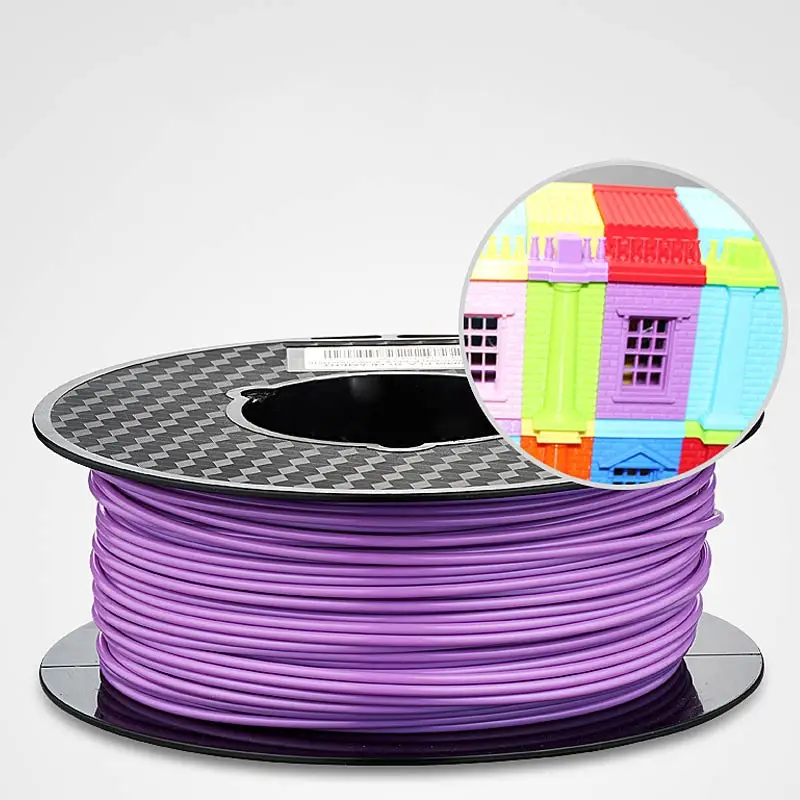
Check Price of Nylon Filament on Amazon
The Pros
- Strong, durable and flexible
- Less brittle than ABS and PLA
- 100% thermoplastic material
- Filament can be re-melted and used again without any loss of bonding
The Cons
- Needs a high melting temperature
- Breaks down and emits toxic fumes when heated
- Absorbs moisture easily—proper storage is essential
6. PVA Filament
Image from Form FuturaPRICE STARTING FROM: $35.99 for 1.75 mm, 0.5 kg spool
PVA (long name Polyvinyl alcohol) is a good 3D filament that’s typical use is as a support material when printing with ABS or PLA. Support materials are necessary when printing 3D parts with notable overhangs. Without the support, these parts would be impossible to print or perfect. As a support material, PVA works best with printers that have duel extruders. This is a biodegradable, non-toxic material that easily dissolves in tap water. All popular desktop FDM printers can use PVA with a heated build platform as this prevents warping during the build process. For best results as a support material, the print bed temperature should not exceed 200 °C.
All popular desktop FDM printers can use PVA with a heated build platform as this prevents warping during the build process. For best results as a support material, the print bed temperature should not exceed 200 °C.
PVA print temperature range: 190°C – 220°C (low)
Applications
In 3D printing, PVA works as a support material (see above). Aside from 3D printing, PVA has many other applications. We can find it used as a thickener in paper adhesives, in personal hygiene products, as a mold-release agent, kid’s putty, and freshwater fishing products, to name a few.
Check Price of PVA Filament on Amazon
The Pros
- A biodegradable, non-toxic material
- Water soluble
- Good durability
- Makes otherwise difficult printing easy
The Cons
- Attracts water easily
- Can be difficult to source compared to other materials
- High cost compared to other 3D filaments
7.
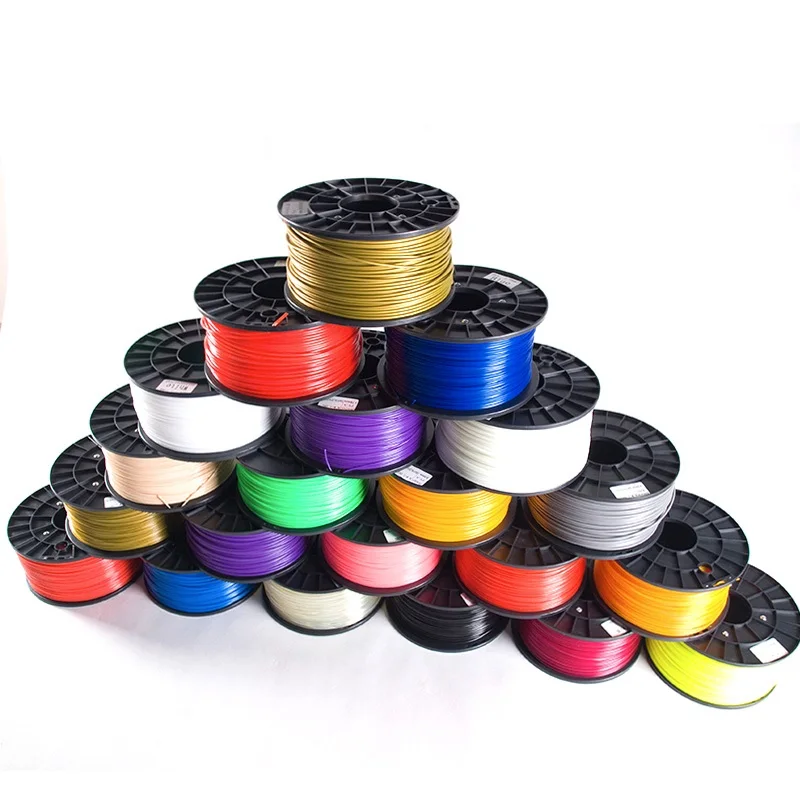 Sandstone Filament (PLA + Brick)Image from Quora
Sandstone Filament (PLA + Brick)Image from QuoraPRICE STARTING FROM: $32 for 1.75 mm, 0.25 kg spool
Sandstone filaments offer a unique finish to your 3D printed parts. This is a PLA material that includes a fine chalk powder to produce a stone-like color and texture. It’s also possible to alter the surface characteristics simply by adjusting the printer’s extrusion temperature during the print process. With a little practice, you’ll be able to produce parts that are smooth, rough, or anywhere between the two. 3D sandstone material is a brick filament offered by various suppliers under different product names. The most well-known right now is LayBrick.
Sandstone print temperature range: 165°C – 210°C
Applications
The creative use of 3D sandstone filaments has few limits, though it’s fair to say that it has a pretty niche usage. It’s most popular for things like landscapes and architectural display models.
Check Price of Sandstone Filament on Amazon
The Pros
- Unmistakable sandstone appearance and finish
- No heated bed needed to print
- No warping or shrinking during the cooling process
The Cons
- Not a particularly durable or flexible material
- Parts can be brittle making them more prone to breaking and snapping
8.
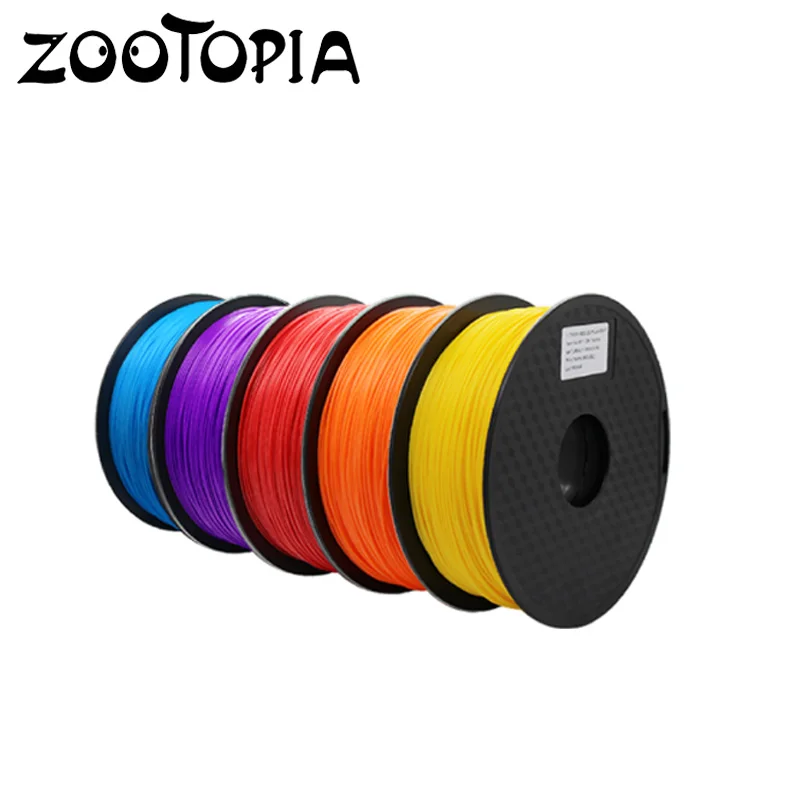 Wood FilamentImage from Imgur
Wood FilamentImage from ImgurPRICE STARTING FROM: $30 for 1.75 mm, 1kg spool
It seems strange, but yes, 3D wood filaments are very real. It’s a great material for anyone who wants or needs to be more creative with their 3D printed projects. These filaments contain a careful mixture of recycled woods with a special binding polymer. The output model not only looks like real wood, it smells like it too. There’s no shortage of impressive examples online that illustrate the amazing finish wood filaments can produce when printed to perfection.
Wood print temperature range: 200°C – 260°C
Applications
What 3D print enthusiasts use wood filament for has no limits other than their creativity. Use it for décor, ornate boxes, tables and chairs, figurines, and whatever else catches the imagination.
Check Price of Wood Filament on Amazon
The Pros
- Contains actual wood fibers
- Produces unique wood-like objects in various shades and surfaces
- Higher temperatures will produce darker brown shades
- Altering 3D print temperatures stimulates the growth ring effect of trees
- Allows you to easily work with the finished part to achieve the required finish
The Cons
- Weaker, softer material compared to PLA
- Less flexibility and tensile length
- Easily breakable
9.
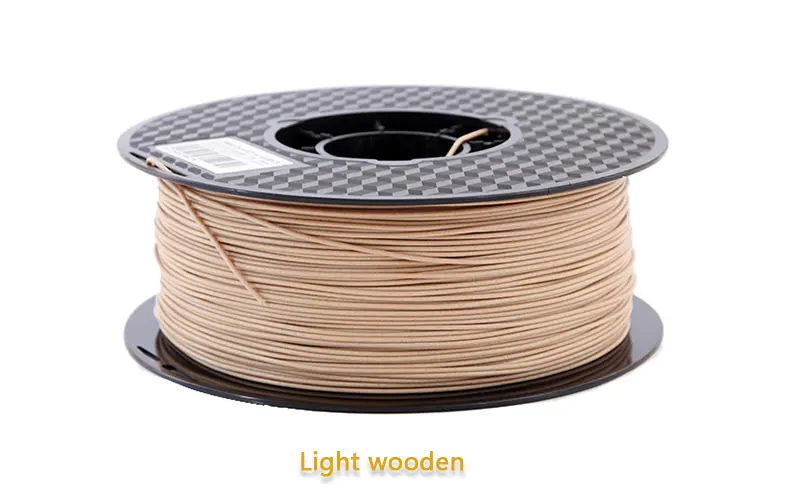 Metal Filament PLA / ABS
Metal Filament PLA / ABSPRICE STARTING FROM: $29 for 1.75 mm, 1kg spool (prices vary a lot depending on metal)
Metal filaments are in a league of their own—offering some very impressive, unique finishes to 3D printed parts. The materials consist of PLA combined with a higher percentage of fine metallic powders. The 3D printed parts look and feel just as they would if they had been made of 100% metals. Popular choices include aluminum, brass, bronze, copper, and stainless steel. Anyone who wants more of a creative effect can work on the end piece. For example, you can polish the finished part, or tarnish / weather it so that it looks even more genuine. Although they’re not pure 3D metal parts, they’re pretty close to the real thing.
Metal print temperature range: 195°C – 220°C (will vary depending on filament)
Applications
3D metal filament is perfect for hardware products, jewelry items, statues, replicas of artifacts, and much more.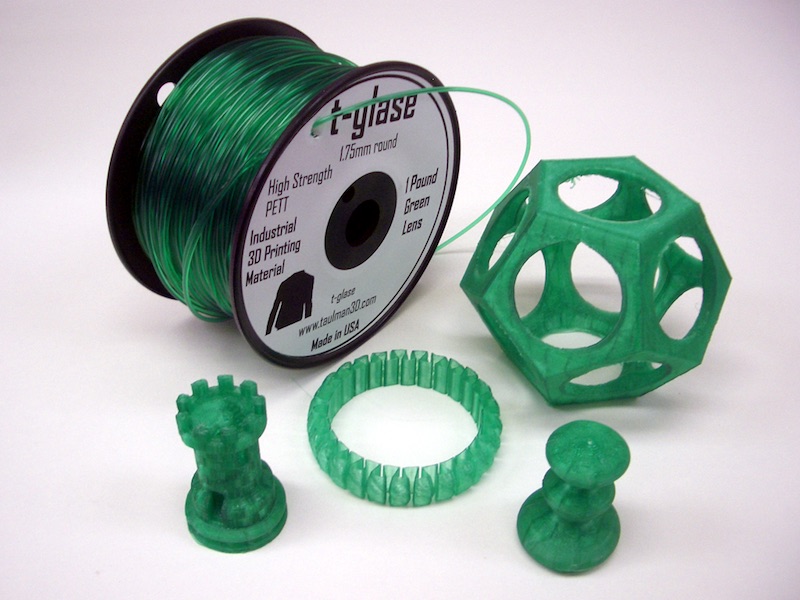 What you print with 3D metals depends a lot on the filaments you choose.
What you print with 3D metals depends a lot on the filaments you choose.
Check Price of Metal Filament on Amazon
The Pros
- Extremely durable
- Not soluble
- Unique metallic appearance and finish
- Little to no shrinkage while cooling
- No heated print bed needed
The Cons
- Not easy to print with for the inexperienced
- Need to fine-tune nozzle temperatures
- Need to regulate flow rate
10. HIPS Filament
Image from AdafruitPRICE STARTING FROM: $24.95 for 1.75 mm, 1kg spool
High Impact Polystyrene, HIPS for short, is a bright, white colored 3D biodegradable material. It’s safe to use, meaning it has no harmful effects for users who are in close contact with the filament. It’s safe with pets too. Like PVA, HIPS also works as great secondary (support) material. On its own, it’s tricky to use for creating 3D printed parts, especially with printers that don’t have a heated bed.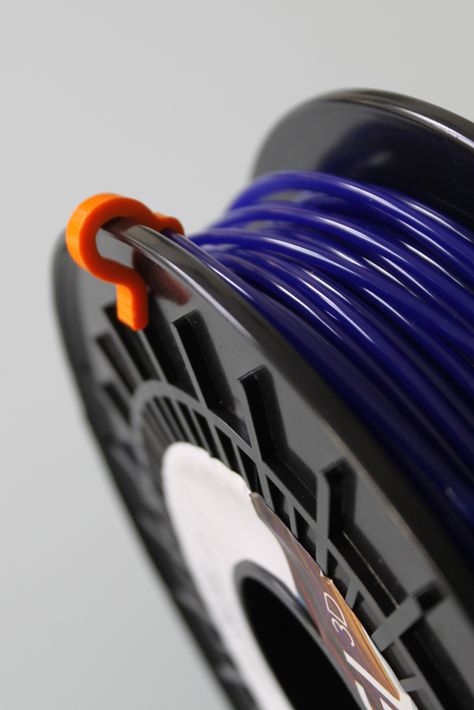 As a support structure, a colorless solution called liquid hydrocarbon quickly dissolves the filament.
As a support structure, a colorless solution called liquid hydrocarbon quickly dissolves the filament.
Don’t Miss: Best HIPS Filaments.
HIPS print temperature range: 230°C – 250°C
Applications
For 3D printing, the most common application for HIPS is as a support material for other filaments (see above). Aside from 3D printing, other industries use HIPS because it’s a strong, ridged plastic that they can manipulate to suit their needs. The food industry uses it widely for packaging. Other uses include medicinal trays, signs, all kinds of kid’s toys, and much more.
Check Price of HIPS Filament on Amazon
The Pros
- Acts as an easily removable ABS support material
- When paired with ABS, HIPS is a great dual extrusion support structure
- Non-toxic at close range
The Cons
- Some issues with adhesion and curling
- Not easy to work with without a heated bed
11.
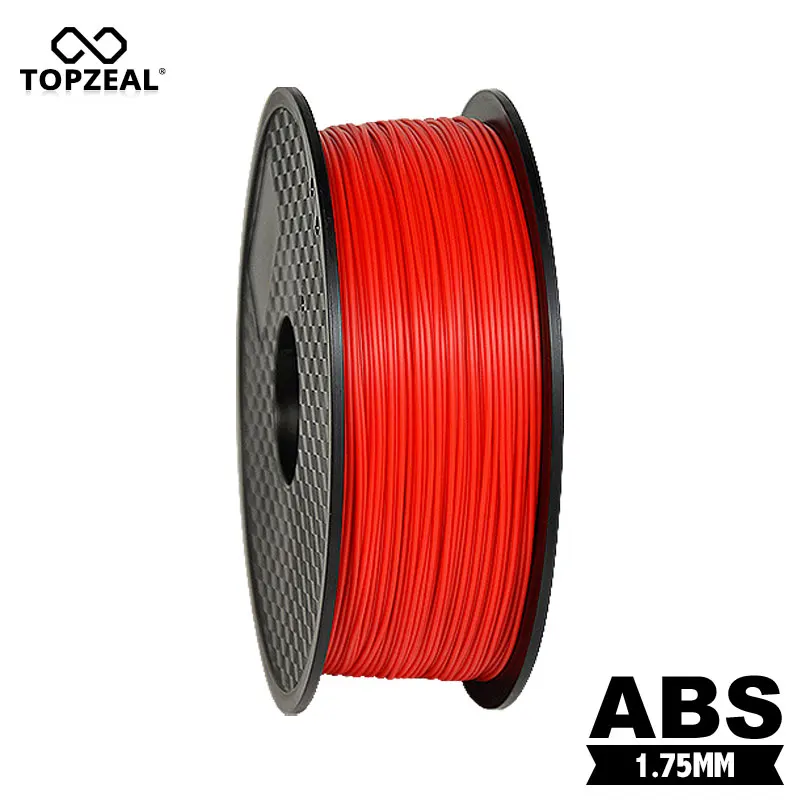 Magnetic Iron PLA Filament
Magnetic Iron PLA FilamentPRICE STARTING FROM: $35 for 1.75 mm, 500 g spool
As the name suggests, magnetic iron PLA filament has magnetic properties. This unique filament is PLA material infused with a powdered iron. It’s these iron particles that give the 3D parts their grainy gunmetal type finish. The objects will also stick to magnets, something that could be useful on various creative projects. It’s a specialist material that few will have a need for, but those who do work with it find PLA iron filament invaluable.
Magnetic iron PLA print temperature range: 195°C – 220°C
Applications
If you want to produce custom made fridge magnets, and other such novelties, magnetic iron PLA is for you. For home users, this is pretty much a novelty material. For more serious uses, magnetic filament is useful for making various DIY projects, sensors, and educational tools, etc.
Check Price of Magnetic Iron Filament on Amazon
The Pros
- Very strong and extremely durable
- Material is not soluble
- Little to no shrinkage during the cooling down process
The Cons
- Nozzle temperature needs fine-tuning
- Inflexible
- Heated bed not needed
- Material is expensive compared to other popular filaments
12.
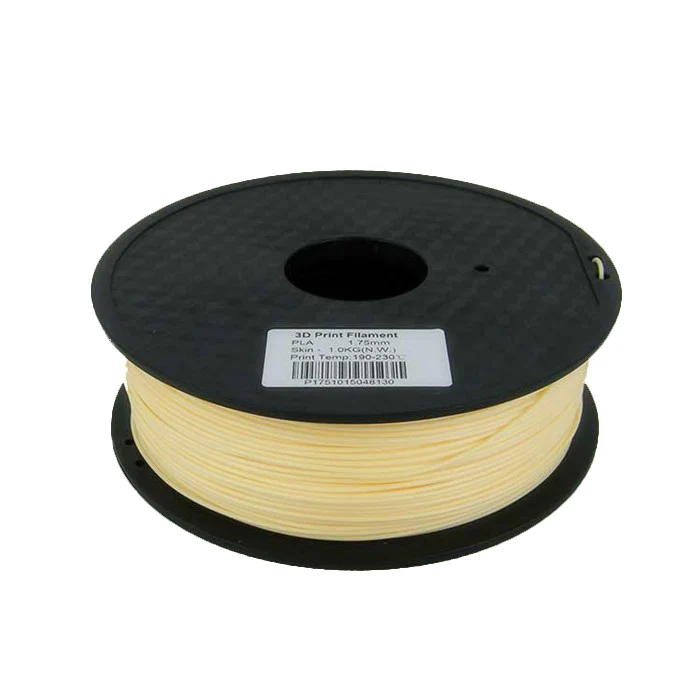 Conductive PLAImage from Proto Pasta
Conductive PLAImage from Proto PastaPRICE STARTING FROM: $17.95 for 1.75 mm, 125 g (comes in various weights)
Anyone wanting to broaden their horizons in 3D printing may want to look to conductive PLA 3D printer filament. It’s a special type of 3D material that includes a conductive carbon particulate. Without getting too technical, this means the material is able to print low-voltage electrical circuits. These will typically include sensors and light-emitting diodes (LEDs). When combined with regular PLA filament and a dual-extrusion 3D printer, users can make simple circuit boards direct from the printer’s bed. Note that conductive ABS filament is also available for users who prefer to work with ABS.
Conductive PLA temperature range: 215°C – 230°C
Applications
Conductive PLA filament is perfect for open-source electronics platform Arduino projects. If you want to create circuits, LEDs, sensors, and various low-voltage projects, you’ll want explore this filament.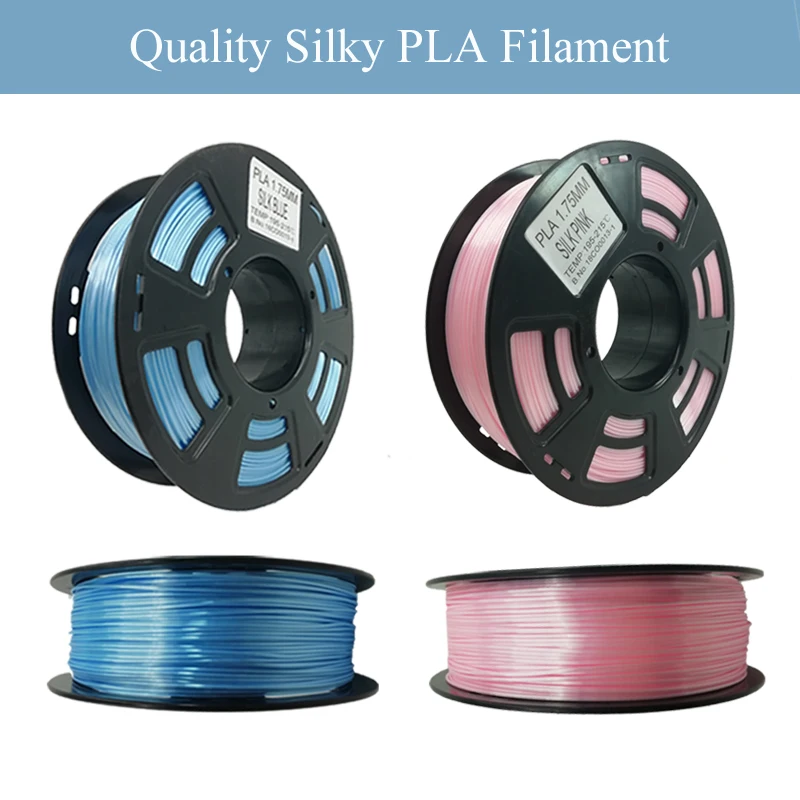
Check Price of Conductive Filament on Amazon
The Pros
- Users can produce low-voltage electronic circuits
- Not soluble
- Does not need a heated bed, though a heated bed will produce better results
The Cons
- Not very flexible or durable
- Repeated bending may break the material
- Shrinks somewhat during the cooling process
- High cost of filament
13. Carbon Fiber 3D Printer Filament
Image from Color FabbPRICE STARTING FROM: $29.99 for 1.75 mm, 500 g spool
Carbon Fiber PLA is an impressive 3D filament. The material contains tiny strands of carbon fiber which results in a material that has an excellent structure. It’s also rigid and has superior layer adhesion. Carbon Fiber PLA shares similar properties with standard PLA but it’s stiffer. It also offers more dimensional stability, which means warp-free printing. The downside to carbon fiber filament is that its abrasive nature speeds up the wear and tear of printer nozzles, especially those made of brass.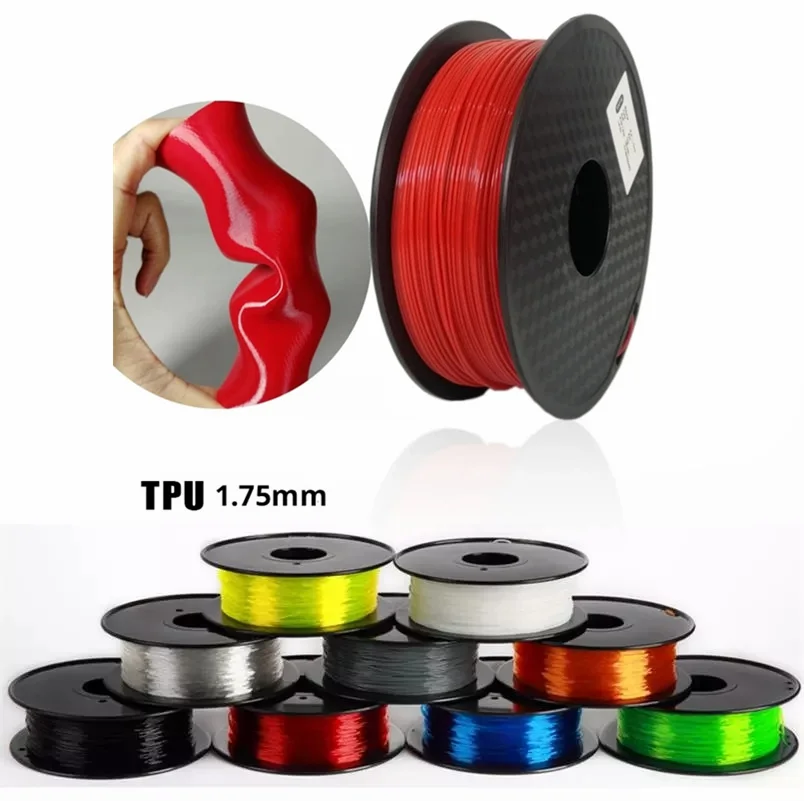
Don’t Miss: Best Carbon Fiber Filaments.
Carbon fiber print temperature range: 190°C – 230°C
Applications
Carbon fiber PLA filament is a great choice for producing high quality and strong objects. This includes items like protective casings, various mechanical parts, and many other high durability uses.
Check Price of Carbon Fiber Filament on Amazon
The Pros
- Prints quality parts
- Soluble and durable
- No heated bed needed
- Little warping and shrinkage during the cooling process
The Cons
- Material contains abrasive strands
- Excessive wear on printer nozzles, especially brass
- Regular users need to invest in harder metals for print nozzles
14. Flexible, TPE Filament
Image from Creative ToolsPRICE STARTING FROM: $31.99 for 1.75 mm, 1kg spool
TPE 3D printer filament is easily the most flexible of all the printer materials.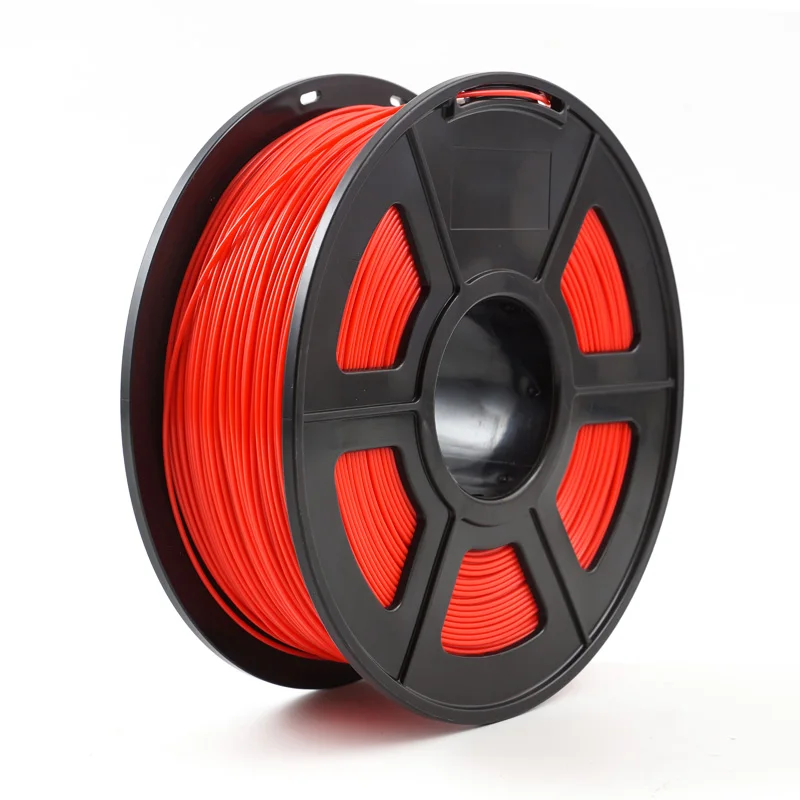 It is ‘super stretchy’ because of the thermoplastic elastomers, or TPE for short. It has such high elasticity properties that it feels like real rubber, easily springing back into shape like an elastic band. TPE is great to use with most FDM 3D printers. If you need to fabricate stretchable 3D parts that can endure more punishment than any regular ABS or PLA, this is your material.
It is ‘super stretchy’ because of the thermoplastic elastomers, or TPE for short. It has such high elasticity properties that it feels like real rubber, easily springing back into shape like an elastic band. TPE is great to use with most FDM 3D printers. If you need to fabricate stretchable 3D parts that can endure more punishment than any regular ABS or PLA, this is your material.
Don’t Miss: Best TPE Filaments.
TPE print temperature range: 225°C – 235°C
Applications
There are wide ranging applications and industries which benefit from TPE filament. We can see it used in household appliances and the automotive sector. It’s also a popular for kid’s toys, wearables, and smartphone cases, etc. For commercial use, TPE is found in medical supplies, weather seals for windows and doors, electrical insulation, and the soles of footwear, to name a few.
Check Price of TPE Filament on Amazon
The Pros
- High elasticity properties and exceptional abrasion-resistance
- Smooth consistent diameter
- Bonds well between layers (vital for high-quality)objects)
- Durable material with little shrinkage during the cooling process
- No heated bed needed
The Cons
- 3D printing with TPE is difficult for the inexperienced
- Print nozzle needs fine-tuning for optimal performance
- Can extrude from nozzle inconsistently
15.
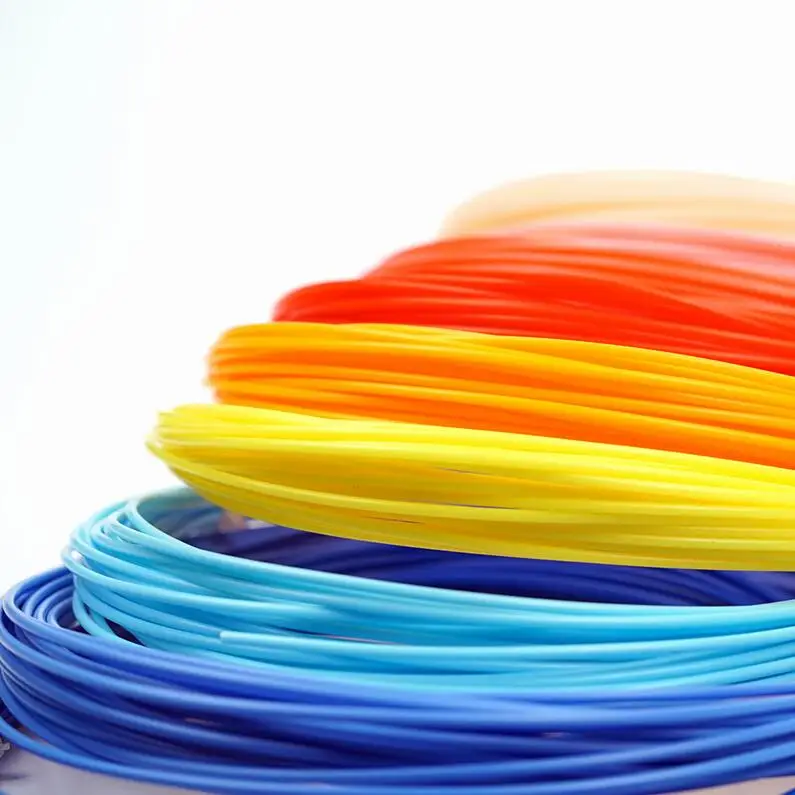 Glow in the Dark FilamentImage from Form Futura
Glow in the Dark FilamentImage from Form FuturaPRICE STARTING FROM: $17.99 for 1.75 mm, 1kg spool
The name needs little introduction as this fun filament does exactly what it says on the label—it glows in the dark. It won’t glow indefinitely though, as the 3D printed object needs exposing to a light source to charge it. Once charged it will emit light in whatever colors you have made your part in. A great use for this material it to decorate children’s bedrooms or to make Halloween themes, and other such creative ideas. It’s a safe, environmentally-friendly filament, making it harmless for everyone to use. One of the major drawbacks is that glow-in-the-dark material is abrasive. The problem with abrasive filaments is that they can quickly wear out nozzles, especially brass. If you plan to use glow-in-the-dark 3D printing material often, be sure to install a hardened steel nozzle.
Glow-in-the-dark print temperature range: 180-240 °C
Applications
Imagination drives many of the uses for this fun material.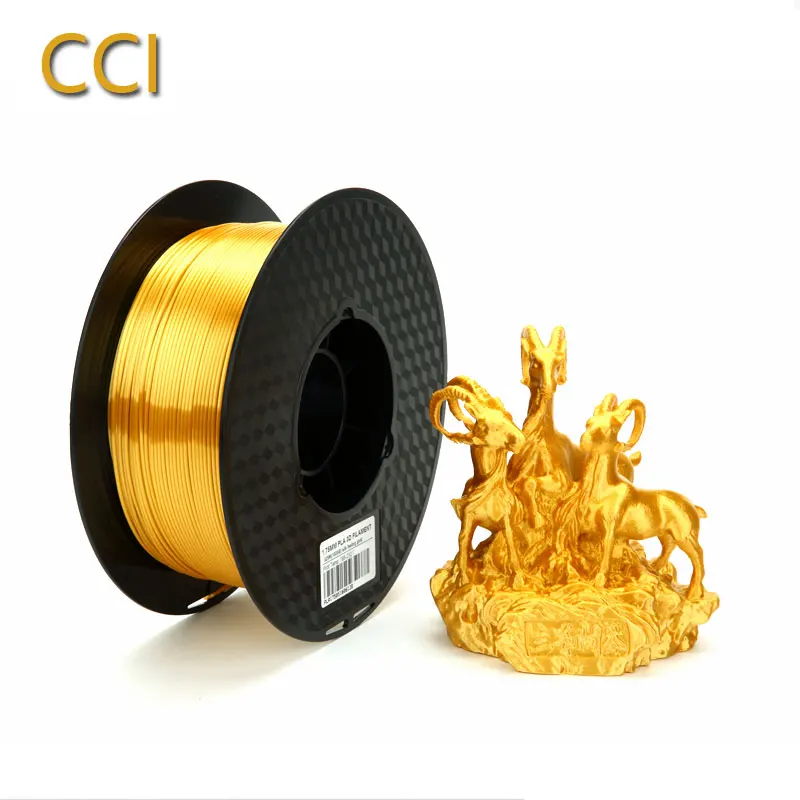 It’s popular for kid’s toys, wearable gadgets, custom phone cases, and many other novelty items. Some creative artists also find it a great medium to work with for artistic designs. Another, more practical use is for light switches as it makes them easy to find in the dark.
It’s popular for kid’s toys, wearable gadgets, custom phone cases, and many other novelty items. Some creative artists also find it a great medium to work with for artistic designs. Another, more practical use is for light switches as it makes them easy to find in the dark.
Check Price of Glow in the Dark Filament on Amazon
The Pros
- Environmentally friendly, safe to use, biodegradable
- Low shrinkage during the cooling process
- Durable
- No heated bed needed to print
- Similar to regular PLA, which makes printing easy
The Cons
- Not food safe
16. Amphora 3D Printer Filament
PRICE STARTING FROM: $00 for 1.75 mm, 1kg spool
Amphora is a great filament for anyone who wants to produce objects which are lustrous, bright, and opaque. The Eastman Chemical Company created this fancy material specifically for 3D printing.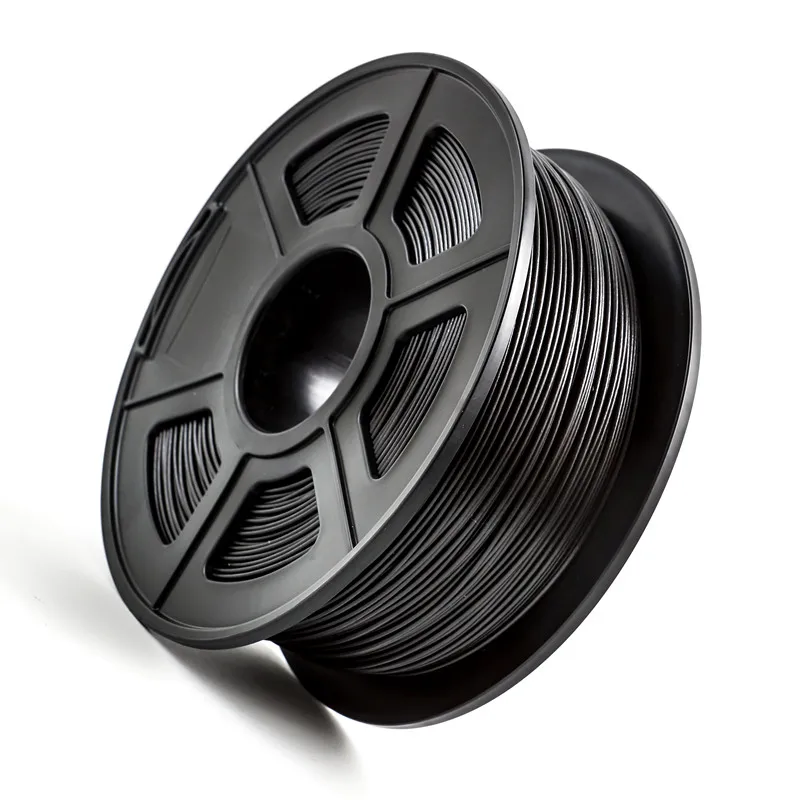 Most common thermoplastics have uses other than 3D printing technologies, but not this one.
Most common thermoplastics have uses other than 3D printing technologies, but not this one.
Amphora print temperature range: 220°C – 250°C
Applications
Amphora is more of a specialist type of lightweight, impact-resistant, 3D printer filament. Common applications include mechanical parts and other objects that need a material that is of excellent strength, highly flexible, and durable.
Check Price of Amphora Filament on Amazon
The Pros
- No notable odors during the printing process
- Strong material with a high melting point (higher than regular PLA)
- Better layer adhesion resulting in an improved finish
- Impressive performance for bridging gaps
- Little to no warping, cleaner overhangs overall
- FDA-approved, making Amphora food safe
The Cons
- Not an easy material to print with
- Printer nozzle and bed need fine tuning for best results
Choosing the Right 3D Printer Filament
This guide gives you a good insight into the different 3D printer filaments on the market.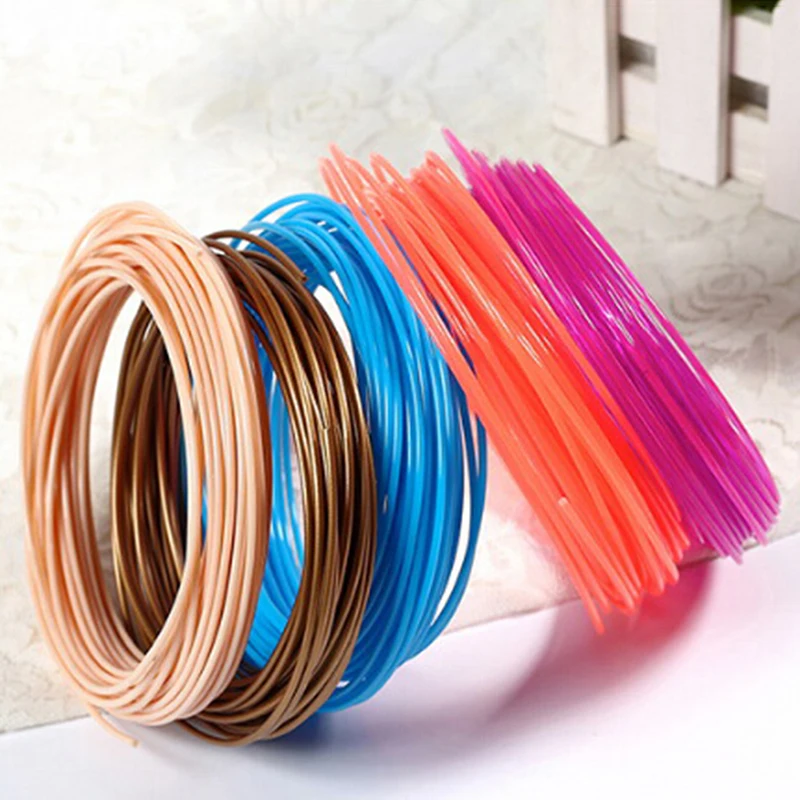 There are others, but the ones listed here are the most widespread, easy-to-source materials at the time of writing. Before you choose the right filament for your next job, you need to check a few boxes. For example, as well as knowing what you intend to build, you also need to understand your printer’s capabilities. Not all 3D printers are able of printing in all 3D materials.
There are others, but the ones listed here are the most widespread, easy-to-source materials at the time of writing. Before you choose the right filament for your next job, you need to check a few boxes. For example, as well as knowing what you intend to build, you also need to understand your printer’s capabilities. Not all 3D printers are able of printing in all 3D materials.
You also need to prepare for trial and error if you plan to experiment with some of the more tricky filaments. Another consideration is the diameter of the filament, either 1.75mm or 3mm. If you’re unsure, always opt for 1.75mm as it’s easier to work with. 3D filament storage is another crucial area to think about. These plastics can absorb moisture from the air which can mess with the printing process. When not in use, a good way to store your 3D filament is to use vacuum bags that have a double zipper line for better, airtight sealing.
And finally, don’t allow the cheapest of the cheap filaments tempt you as they could prove to be a false economy.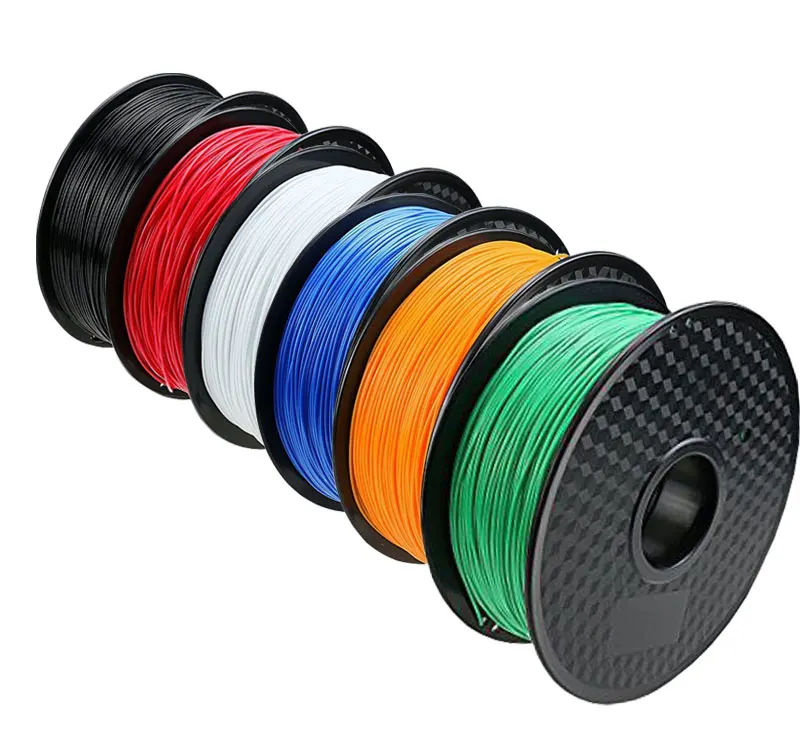 Seriously, low-cost, low-grade 3D printing filaments are more likely to contain chemical impurities. These impurities can result in unsatisfactory printed parts and clogged-up printer nozzles.
Seriously, low-cost, low-grade 3D printing filaments are more likely to contain chemical impurities. These impurities can result in unsatisfactory printed parts and clogged-up printer nozzles.
It might all sound like a lot absorb, but none of this takes long to pick once you start to dabble.
Warning; 3D printers should never be left unattended. They can pose a firesafety hazard.
Using Dissolvable Filament to Create Supports
Using Dissolvable 3D Printing Filament is an easy and effective way to create support structures for your 3D printed part. In this article, we'll take a look at the different types of dissolvable filaments on offer, the benefits of using them over insoluble filaments, and tips and tricks for the smoothest possible printing process.
FDM 3D printing is a manufacturing technology that allows you to create parts with complex geometries that are usually impossible to obtain using traditional methods. However, when using this technology, each layer of the part requires supports, either on the structure of the part itself or on an additional supporting structure.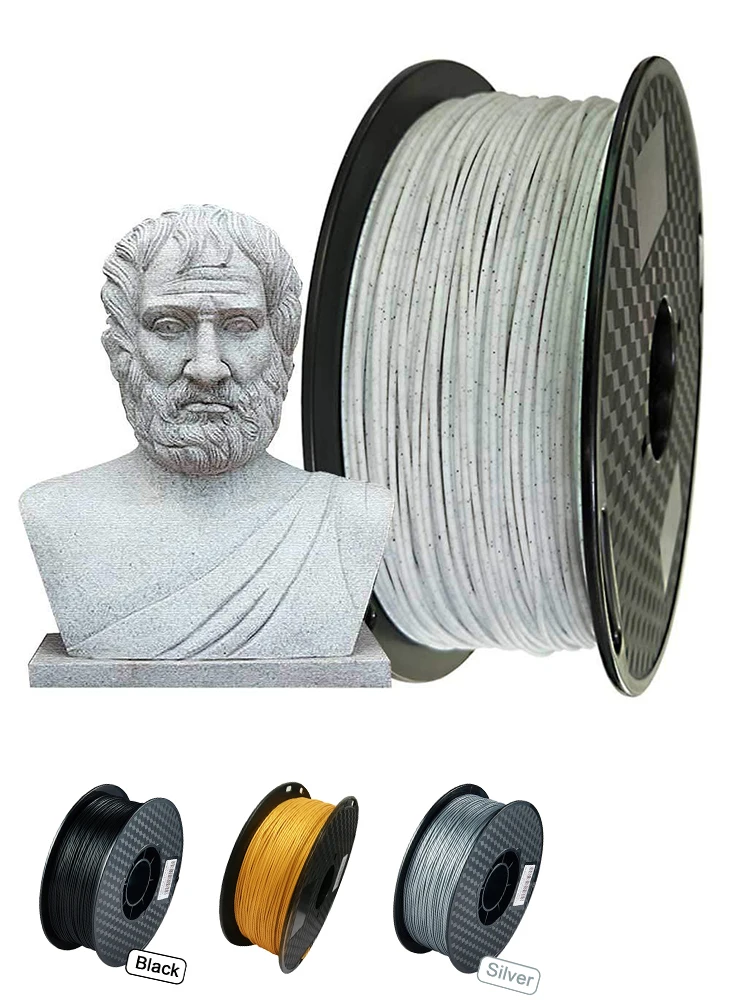
With a single extruder 3D printer, you are limited to using the base material of the printed part to create the support structure. Things are different with dual-extruder printers, since dissolvable filaments can be used to create support structures.
Soluble 3D Printing Filament Types
Water Soluble 3D Printing Filaments
Such materials are known for their solubility in ordinary water without any aggregates. This makes them an excellent option, as their dissolution does not pose any danger, and also does not cause any reaction to the base material of the product.
One of these materials is PVA, which is the most commonly used support material in 3D printing. BVOH is another widely used material with better material compatibility than PVA as well as faster dissolution time.
Water Soluble Chemical 3D Printer Filaments
Some industrial grade materials are not compatible with filaments such as PVA or BVO due to their chemical properties and/or heat resistance.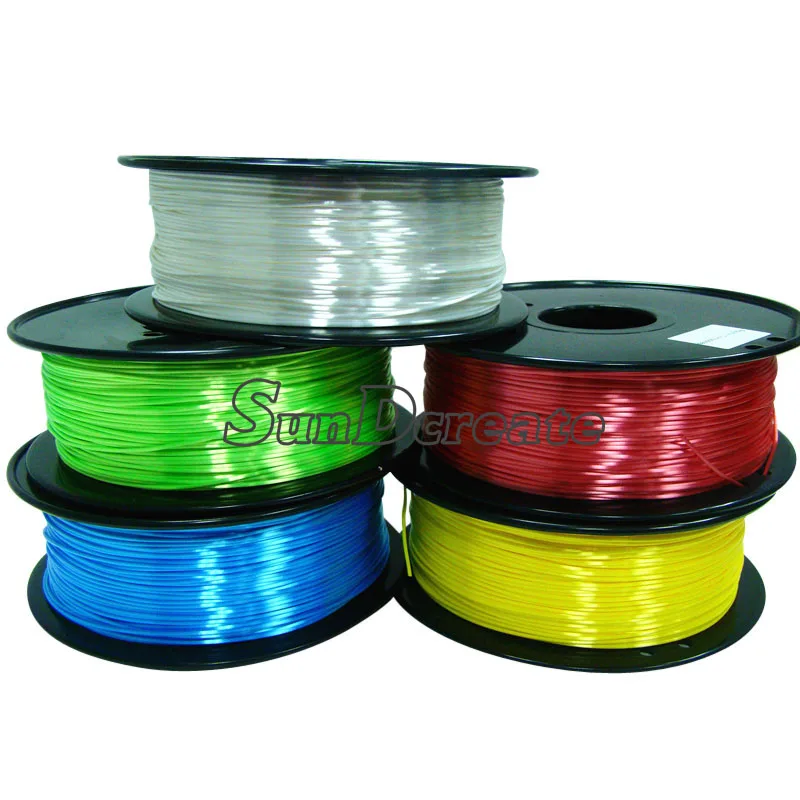 For this reason, materials like BVOH or PVA have been designed with additional properties to make them compatible with high temperature materials such as PEEK, PEKK, PPSU, PP and others.
For this reason, materials like BVOH or PVA have been designed with additional properties to make them compatible with high temperature materials such as PEEK, PEKK, PPSU, PP and others.
In order to dissolve these supports, the pH of the water must be acidic in order to break down the sugar that this type of material normally contains, as this is less dangerous than the use of solvents.
Soluble 3D Printer Filaments with Organic Solvents
These are the least used materials due to the difficulty of using organic solvents with polymers most used in 3D printing as the solvent can react with the print material and damage it.
The advantage of using these materials is their high compatibility with the construction material. The most common example is HIPS as a support material for ABS.
Insoluble and dissolvable filaments for 3D printers
Soluble filaments for support structures have advantages and disadvantages compared to using insoluble filaments:
- Easy to remove supports
- Since the supports are soluble, simply dip the model in the appropriate solvent and wait until the supports are gone.
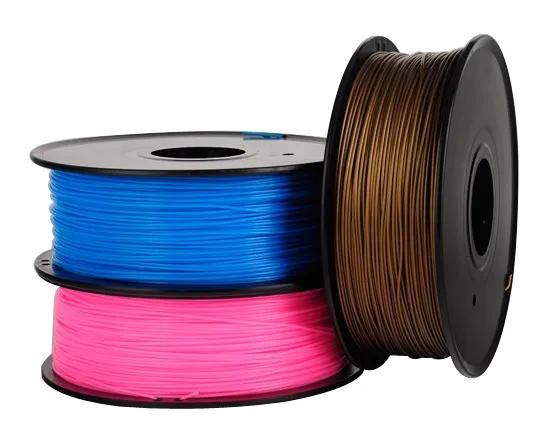 This is very useful for parts with a very complex structure.
This is very useful for parts with a very complex structure. - Improved contact surface quality
- This advantage is related to the first point; since the material is easily removed, a strong base can be created in the area where supports are required, resulting in a smooth surface without filament residue.
- Less need for post-processing of the model
- The ability to print complex 3D models with high surface quality using dissolvable filaments also reduces the need for post-processing tasks such as polishing, sanding, gluing, etc.
- Longer print times in increasing the time of 3D printing, since materials need to be changed in the process. However, there are techniques for optimizing the support structure to reduce this problem.
Tips for creating support structures with dissolvable filaments
By changing some settings in your slicer, you can get solid supports to improve the quality of your 3D model.
Strengthening the Supports
It is quite common to create thin supports for very thin parts of a model, however they are not strong and tend to break during the printing process. To increase their durability, you can adjust the following support configuration options:
To increase their durability, you can adjust the following support configuration options:
Horizontal Support Extension: Increases the overall thickness of the support, allowing the tower to be thicker and stronger.
Avoid breakage of supports during printing
The thickness of supports is equal to the diameter of the hot end, so they are usually quite fragile and can break during printing. By changing the pattern and other parameters, the strength can be increased:
- Support pattern: Patterns such as grid and triangle are quite resistant to tearing during printing. It is recommended to print such patterns only on soluble material, as they are quite difficult to remove.
- Supports printing speed: If the supports are printed too fast, there is a risk of breaking the structure. Reducing the speed avoids vibration or damage to the structure as the head passes.
Improving the quality of the surface of the model
The quality of the contact surface depends on the distance Z from the support pattern, the direction of the upper and lower perimeter lines and the amount of material holding the base of the model.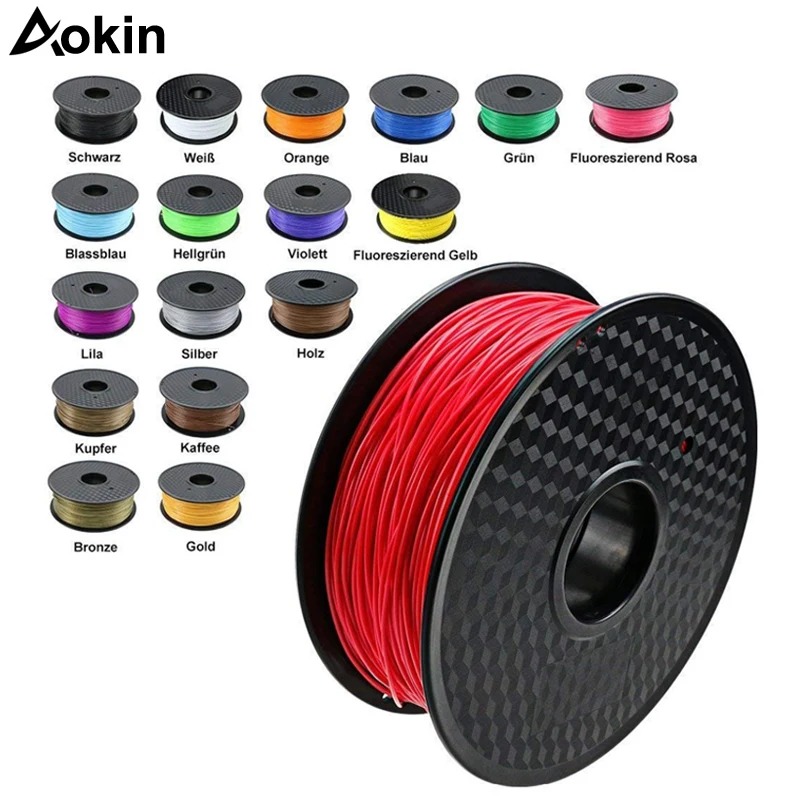 Changing these parameters can improve the quality of the surface, but will complicate the process of extracting supports.
Changing these parameters can improve the quality of the surface, but will complicate the process of extracting supports.
- Density of supports: The higher the density, the better the model will hold and therefore the surface finish will improve.
- Top/Bottom Line Direction: Changing the direction of the perimeter pattern helps hold the bottom layer of the model, as it allows the support and the perimeter pattern to intersect better.
- Support Pattern and Top/Bottom Pattern: The support and perimeter patterns affect how the support model attaches, ideally the patterns should overlap as often as possible to better secure the first layer.
Always remember that it is important to keep filaments in a dry environment, as soluble materials readily absorb moisture and can cause printing problems. Materials such as PVA and BVOH can be dissolved in ordinary water. This water can also be heated to shorten the removal time of supports.
We hope you follow our advice and recommendations to improve the surface quality of your 3D printed parts and make the process faster and more efficient.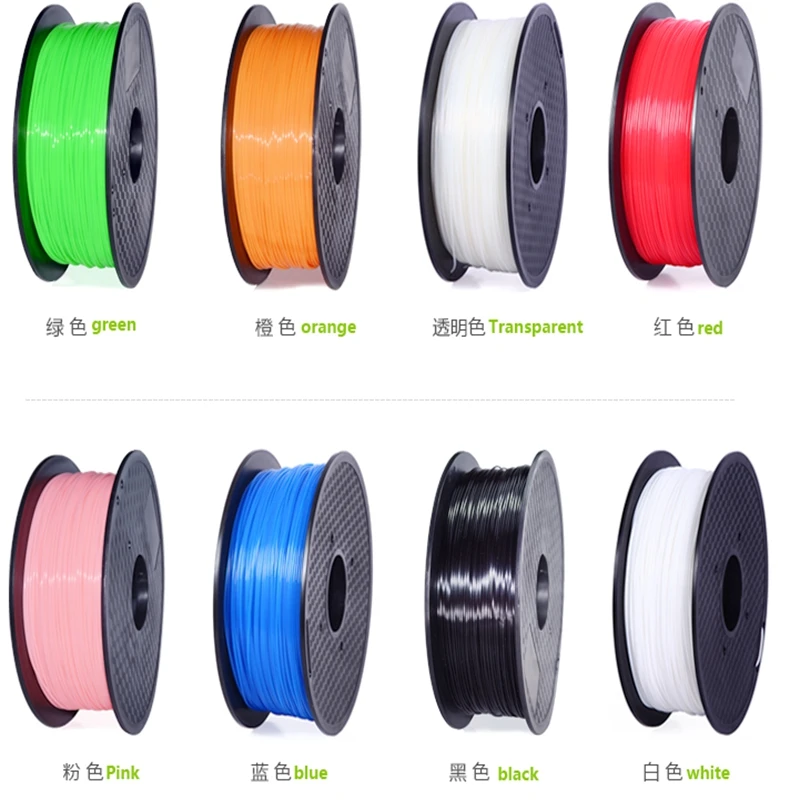
We will keep you updated with the latest news!
Your team IGO3D Russia
Our groups on social networks:
Vkontakte
Telegram
Youtube
90,000 threads and resin 9000Toners and CTI Circular Circrats for 2Ds . 3D needs different consumables: materials for additive manufacturing. Although this manual is primarily intended for 3D Printing Filament will also cure other 3D printing materials such as resins, metals, composites, etc. In this way, you can learn more about what types of materials you have at hand, properties each of them, their advantages and disadvantages, as well as see some buying recommendations.
| Best | Smartfil PLA 1. 75mm,... 75mm,... | View Features | See offer | |
| Price quality | Filament PLA 1.75 mm,... | View Features | See offer | |
| Our favorite | SMARTFIL CLEAN, 2.85 mm,... | View Features | See offer | |
SMARTFIL PLA, 1. 75 mm,... 75 mm,... | View Features | See offer |
Best Smartfil PLA 1.75 mm,...
Price quality Filament PLA 1.75 mm,...
Our favorite SMARTFIL CLEAN, 2.85 mm,...
SMARTFIL PLA, 1.75 mm,...
View features
View features
View features
View features
No ratings 9Ol000 1.2 SANLU PLA
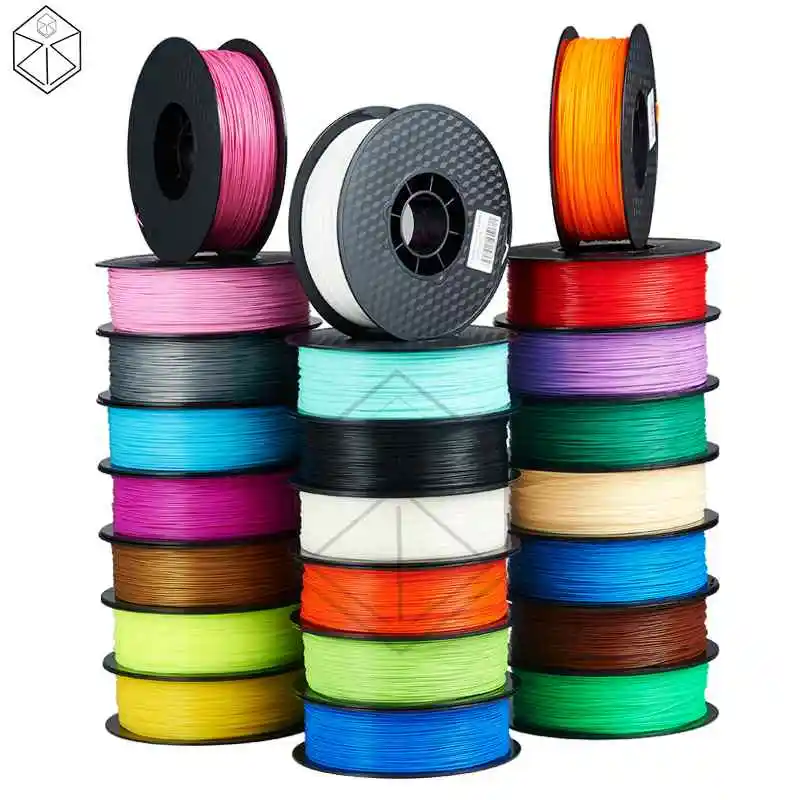 1.5 Nylon or polyamide (PA)
1.5 Nylon or polyamide (PA) - 3.2.1 Advantages and disadvantages 3.2.2 How to choose the right resin
- 3.3.1 Fillers (metal, wood,…)
- 3.3.2 composites
- 3.3.3 hybrid materials
- 3.3.3 hybrid materials
- 3.3.3.30048
- 3.3.5 Soluble materials (PVA, BVO ...)
- 3.3.6 Food and biomaterials
- 3.3.7 Concrete
The best threads for 3D printerers
want to buy some of best 3d printer filament , here are some great value for money recommendations:
Filament type GEEETECH PLA
Thread GEEETECH PLA.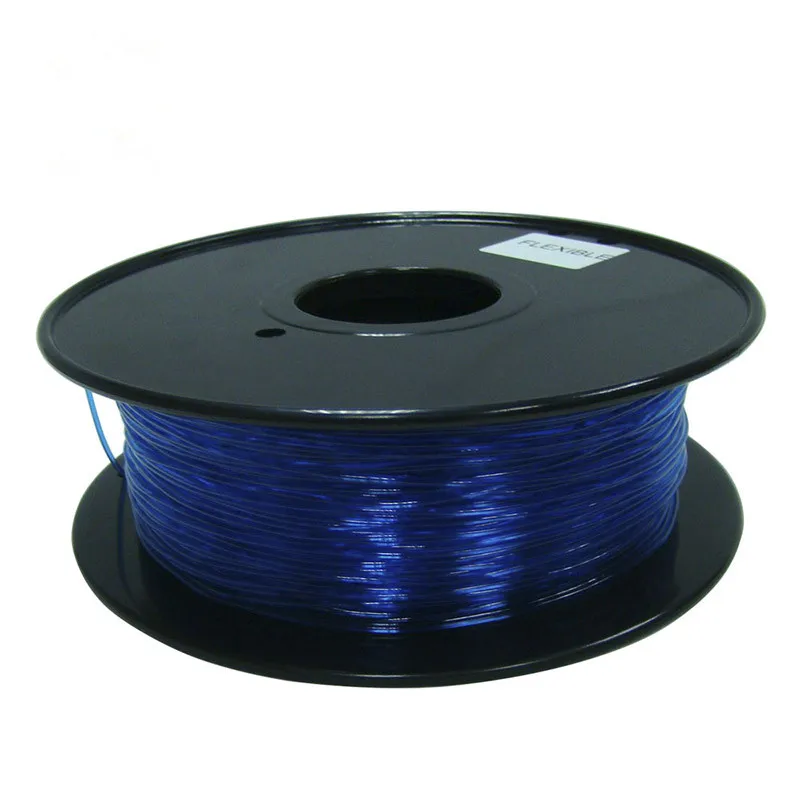 ..
..
No ratings
This PLA 3D printer filament spool is available in 12 different colors to choose from. This is a 1.75mm spool, is compatible with most FDA printers, and weighs 1kg. In addition, it provides a very smooth surface with high tolerances up to 0.03 mm.
SANLU PLA
SUNLU PLA + filament...
No ratings
This is another of the best brands of 3D printer filament. This is also a PLA type, 1.75 mm thick, one kilogram per roll, and with even better tolerance than the previous , only ±0.02 mm. As for the colors, they are available in 14 different (and combinations).
Itamsys Ultem PEI
Original 3D filament...
No ratings
This is a spool of high performance thermoplastic such as PEI or polyesterimide. An excellent material if you are looking for strength, thermal stability and the ability to withstand self-cleaning steam.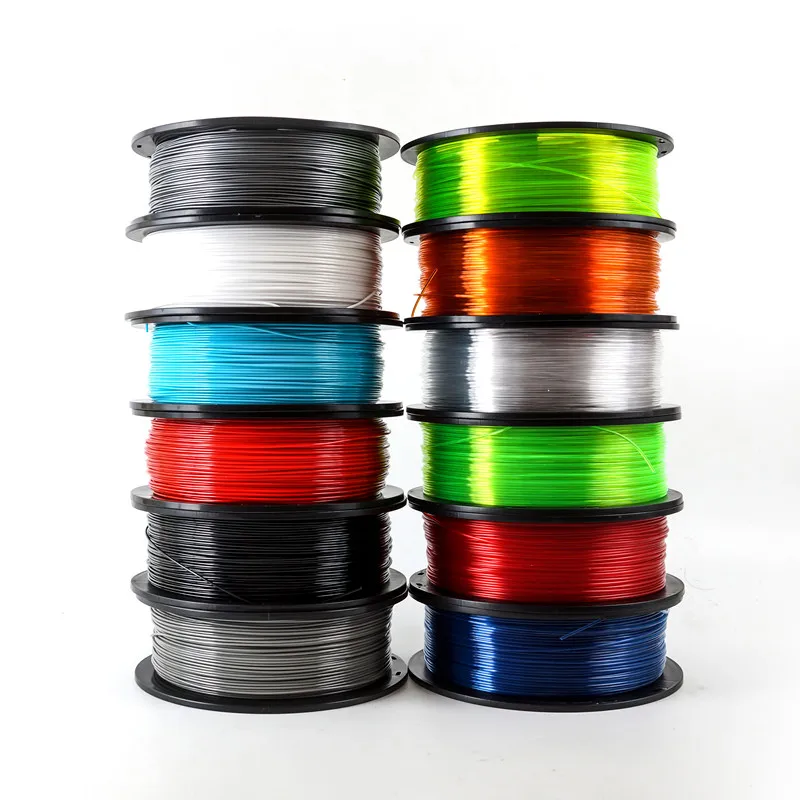 It is also 1.75mm and has tolerances of 0.05mm up or down, but 500 grams.
It is also 1.75mm and has tolerances of 0.05mm up or down, but 500 grams.
Itamsys Ultem flame retardant
Original 3D filament...
No ratings
Another roll of filament for a 3D printer from the same loam and weighing half a kilogram. This is also PEI, but with metal particles integrated, making this flame retardant thermoplastic for high performance applications. Material that may even be of interest to the automotive and aerospace industries.
GIANTARM type PLA
GIANTARM PLA thread...
No ratings
This is pack of 3 spools, each weighing 0.5 kg. Also 1.75 mm thick, high quality, with a tolerance of 0.03 mm, up to 330 meters of filament per spool and suitable for 3D printers and 3D pens. The big difference is that it is available in precious metal colors: gold, silver and copper.
MSNJ PLA (wood)
3D printer filament...
No ratings
This other 1.75mm or 3mm PLA roll (your choice), weighing 1.2kg and finishing tolerances from -0.03mm to +0.03mm on a perfect surface, this product is perfect for art work. And that's because you have it in colors that will mimic yellowwood, palmwood, and ebony.
AMOLEN PLA (wood)
AMOLEN PLA thread...
No ratings
Filament 1.75 mm, PLA, excellent quality, but available in very exotic colors , such as mahogany, walnut, ebony, etc. However, it not only imitates these colors, but also contains 20% real wood fibers.
SANLU TPU
SUNLU TPU Flexible...
No ratings
3D printer filament material spool TPU i.e. flexible material (e.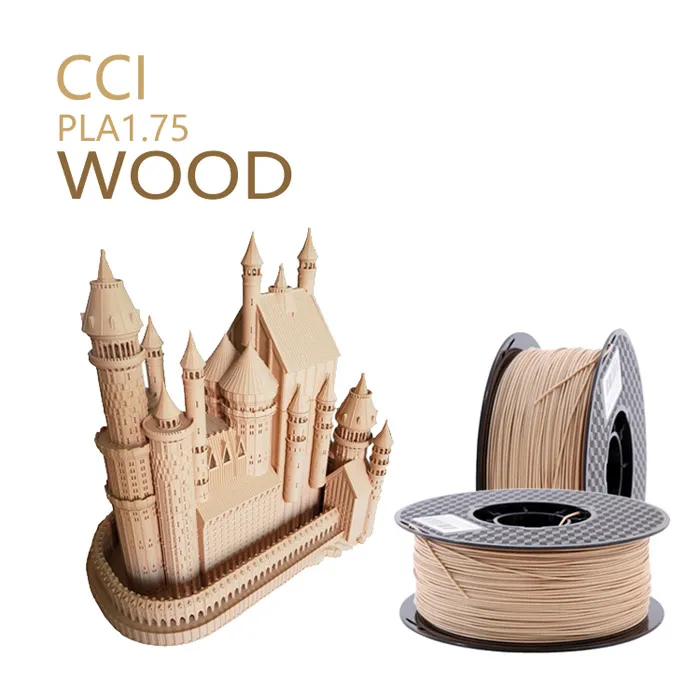 g. silicone cases for mobile phones). Each coil weighs 500 grams, regardless of the color chosen from the 7 available. And, of course, it is non-toxic and environmentally friendly.
g. silicone cases for mobile phones). Each coil weighs 500 grams, regardless of the color chosen from the 7 available. And, of course, it is non-toxic and environmentally friendly.
SANLU TPU
SANLU JAYO TPU...
No ratings
If you want an alternative to the above, is also made of flexible TPU but in brighter colors, you can also choose this other drum. In addition, this firm has improved the accuracy by 0.01 mm compared to the previous one. Each coil is 0.5 grams and very high quality.
eSUN ABS+
eSUN ABS+ Thread...
No ratings
Filament for 3D printer type ABS+ , 1.75 mm, with dimensional accuracy 0.05 mm, weight 1 kg, available in two colors: cold white and black. The thread is very resistant to cracks and warping, as well as wear and heat, and is even suitable for mechanical engineering.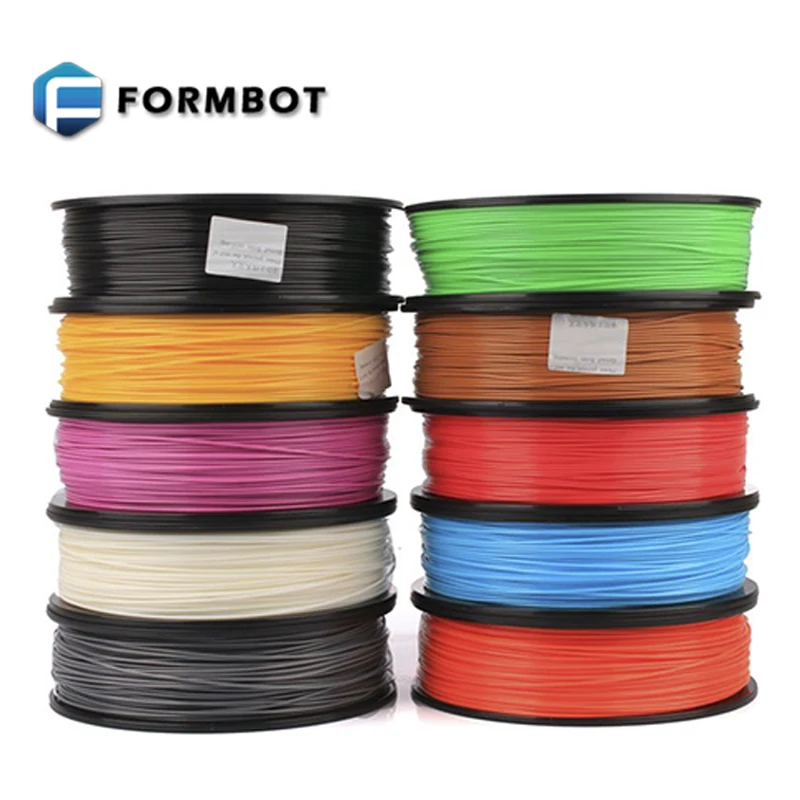
Smart Hips
Smartfil HIPS, 1.75mm,...
No ratings
Available in black and in two diameters to choose from, such as 1.75mm and 1.85mm. Each coil 750 grams, with Thigh material which has similar characteristics to ABS but with less warpage and can be sanded and painted with acrylics. It also has excellent mechanical properties, is highly sought after by the industrial sector, and can be used as a substrate, dissolving easily in D-limonene.
This brand, Smartfil, specializes in advanced yarns that outperform conventional yarns.
FontierFila Pack 4x Multimaterial
4x250g 1.75mm...
No ratings
You can also buy this pack of 4 3D printer filaments with a thickness of 1.75mm and a weight of 250 grams per spool, only 1kg between all. The good thing is that you have four types of material to get started and test the performance of each: white nylon, clear PETG, red Flex, and black HIPS .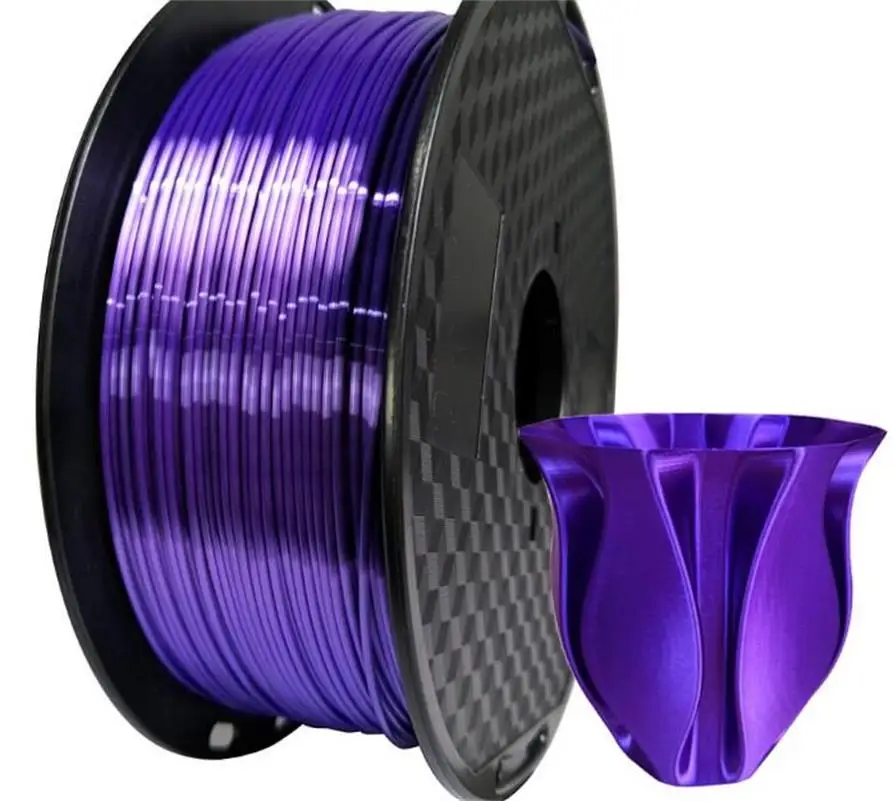
TSYDSW Carbon fiber
Printer filament...
No ratings
If you are looking for something lightweight, advanced and durable, this printer filament is made from PLA but includes also carbon fiber. Available in 18 colors to choose from, in 1kg spools and 1.75mm in diameter.
Carbon fiber FJJ-DAYIN
FJJ-DAYIN, 30% fiber...
No ratings
3D printer filament spools available in 100g, 500g and 1kg. Black color, thickness 1.75 mm and a mixture of materials such as acrylonitrile butadiene styrene (ABS) and 30% carbon fiber reinforcement .
Shape Futura Apollox
FormFutura - ApolloX...
No ratings
White ABS spool weighing 0.75 kg. East thread has a high performance , for professional use such as engineering. It is weather resistant and also UV resistant. It has good heat resistance and is FDA and RoHS certified.
It is weather resistant and also UV resistant. It has good heat resistance and is FDA and RoHS certified.
NEXBERG HANDLE
Filament NEXBERG ASA...
No ratings
These 3D printer filaments are from ASA, i.e. Acrylonitrile Styrene Acrylate , a thermoplastic with some advantages over ABS such as UV resistance and low yellowing tendency. In addition, they are spools of 1kg filament with a diameter of 1.75mm and are available in white and black.
eSUN cleaning thread
eSUN Cleaning Filament...
No ratings
Un cleaning filament like this one is a type of filament that can be used to clean the extruder nozzle, prevent clogging, and also to remove debris when you are about to switch from one type material to another or when you are going to change the color. It has a diameter of 1.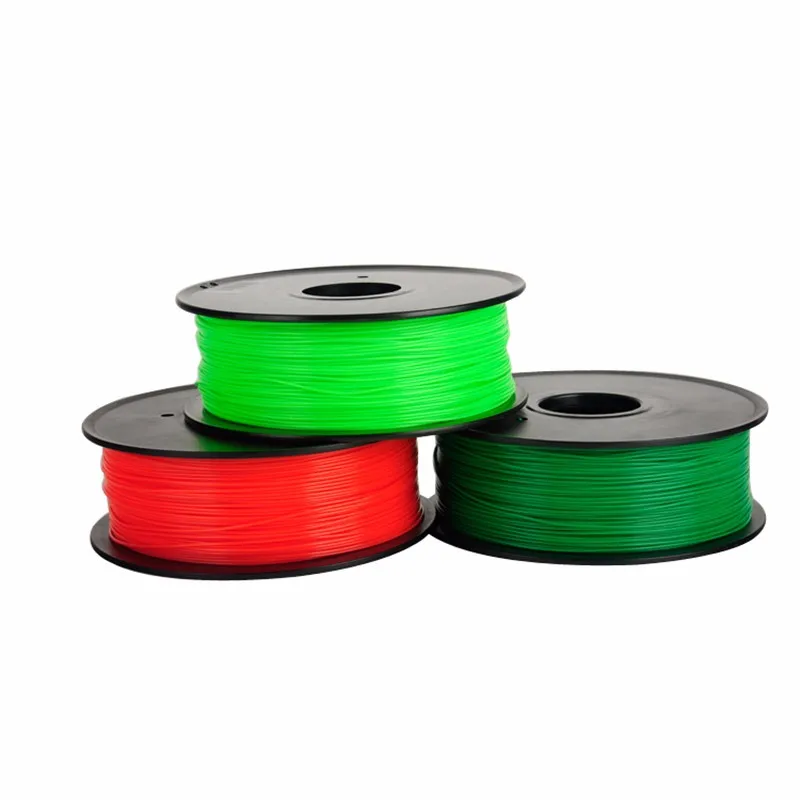 75 mm and is sold in spools of 100 grams.
75 mm and is sold in spools of 100 grams.
eSUN PA
eSUN Nylon thread...
No ratings
Coil weight 1 kg and thickness 1.75 mm, white and dark natural colors to choose from. This thread is made of nylon, so it is a synthetic fiber, non-toxic and environmentally friendly. Some drums use 85% nylon and the rest PA6 and 15% carbon fiber. , which gives greater strength, stiffness and toughness.
| Best | SUNLU standard resin,. .. .. | View Features | See offer | |
| Price quality | JAYO Resin for... | View Features | See offer | |
| Our favorite | ANYCUBIC Resin.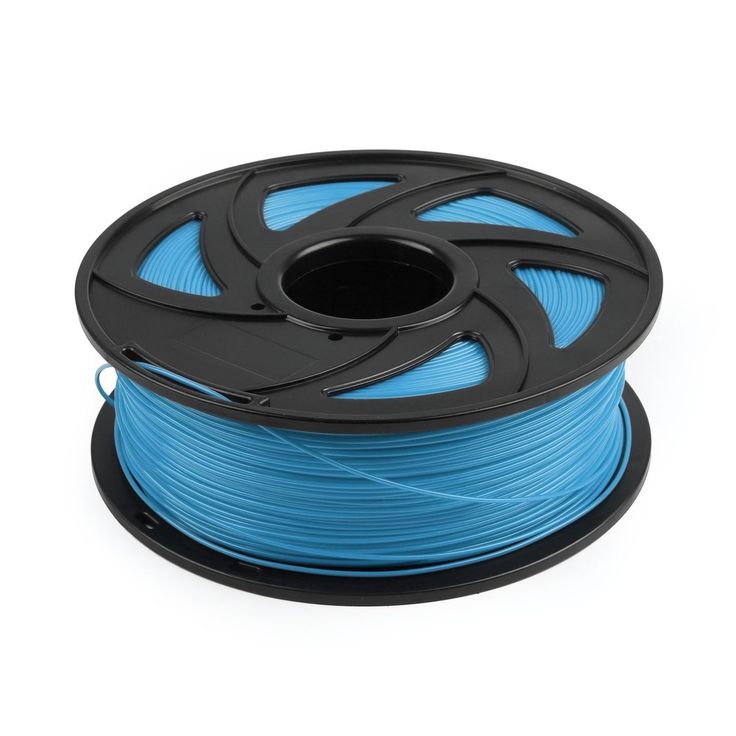 .. .. | View Features | See offer | |
| ELEGOO Can be washed with water... | View Features | See offer |
Best SUNLU standard resin,.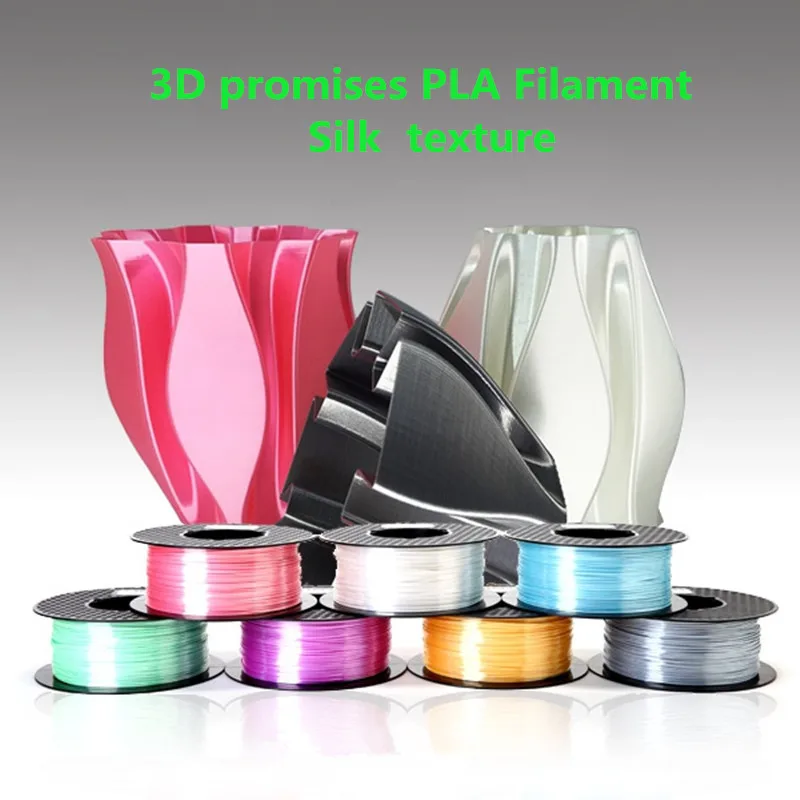 ..
..
Price quality JAYO Resin for...
Our Favorite ANYCUBIC Resin...
ELEGOO Can be washed with water...
View features
View features
View features
View features
No ratings
No estimates
No estimates
No assessments
View offer
View offer
View offer
View offer
The best resins
If you are looking for consumables for your polymer 3D printer , you also have the following recommended boats:
ELEGOO LCD UV 405nm
ELEGOO LCD UV 405nm...
No ratings
Gray resin photopolymer for 3D printers with LCD UV lamp, compatible with most XNUMXD printers. polymer LCD and DLP . Available in 500 grams and 1 kg and also available in red, black, green, beige and translucent colors.
ANYCUBIC LCD UV 405nm
ANYCUBIC Resin.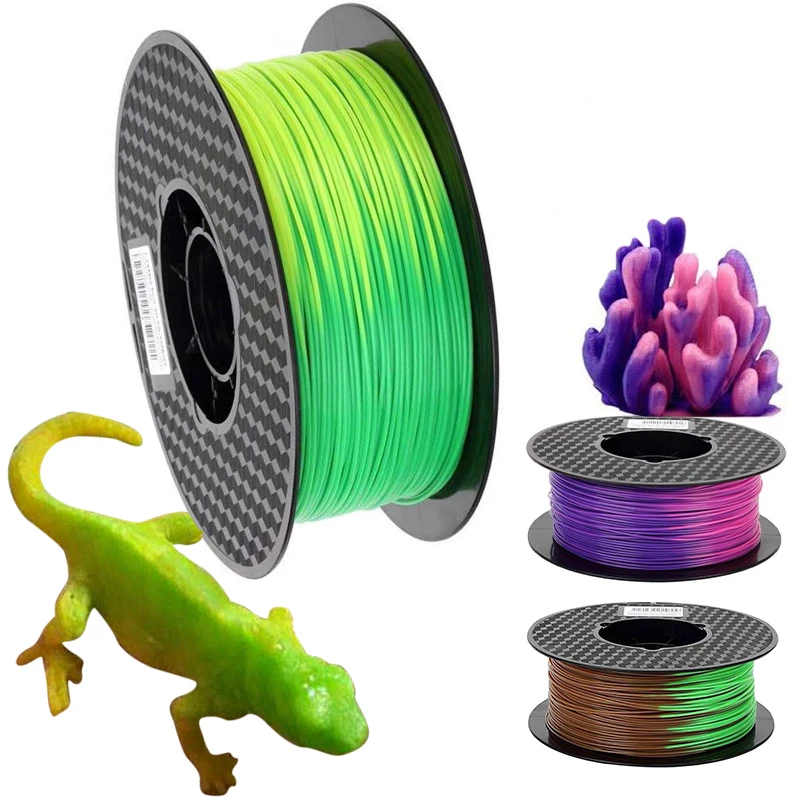 ..
..
No ratings
ANYCUBIC is top brand in 3D printing and has this fantastic resin in 0.5kg or 1kg cans with different colors to choose from. Works with most 3D LCD printers and DLP lamp. In addition, the results will be exceptional.
SANLU Standard
SUNLU Standard Resin, SLA...
No ratings
Una quality resin and compatible with most 3D printers resin. Compatible with LCD and DLP printers, 405nm UV, fast curing, 1kg weight per can and available in white, black and rose beige.
ELEGOO LCD UV 405nm ABS-like
ELEGOO LCD UV 405nm...
No ratings
This other standard photopolymer from the famous ELEGOO brand is also available in 0.5 and 1 kg cans, with a choice of colors. Compatible with most DLP and LCD printers, with a similar finish to ABS but resin 3D printers.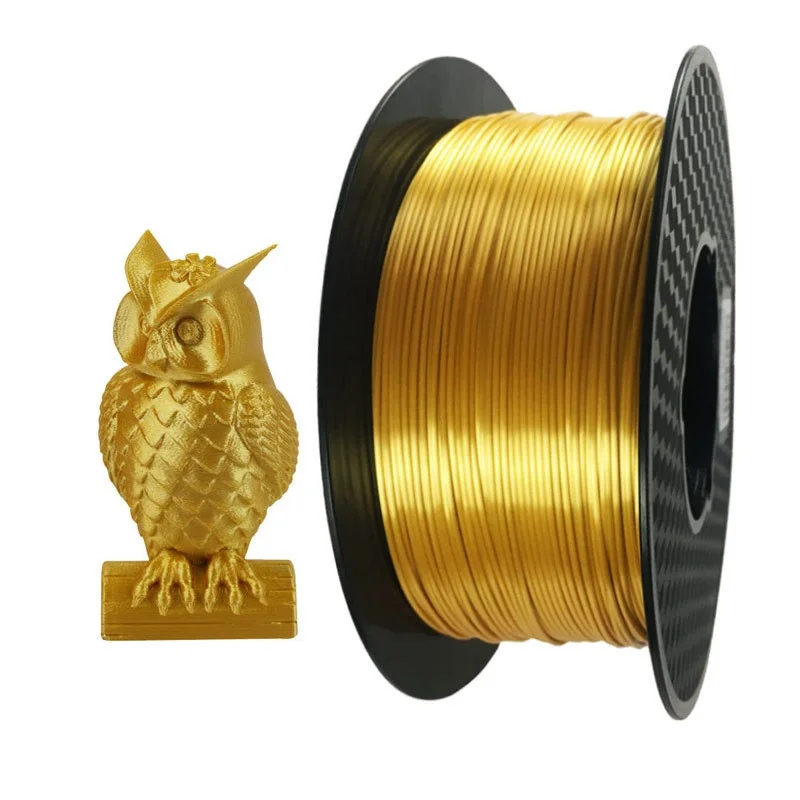
RESORT
3D printer RESION...
No ratings
Available in sizes 0.5 kg and 1 kg, one black resin F80 elastic , with high elongation and tear resistance, it is also very resilient, which opens up a large number of possible applications. Compatible with MSLA, DLP and LCD.
3D Printing Materials: What Materials Do 3D Printers Use? professional use. However, there are many more materials that can be used with 3D printers and you should be aware of their properties.
In each of the materials you will see a brief description of what the material is, and the list of property is identical to this:
- Tensile load : refers to the load that the material can withstand before significant deformation.
- stiffness : this is the resistance to elastic deformation, that is, at low stiffness it will be an elastic material, and at high stiffness it will be a little pliable.
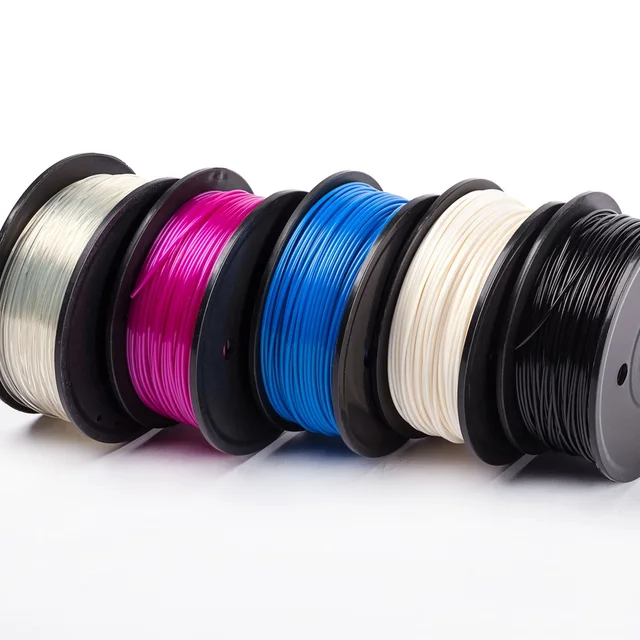 For example, if you want better shock absorption and flexibility, you should look for something with a low stiffness like polypropylene or TPU.
For example, if you want better shock absorption and flexibility, you should look for something with a low stiffness like polypropylene or TPU. - durability : refers to the quality or strength of the material.
- maximum service temperature : MST is the maximum temperature a material can be exposed to without loss of thermal insulation properties.
- Coefficient of thermal expansion (expansion) : measures the change in volume or length of a material in response to a change in temperature. If it has a high degree, it will not work for applications such as rulers or parts that must maintain their dimensions at any temperature, or they will expand and be inaccurate or will not fit.
- Density : the amount of mass in relation to volume, being denser, it can be more solid and uniform, but at the same time it loses lightness. For example, if you want the material to float, you will have to look for something with a lower density.
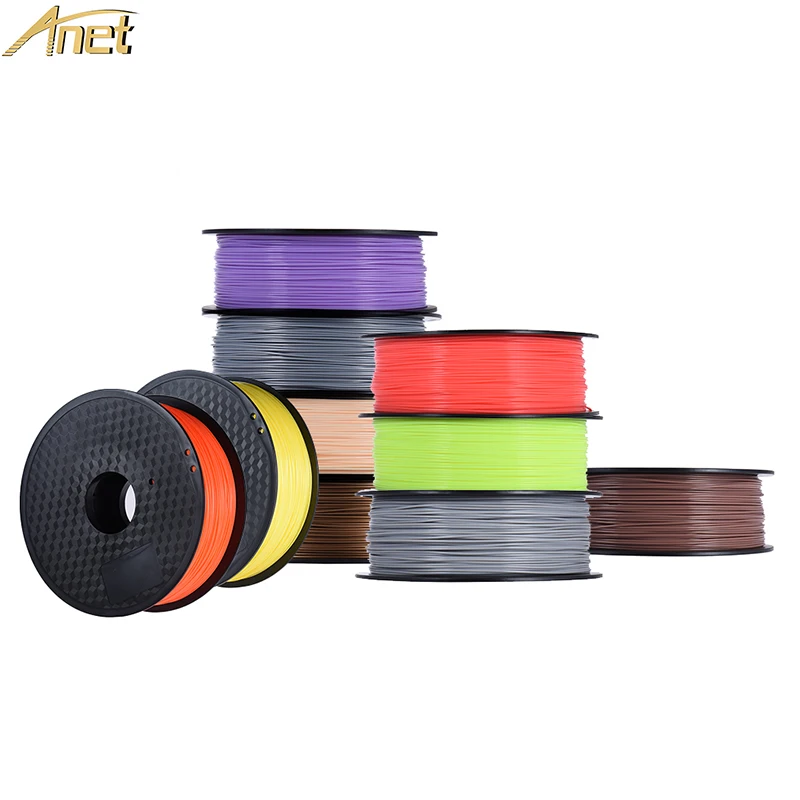
- Ease of Printing : How easy or difficult it is to print with the specified media.
- extrusion temperature : the temperature needed to melt and print it.
- need heated bed : Do you need a heated bed.
- bed temperature : optimal temperature of the heated bed.
- UV resistance : if it is resistant to ultraviolet radiation, such as exposure to the sun without deterioration.
- Resistencia al Agua : resistant to water, immersion in water or the elements, etc.
- soluble : Some materials dissolve in others, which may be useful in some cases.
- Chemical resistance : resistance of the surface of the material to wear caused by environmental conditions.
- Fatigue resistance : When a material is subjected to periodic loading, the fatigue strength will indicate what the material is capable of withstanding without failure.
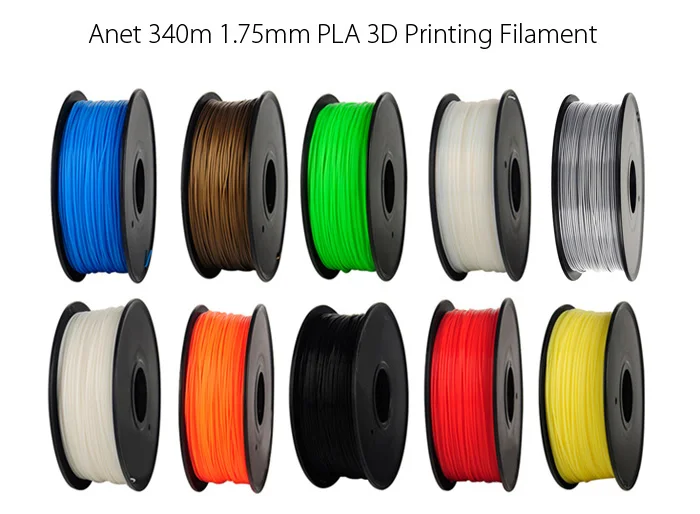 For example, imagine that you are creating a part that needs to be bent during use, because a low resistance material can fail or break in 10 bends, while others can withstand thousands and thousands of bends...
For example, imagine that you are creating a part that needs to be bent during use, because a low resistance material can fail or break in 10 bends, while others can withstand thousands and thousands of bends... - Applications (use case) : A practical example of what it can be used for.
Filament
There are many types of 3D printer filament based on polymers (and hybrids), some non-toxic, eco-friendly, biodegradable (from some made from algae to those made from hemp, vegetable starches, vegetable oils, coffee, etc. Specifications
When choosing , you must take into account several factors :
- Material type : Not all 3D printers accept all materials, it is important to choose a compatible one. In addition, you must keep in mind the properties (see the subsections for the properties of each) of each material in order to know if it will adapt to the application you are going to give it.
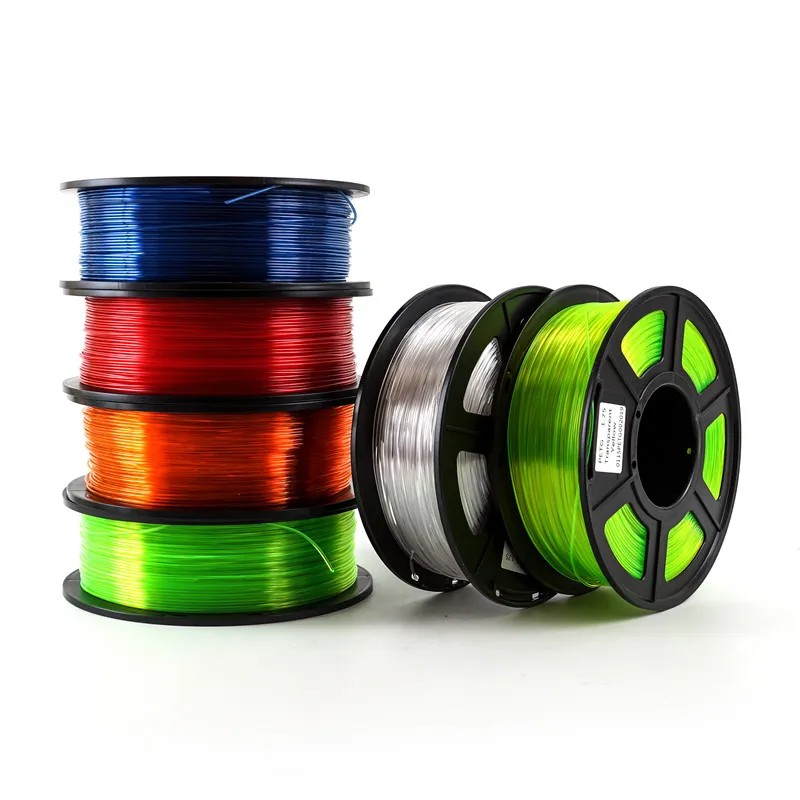
- Thread diameter : 1.75mm is the most common and most compatible, although other thicknesses are available.
- Use : PLA or PET-G is best for beginners, PP, ABS, PA and TPU for professional use. It's also important to consider if you're going to use them for medical purposes, for food containers or utensils (non-toxic), or if they need to be biodegradable, etc.
Some of the most commonly used :
PLA
PLA is the English abbreviation for PolyLactic Acid. and is one of the most common and cheapest 3D printing materials. That's because it's good for a lot of applications, it's cheap, and it's easy to print with. This polymer or bioplastic has properties similar to polyethylene terephthalate and is used in many applications.
- Breaking load : high
- hardness : high
- durability : medium-low
- maximum operating temperature : 52°C
- Coefficient of thermal expansion (expansion) : under
- Gravity : High Medium
- Easy to Print : High Medium
- extrusion temperature : 190 – 220ºC
- need heated bed : optional
- bed temperature : 45-60ºC
- UV resistance : short
- Resistencia al Agua : short
- instant : short
- Chemical resistance : short
- Fatigue resistance : short
- Applications (use case) : Most of the 3D printed parts and figures are made of PLA.
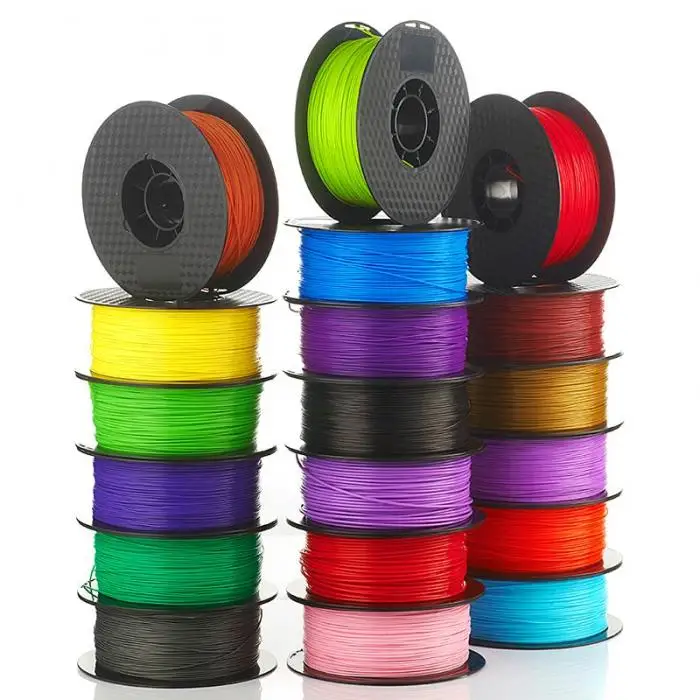
Meaning of ABS and ABS+
El ABS is a type of polymer, specifically acrylonitrile butadiene styrene plastic. . It is a highly impact resistant material used in industry and domestic applications for many purposes. This amorphous thermoplastic also has an improved version known as ABS+.
- Breaking load : Medium
- hardness : medium
- durability : high
- maximum operating temperature : 98°C
- Coefficient of thermal expansion (expansion) : high, although resists heat very well
- Gravity : medium-low
- Easy to print : high
- extrusion temperature : 220 – 250ºC
- Heated bed required Yes
- bed temperature : 95 – 110ºC
- UV resistance : short
- Resistencia al Agua : short
- instant : short
- Chemical resistance : short
- Fatigue resistance : short
- Applications (use case) : LEGO, Tente and other building blocks and many automotive parts are made from this material.
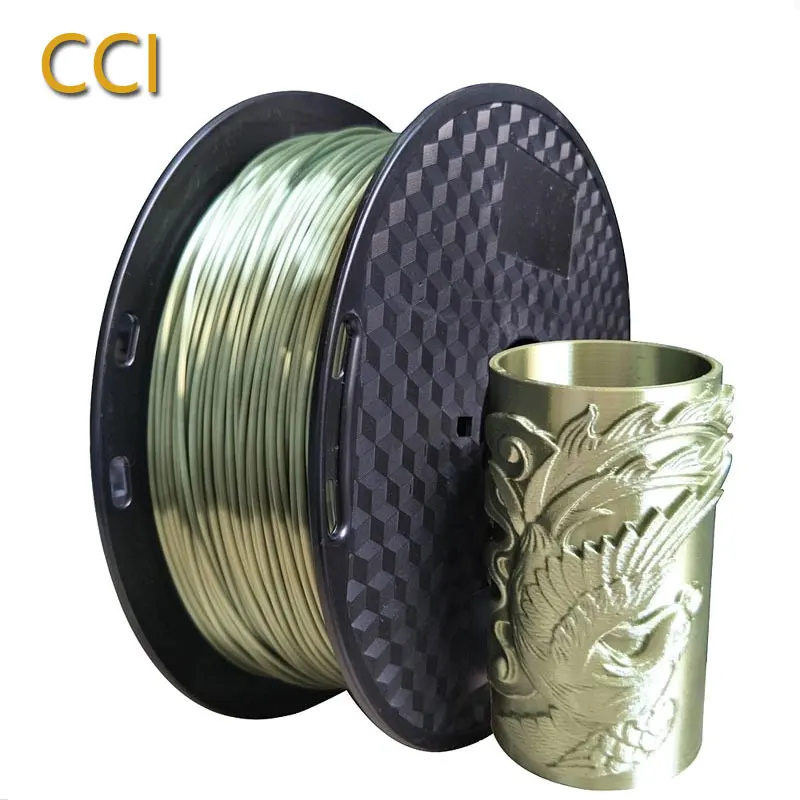 It is also used to make plastic flutes, cases for TVs, computers and other household appliances.
It is also used to make plastic flutes, cases for TVs, computers and other household appliances.
HIPS
El HIPS material or high impact polystyrene (also called PSAI) This is another of the most commonly used materials in 3D printers. This is a variant of polystyrene, but it has been improved to not be as brittle at room temperature by adding polybutadiene, which also improves impact resistance.
- Breaking load : short
- hardness : very high
- durability : high medium
- maximum operating temperature : 100°C
- Coefficient of thermal expansion (expansion) : under
- Density : Medium
- Easy to print : Medium
- extrusion temperature : 230 – 245ºC
- Heated bed required Yes
- bed temperature : 100 – 115ºC
- UV resistance : short
- Resistencia al Agua : short
- instant : yes
- Chemical resistance : short
- Fatigue resistance : short
- Applications (use case) : Used for automotive components, toys, disposable razors, computer keyboards and mice, household items, telephones, dairy product packaging, etc.
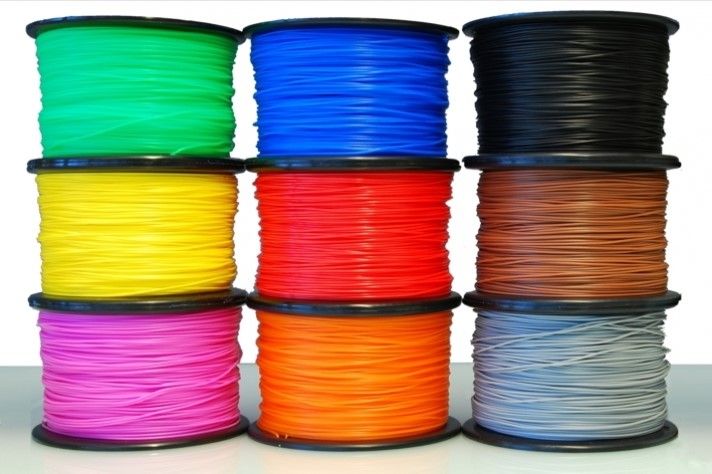
PET
El polyethylene terephthalate or PET (polyethylene terephthalate) This is a very widely used type of plastic polymer from the polyester family. It is obtained by a polycondensation reaction between terephthalic acid and ethylene glycol.
- Breaking load : Medium
- hardness : medium
- durability : high medium
- maximum operating temperature : 73°C
- Coefficient of thermal expansion (expansion) : under
- Density : Medium
- Easy to print : high
- extrusion temperature : 230 – 250ºC
- Heated bed required Yes
- bed temperature : 75 – 90ºC
- UV resistance : short
- Resistencia al Agua : good
- instant : No
- Chemical resistance : good
- Fatigue resistance : good
- Applications (use case) : It is widely used to make beverage containers such as water or soft drink bottles, although non-PET containers have been advertised recently as this material can be somewhat toxic to health.
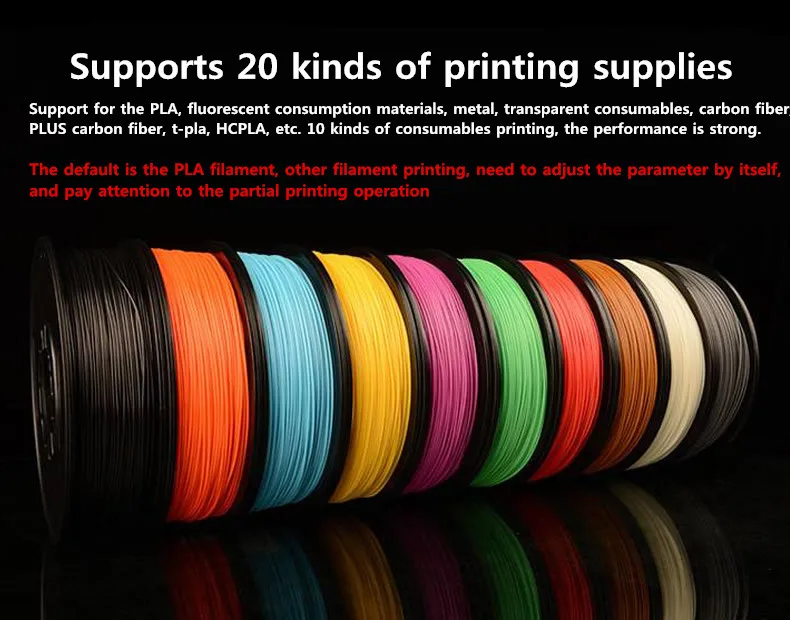 Some of the recycled PET is also used to make polyester fiber clothing.
Some of the recycled PET is also used to make polyester fiber clothing.
Nylon or polyamide (PA)
El nylon, polyamide or nylon (nylon is a registered trademark) is a type of synthetic polymer belonging to the group of polyamides. It began to be used in the textile industry because it is elastic and very durable, and also does not require ironing.
- Breaking load : High medium
- stiffness : medium, fairly flexible
- durability : very high, very resistant to impact and temperature
- maximum operating temperature : 80 - 95ºC
- Coefficient of thermal expansion (expansion) : medium height
- Density : Medium
- Easy to print : high
- extrusion temperature : 220 – 270ºC
- Heated bed required Yes
- bed temperature : 70 – 90ºC
- UV resistance : short
- Resistencia al Agua : good
- instant : No
- Chemical resistance : short
- Fatigue resistance : high
- Applications (example of use) : In addition to clothing, it is also used to make brush and comb handles, fishing rod thread, gas tanks, some mechanical parts for toys, guitar strings, zippers, fan blades, sutures in surgery , bracelets for watches, for flanges, etc.
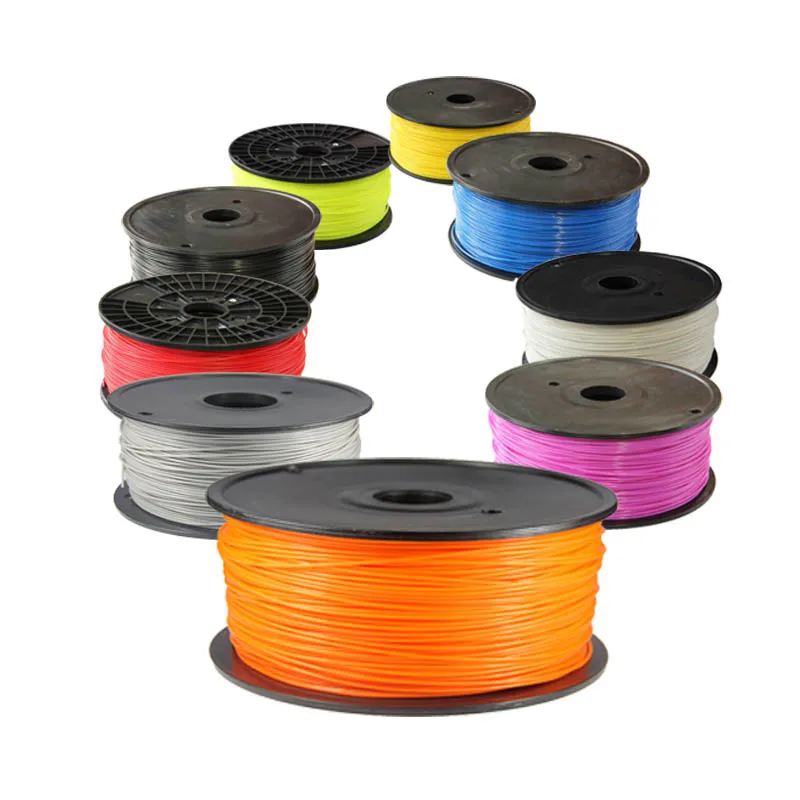 .
.
ASA
ASA stands for Acrylonitrile Styrene Acrylate. , an amorphous thermoplastic with some resemblance to ABS, although it is an acrylic elastomer and ABS is a butadiene elastomer. This material is more UV resistant than ABS, so it can be useful for parts that will be exposed to the sun.
- Breaking load : Medium
- hardness : medium
- durability : high
- maximum operating temperature : 95°C
- Coefficient of thermal expansion (expansion) : medium height
- Gravity : medium-low
- Easy to Print : High Medium
- extrusion temperature : 235 – 255ºC
- Heated bed required Yes
- bed temperature : 90 – 110ºC
- UV resistance : high
- Resistencia al Agua : short
- instant : No
- Chemical resistance : short
- Fatigue resistance : short
- Applications (use case) : many outdoor plastic devices manufactured by ASA, as well as sunglasses frames, some plastic products for swimming pools, etc.
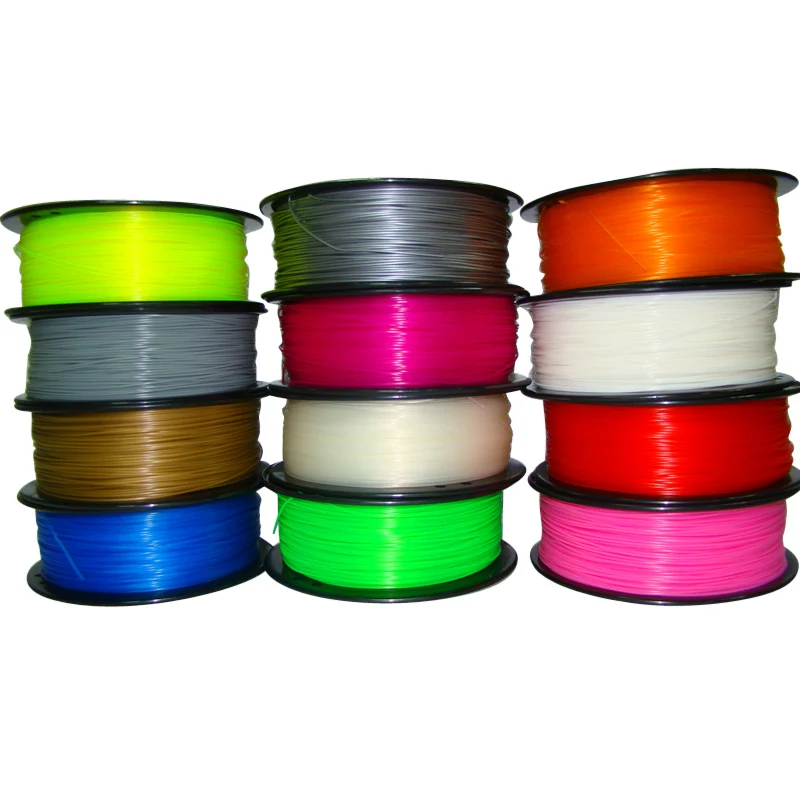
PET-G
This type of filament is also a popular thermoplastic in 3D printing and additive manufacturing. PETG is a glycol polyester, that combines some of the advantages of PLA, such as the ease of printing, with the durability of ABS. It is one of the most widely used plastics in the world and many things that surround us are made from it.
- Breaking load : Medium
- hardness : medium-low
- durability : high medium
- maximum operating temperature : 73°C
- Coefficient of thermal expansion (expansion) : under
- Density : Medium
- Easy to print : high
- extrusion temperature : 230 – 250ºC
- Heated bed required Yes
- bed temperature : 75 – 90ºC
- UV resistance : short
- Resistencia al Agua : high
- instant : No
- Chemical resistance : high
- Fatigue resistance : high
- Applications (use example) : Also used for containers similar to PET containers such as plastic bottles, glasses, cups and plates, containers for chemical or cleaning products, etc.
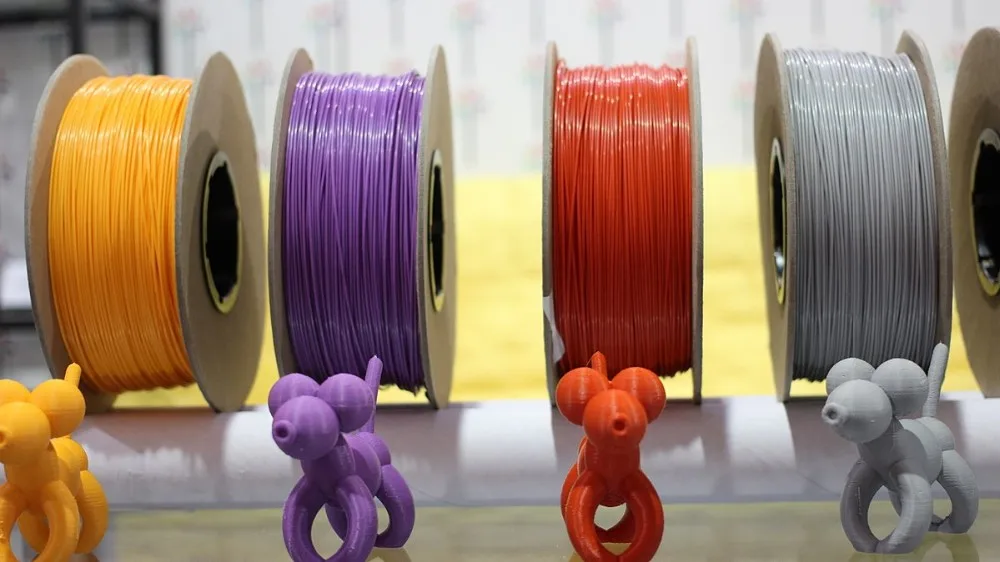
PC or Polycarbonate
El PC or Polycarbonate This is a thermoplastic that is very easy to mold and work with to give the desired shape. It is widely used today and has excellent properties such as heat resistance and impact resistance.
- Breaking load : high
- hardness : medium
- durability : high
- maximum operating temperature : 121°C
- Coefficient of thermal expansion (expansion) : short
- Density : Medium
- Easy to print : Medium
- extrusion temperature : 260 – 310ºC
- Heated bed required Yes
- bed temperature : 80 – 120ºC
- UV resistance : short
- Resistencia al Agua : short
- instant : No
- Chemical resistance : short
- Fatigue resistance : high
- Applications (example of use) : for mineral water bottles, barrels, lids in architecture, agriculture (greenhouses), toys, stationery such as pens, rulers, CDs and DVDs, cases for electronic devices , filters, transport boxes, protective shields, vehicles, baking dishes, etc.

High Performance Polymers (PEEK, PEKK)
PEEK, or Polyether Ether Ketone, is a high purity material with low VOC or VOC content and low gas emissions. In addition, it has very good properties and is a high performance semi-crystalline thermoplastic for professional use. There is a variant of the family called PEKK, more effective, with a different structure, since instead of 1 ketone and 2 esters, it has 2 ketones and 1 ether.
- Breaking load : high
- hardness : high
- durability : high
- maximum operating temperature : 260°C
- Coefficient of thermal expansion (expansion) : short
- Density : Medium
- Easy to print : short
- extrusion temperature : 470°C
- need heated bed Yes
- bed temperature : 120 – 150ºC
- UV resistance : High medium
- Resistencia al Agua : high
- instant : No
- Chemical resistance : high
- Fatigue resistance : high
- Applications (use case) : bearings, piston parts, pumps, valves, compression rings, cable insulation, electrical system insulation, etc.
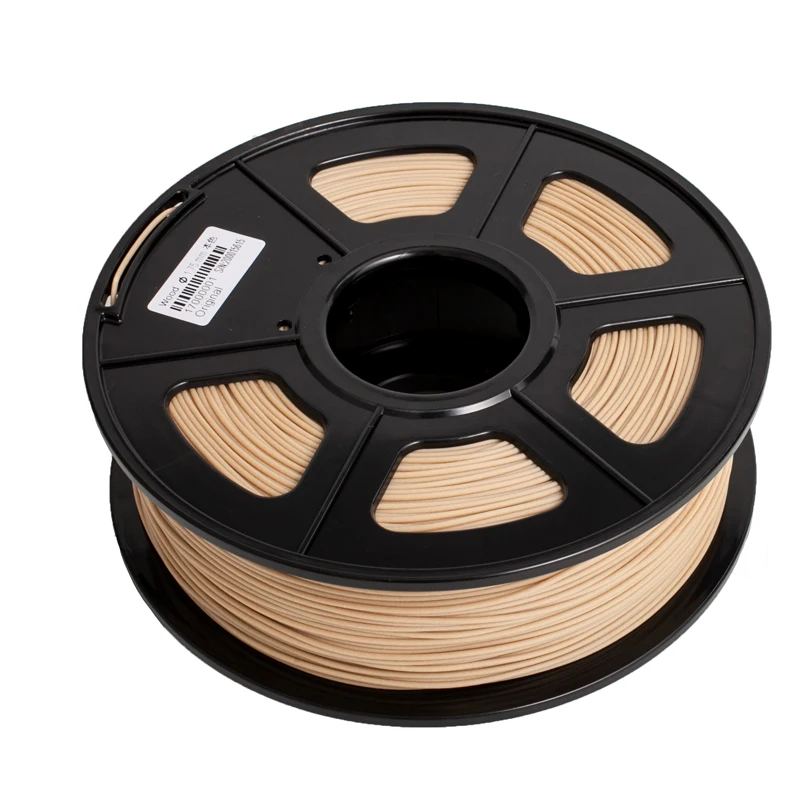
Polypropylene (pp)
El polypropylene This is a very common thermoplastic polymer, partially crystalline. It is obtained by polymerization of propylene. It has good thermal and mechanical properties. It is incorporated into thermoplastic elastomers or TPEs such as Ninjaflex etc.
- Breaking load : short
- stiffness : low, very flexible and soft
- durability : high
- maximum operating temperature : 100°C
- Coefficient of thermal expansion (expansion) : high
- Density : short
- Easy to Print : Medium-Low
- extrusion temperature : 220 – 250ºC
- Heated bed required Yes
- bed temperature : 85 – 100ºC
- UV resistance : short
- Resistencia al Agua : high
- instant : No
- Chemical resistance : short
- Fatigue resistance : high
- Applications (example of use) : can be used for toys, bumpers, fuel bottles and cans, microwave or freezer resistant food containers, tubes, sheets, profiles, CD/DVD envelopes and cases, laboratory microcentrifuge tubes and etc.

Thermoplastic polyurethane (TPU)
El TPU or thermoplastic polyurethane This is a variant of polyurethanes. It is a type of flexible polymer that does not require vulcanization to process like other similar plastics. This is fairly new material, first introduced in 2008.
- Breaking load : low-medium
- hardness : low, excellent flexibility and elasticity, soft
- durability : high
- maximum operating temperature : 60 – 74ºC
- Coefficient of thermal expansion (expansion) : high
- Density : Medium
- Easy to print : Medium
- extrusion temperature : 225 – 245ºC
- heated bed required : no (optional)
- bed temperature : 45 – 60ºC
- UV resistance : short
- Resistencia al Agua : short
- instant : No
- Chemical resistance : short
- Fatigue resistance : high
- Applications (use case) : the famous silicone cases for smartphones are mainly made of this material (at least flexible ones).
 It is also used for coating flexible cables, pipes and flexible hoses, in the textile industry, as a coating for some parts such as vehicle door handles, gear levers, etc., shoe soles, cushioning, etc.
It is also used for coating flexible cables, pipes and flexible hoses, in the textile industry, as a coating for some parts such as vehicle door handles, gear levers, etc., shoe soles, cushioning, etc.
Photopolymerization resins
3D printers that they use resin, instead of filaments like DLP, SLA, etc., they need resin liquid to create objects. In addition, as with threads, there are plenty to choose from. Among the main categories:
- Standard : These are transparent resins such as white and gray, although there are other shades such as blue, green, red, orange, brown, yellow, etc. It is great for prototyping or small gadgets for home use, but they are not suitable for creating final products where higher quality is required or for professional use. The positive is that they have a good finish in terms of smoothness, they can be painted. They can be suitable for toys or art figurines.
- mammoth : they are not very common, although the finish of these surfaces is not that bad.
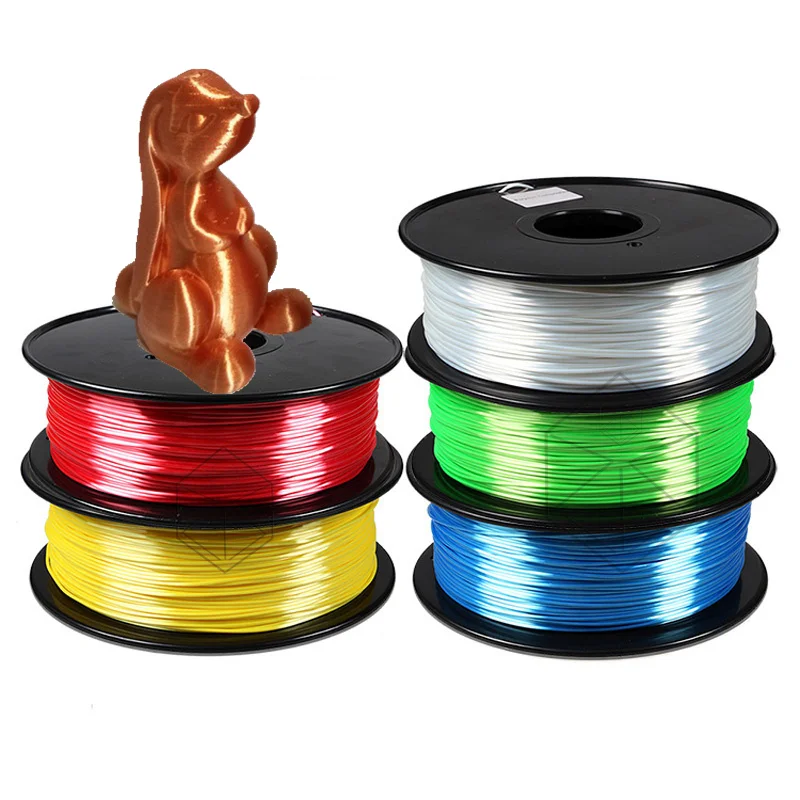 As the name suggests, these resins are designed for printing really large items.
As the name suggests, these resins are designed for printing really large items. - Clear : These are common enough for home use as well as for industrial use as people love clear parts. These resins are waterproof, ideal for small objects, with excellent quality, smooth and hard surfaces.
- Hard: These types of resins are very popular among professionals, for example for engineering applications, because they have more interesting properties than standard resins. Also, as their name suggests, they are harder and more durable.
- high detail : Slightly different from conventional stereolithography as it is used in more advanced 3D printers such as the PolyJet. It works by injecting very thin jets in layers onto the build platform and exposing them to UV light to harden them. The result is a perfect surface with the highest level of detail, even if it's the smallest details.
- medical grade : These resins are used in medical applications such as making implants such as personalized dental implants, etc.
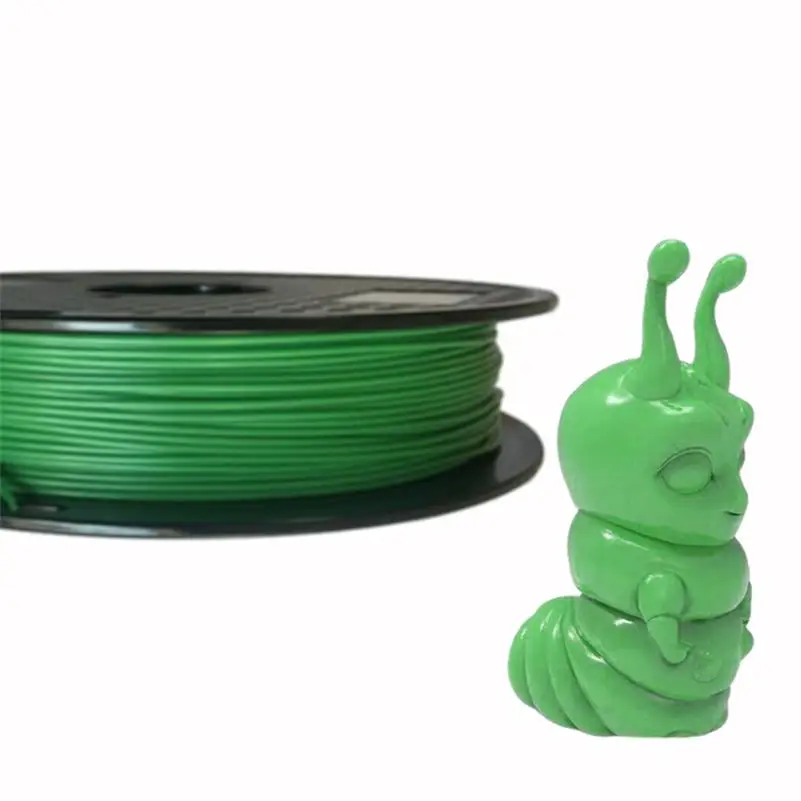
Advantages and disadvantages of
resinAbout Advantages and disadvantages of resin, before threads we have:
- advantage:
- Best resolution
- Quick print process
- Strong and durable parts
- faults :
- More expensive
- not so flexible
- something more complex
- Vapors or contact with them may be hazardous as some are toxic.
- The number of available models is less than that of the filament.
How to choose the right resin
When to choose the right resin For your 3D printer you should look at the following parameters:
- Tensile Strength : This characteristic is important if the part must withstand tensile forces and a strong part is required.
- Elongation : If necessary, the resin should give pieces that can stretch without breaking, although flexibility is not the best.
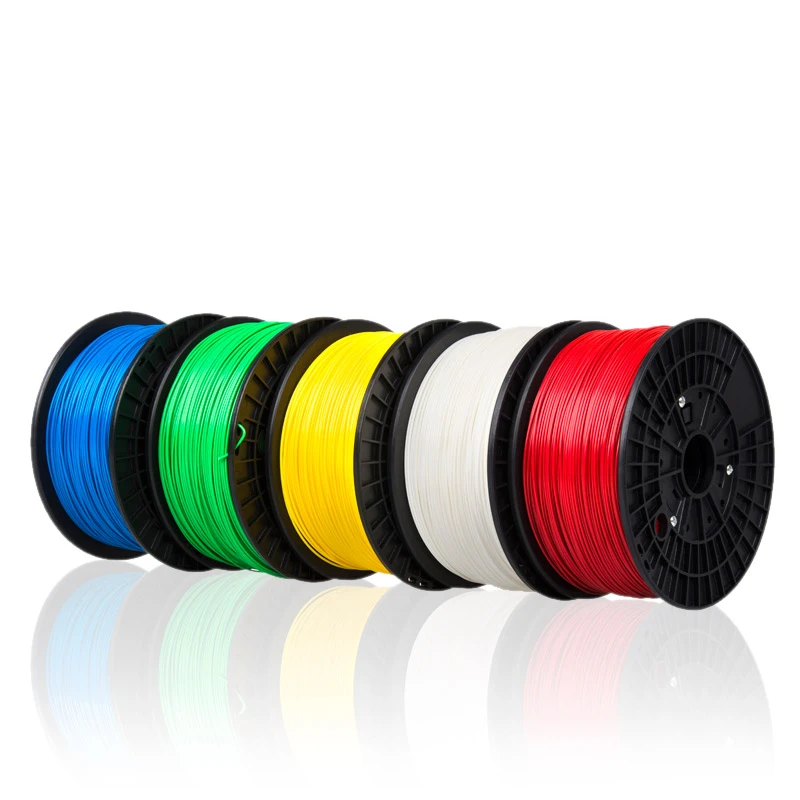
- Water absorption: If the product must be water resistant, you should pay attention to the characteristics of the resin you purchased in this regard.
- Finish Quality : These resins produce a smooth finish, but not all of them are of the same quality as we have seen in the types. You will need to know if you prefer a cheaper resin or a more expensive high detail one.
- durability : it is important that the structures are strong and long lasting, especially if they are used for cases and other similar items.
- Transparency : if you want transparent parts, stay away from mammoth or grey/standard resins.
- costs : Resins are not cheap, but there is a wide range of prices to choose from, from more affordable to more expensive and advanced. You will need to evaluate how much you want to spend and choose the one that best suits your budget.
Other materials
Of course, so far we have considered materials that are mainly used in the home, although some of them could be used for professional or industrial use.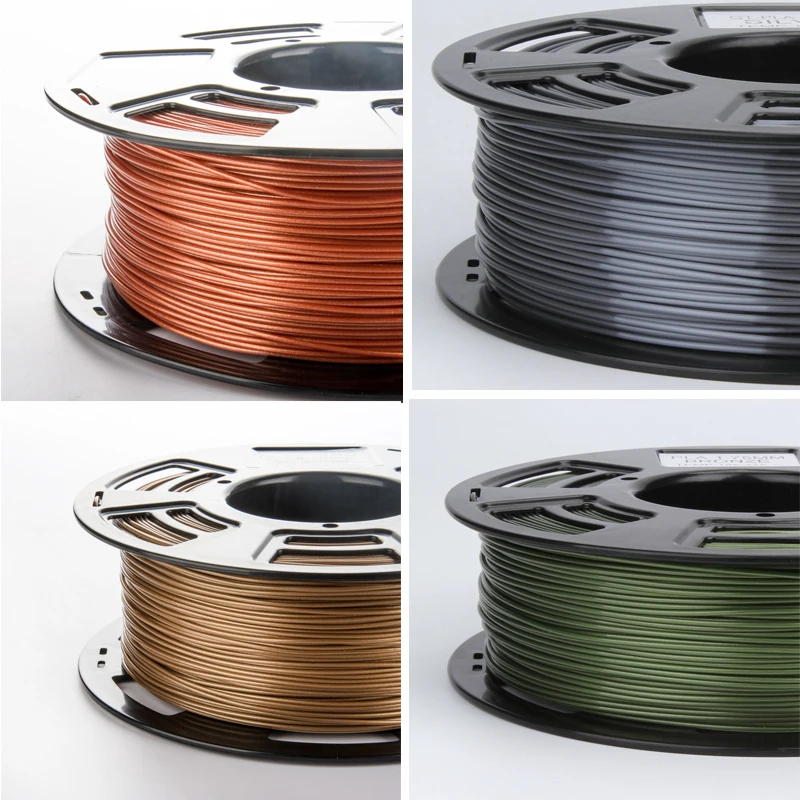 However, there are other special materials for very specific applications of and that they can only use the most advanced and expensive 3D printers used in companies.
However, there are other special materials for very specific applications of and that they can only use the most advanced and expensive 3D printers used in companies.
Fillers (metal, wood,…)
There are also filling consumables, mainly from wood and metal fibers . These are usually 3D printers for industrial use and with somewhat more advanced systems, especially metal ones. These consumables are also not easy to find, as they are focused on professional use.
composites
composites or composite resins they are synthetic materials heterogeneously mixed to form compounds. For example, fiberglass, or fibers, as well as fiberglass themselves, Kevlar, Zylon, etc. In terms of their applications, they can be used to create very light and strong parts, and even for motorsport, aviation, aerospace, bulletproof vests and other military applications, etc.
hybrid materials
These types of materials combine organic and inorganic compounds to improve the properties of the materials used in its composition, so that they complement each other and create synergies. They can have a wide variety of applications such as optics, electronics, mechanics, biology, etc.
They can have a wide variety of applications such as optics, electronics, mechanics, biology, etc.
Ceramics
There are 3D printers that can use ceramics, as is the case with alumina (aluminum oxide) , aluminum nitride, zirconite, nutrient silicon, silicon carbide, etc. An example of such 3D printers is Cerambot, which also has an affordable price for home use among other industrial models. These types of materials have very good thermal, chemical, and electrical (insulating) properties, which is why they are used in the electric power, aerospace, and other industries.
Soluble materials (PVA, BVO…)
Soluble materials , as their name suggests, are those (solutes) that, when in contact with another liquid (solvent), form a solution. Some of them can be used in additive manufacturing, such as BVOH, PVA, etc. BVOH (butenediol-vinyl alcohol copolymer), like Verbatim, is a water-soluble thermoplastic filament for FFF printers.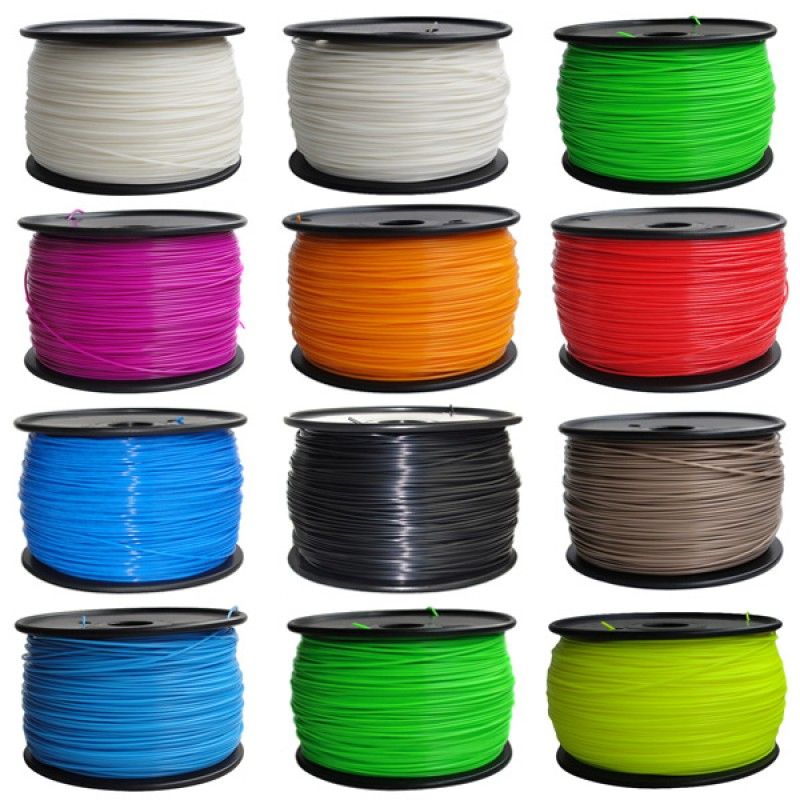 PVA (polyvinyl alcohol) is another water-soluble filament widely used in 3D printing. For example, they can be used to support parts that can then be easily removed by dissolving in water.
PVA (polyvinyl alcohol) is another water-soluble filament widely used in 3D printing. For example, they can be used to support parts that can then be easily removed by dissolving in water.
food and biomaterials
Of course, there are also 3D printers capable of printing edible items, vegetable fibers, sugar, chocolate, proteins and other types of nutrients. Biomaterials for medical use such as tissues or organs can also be printed, although this is still under development. Obviously, many of these biomaterials are not commercially available, but are made specifically for the laboratory. It is also not common to find food items, although they are becoming more common in the professional catering industry.
concrete
Finally, there are also 3D printers that can print on building materials such as cement or concrete. These types of printers are usually very large and are capable of printing large architectural structures such as houses.